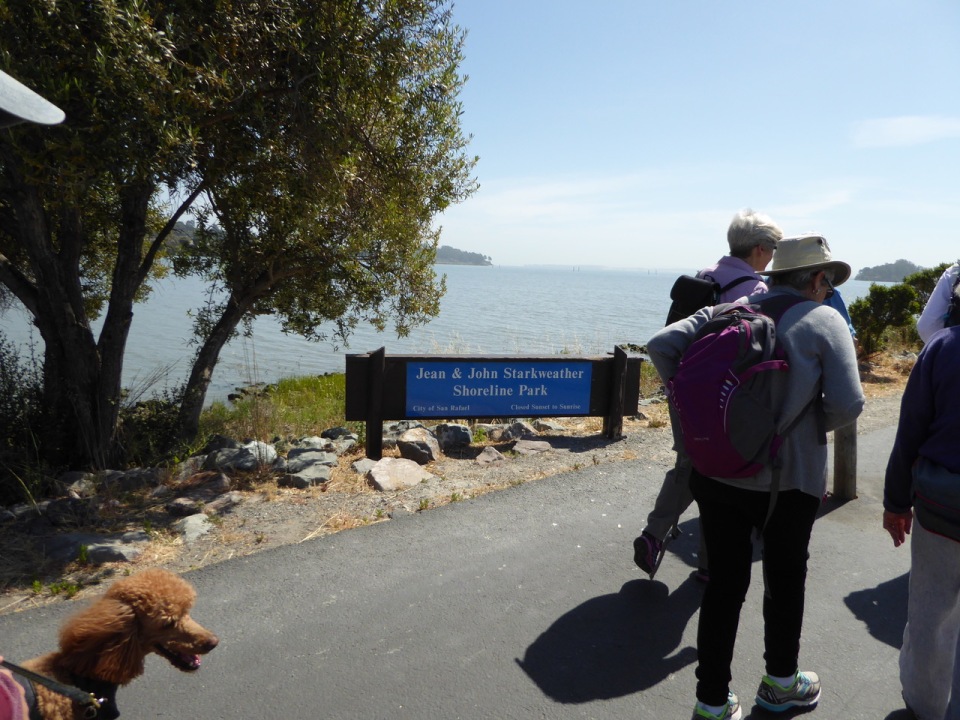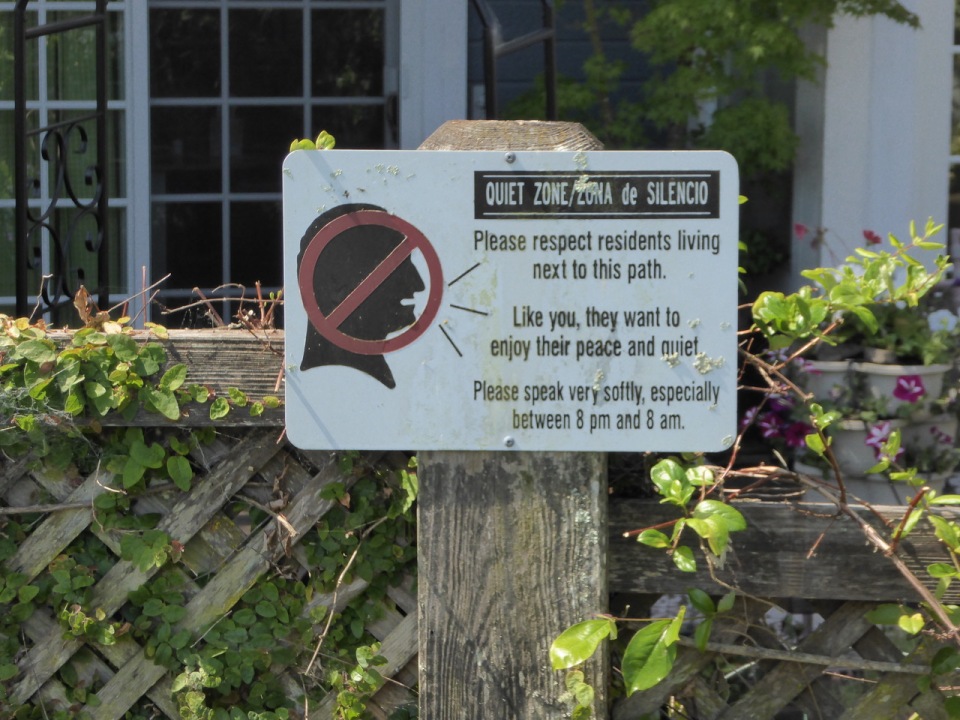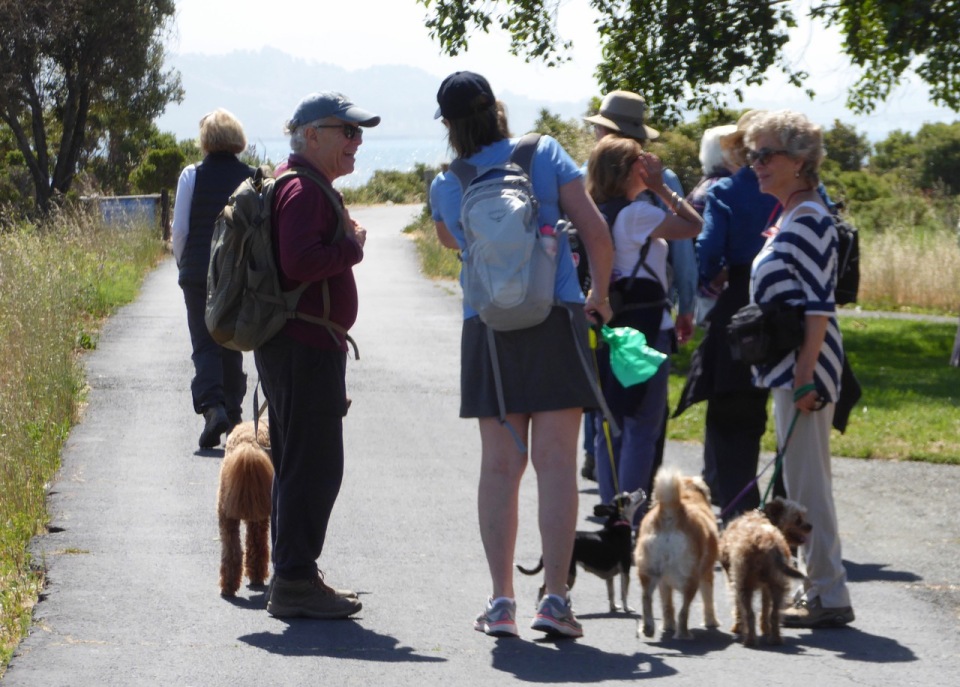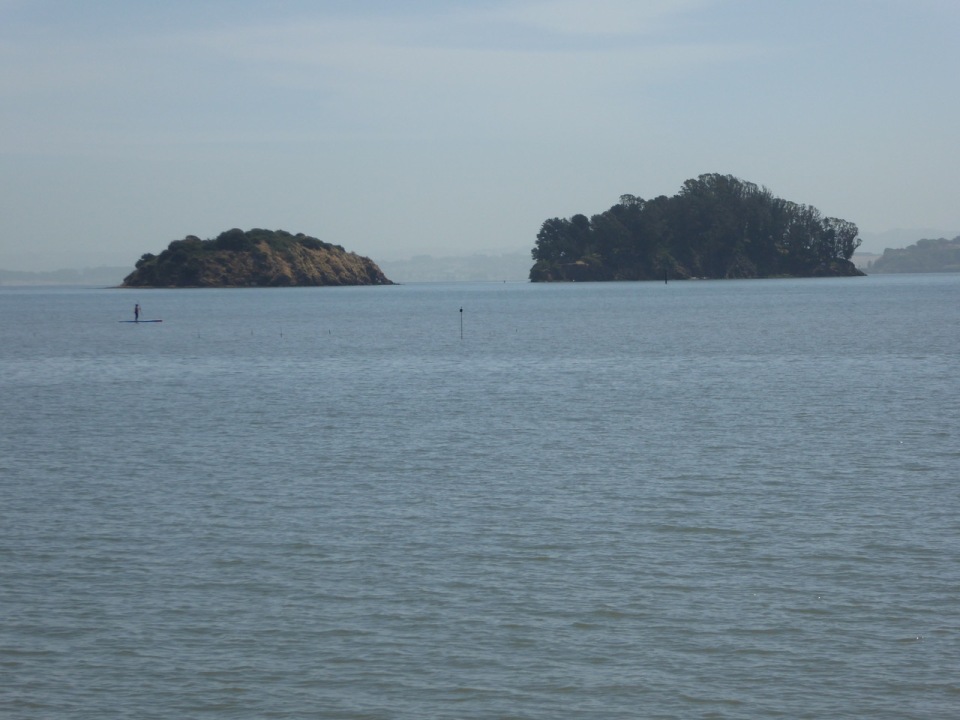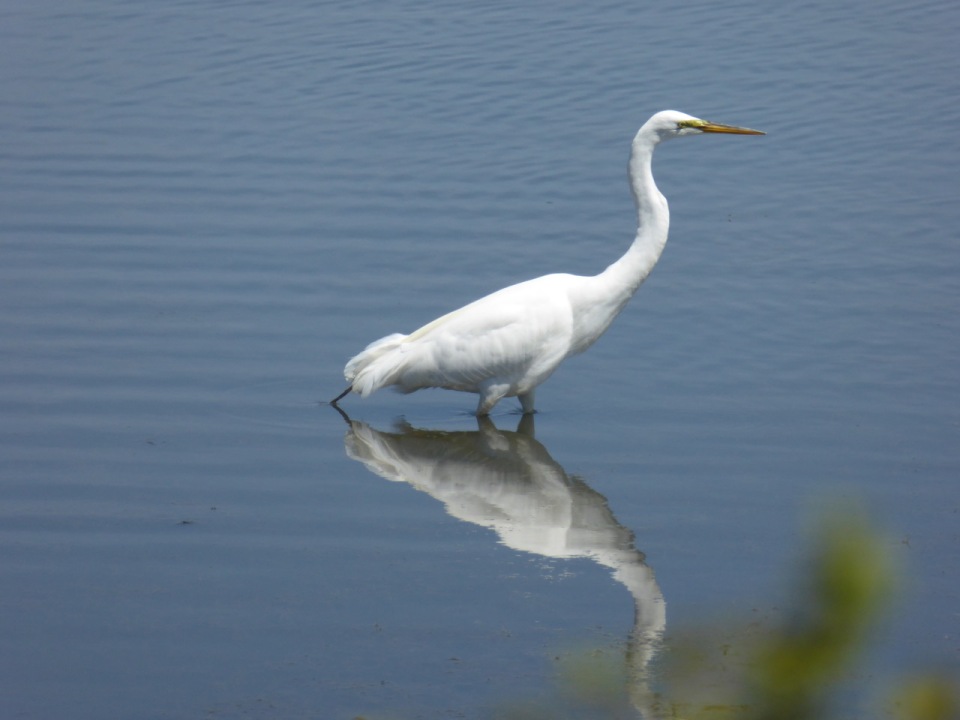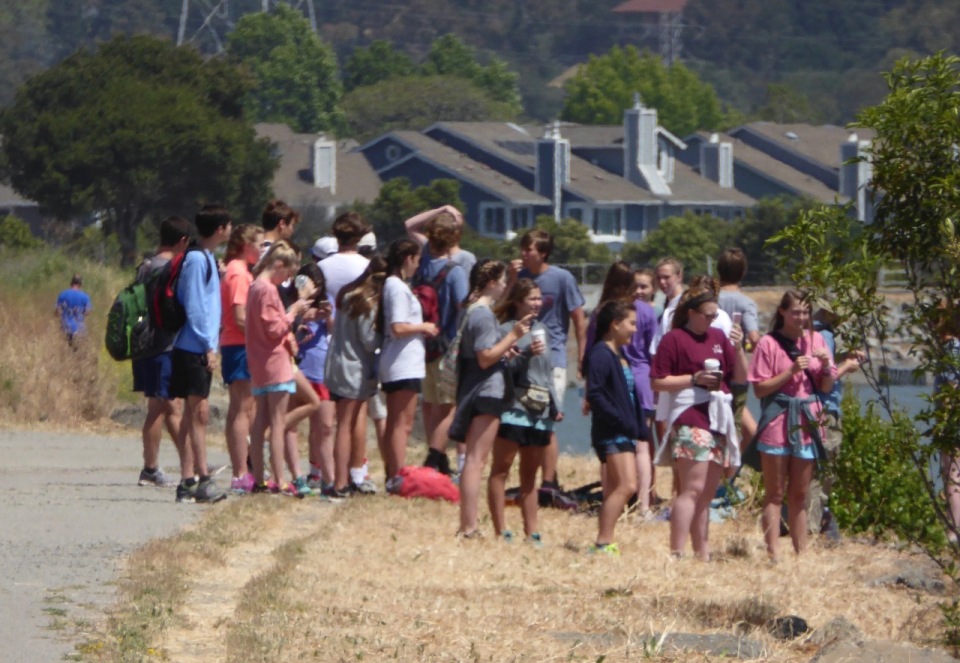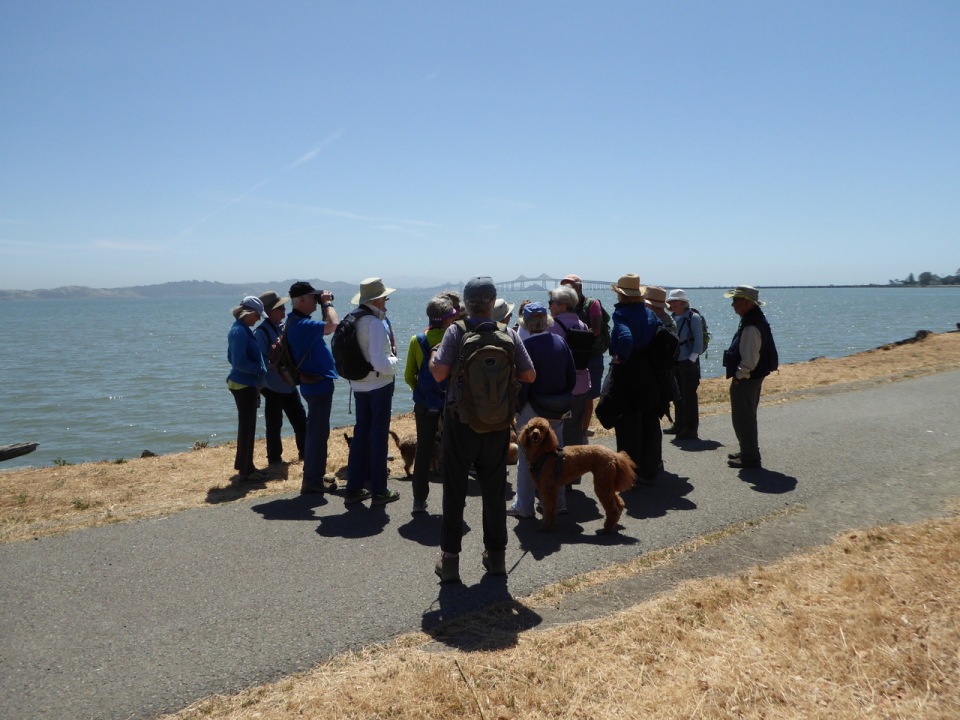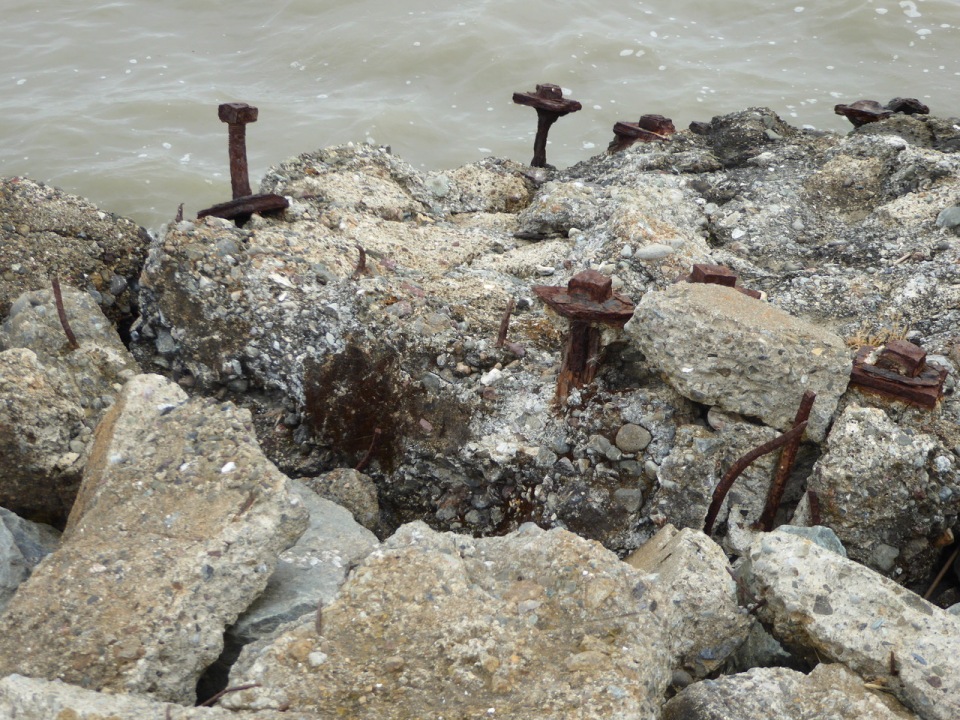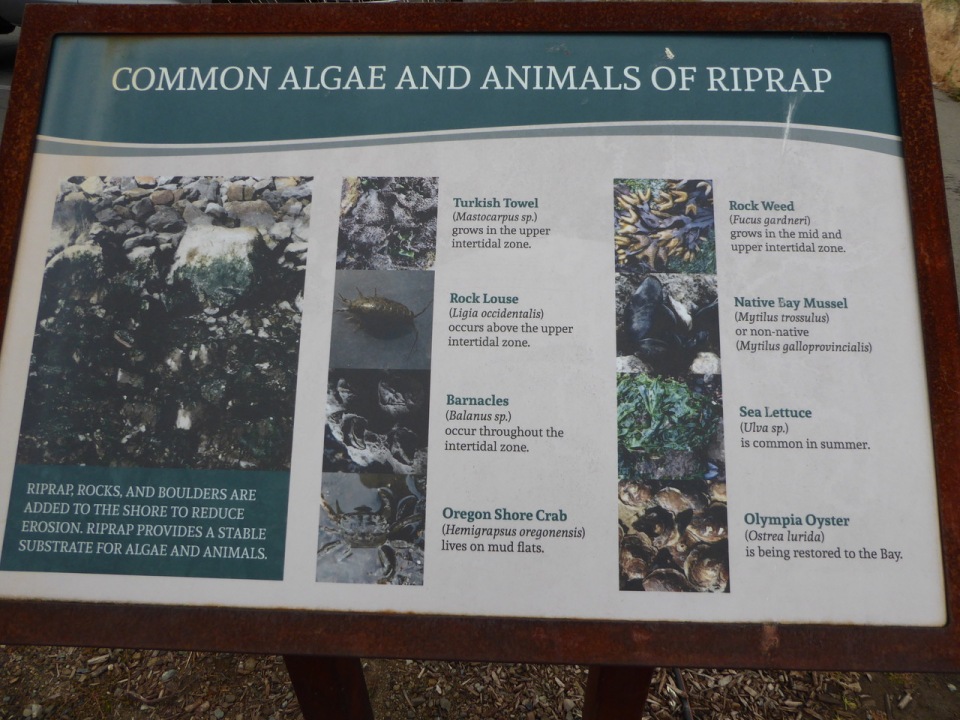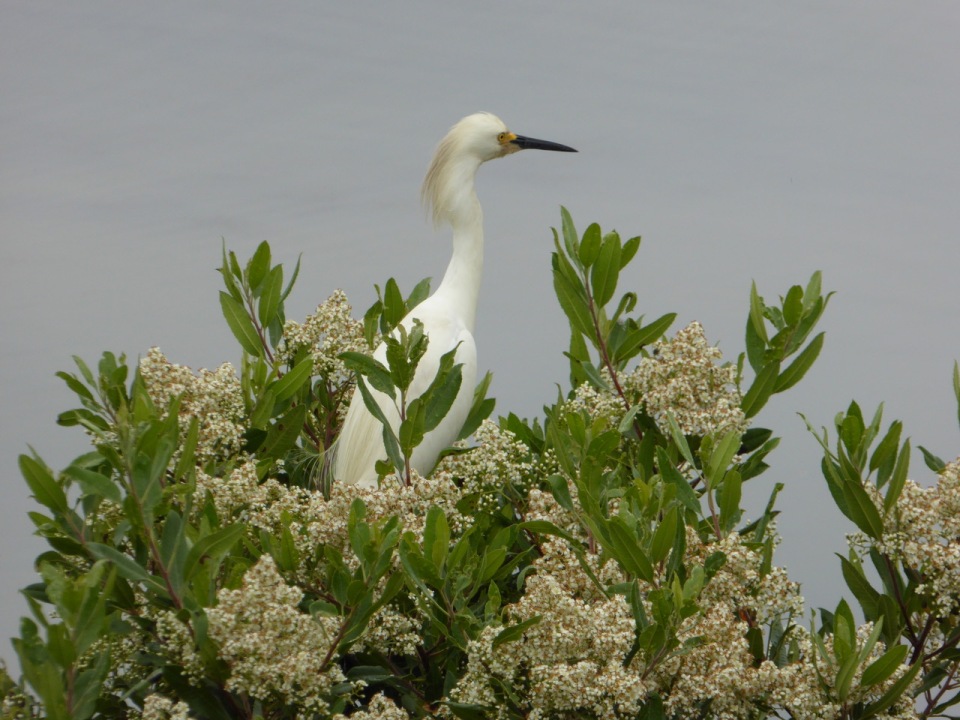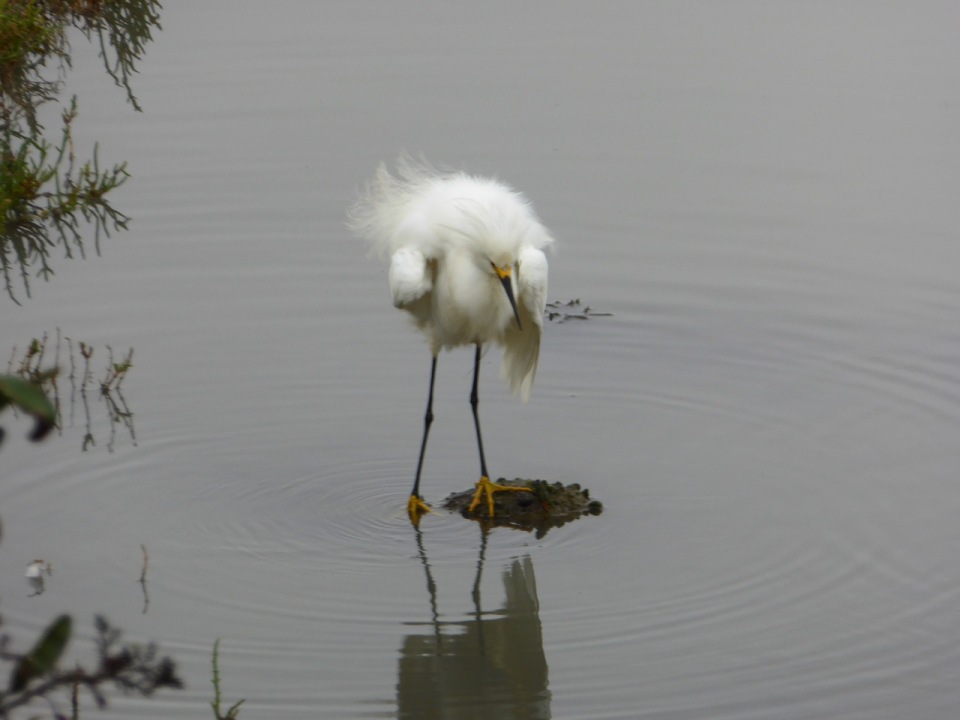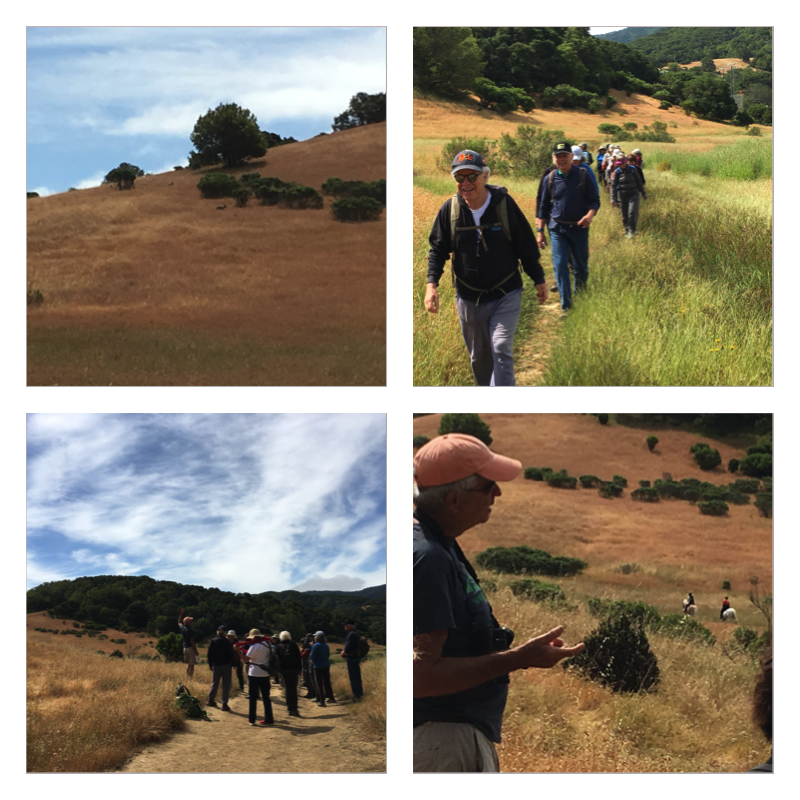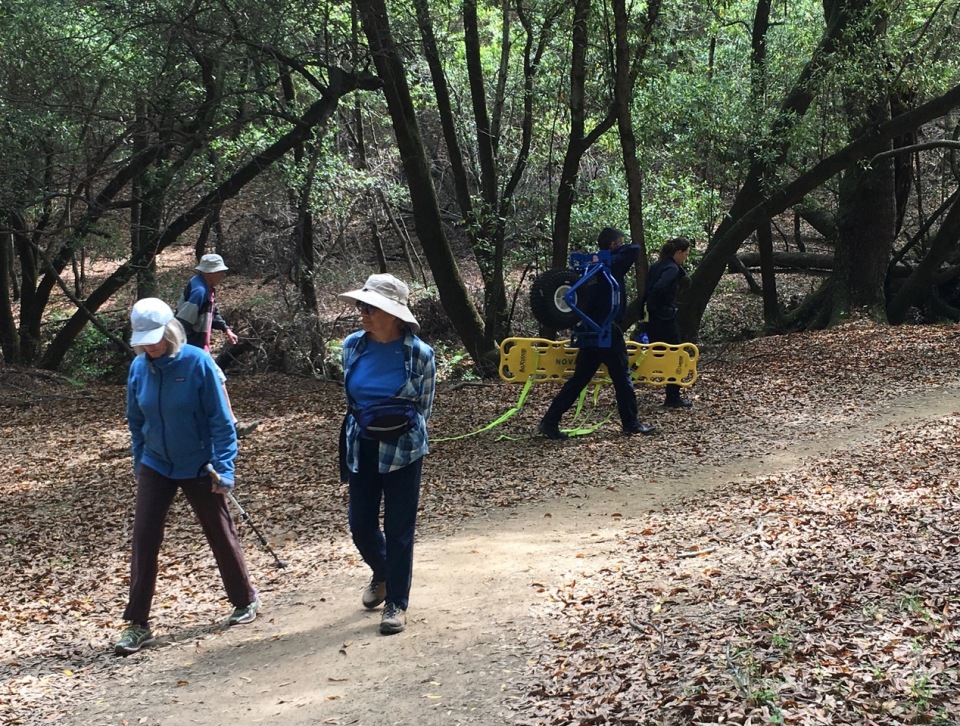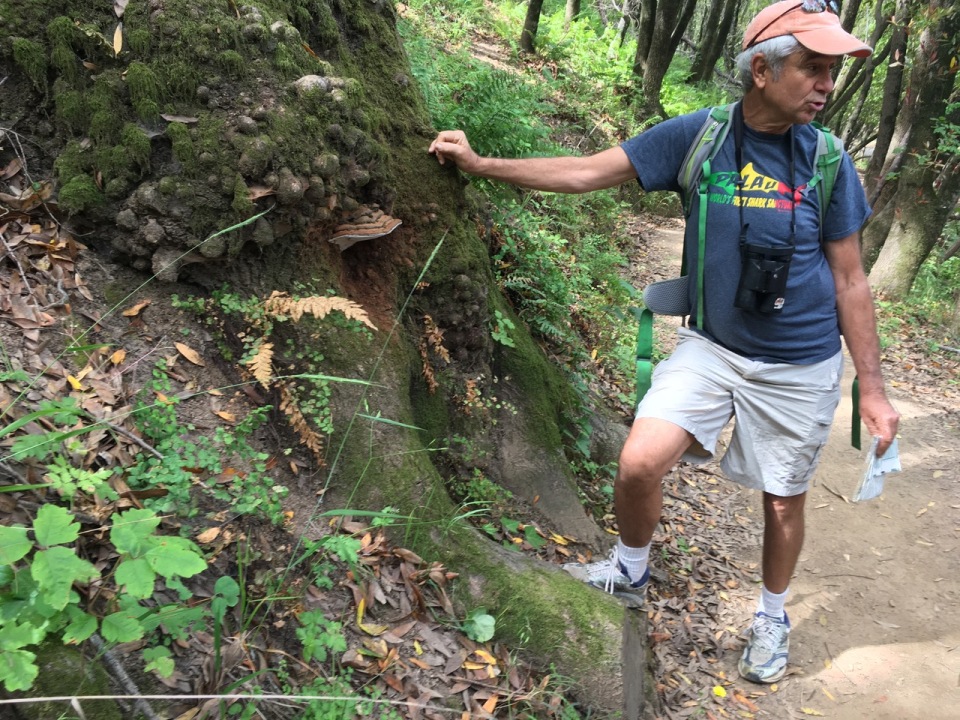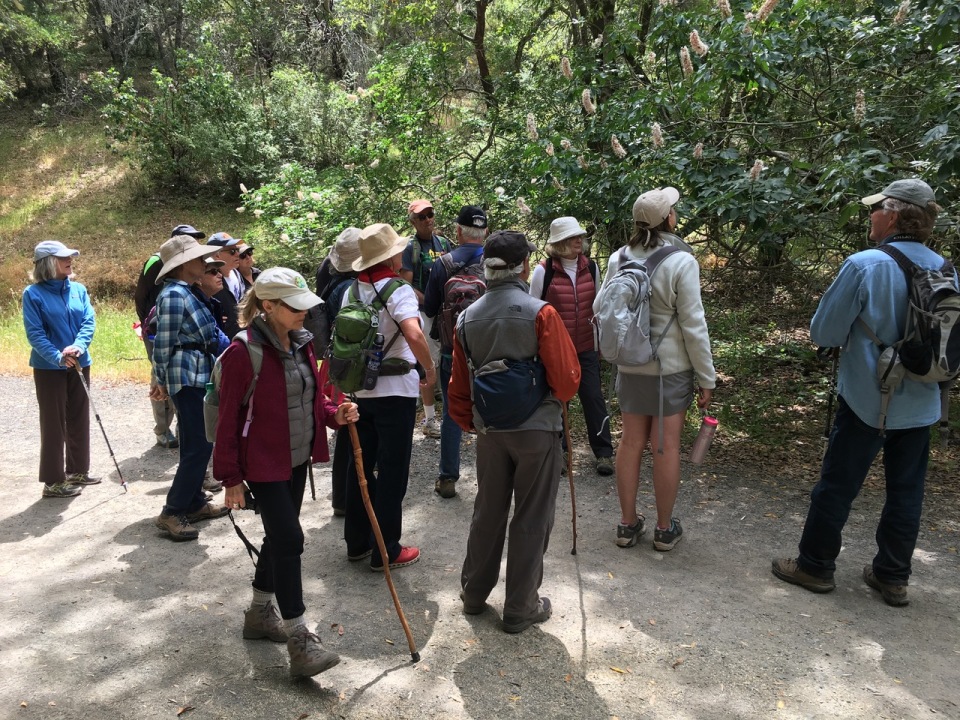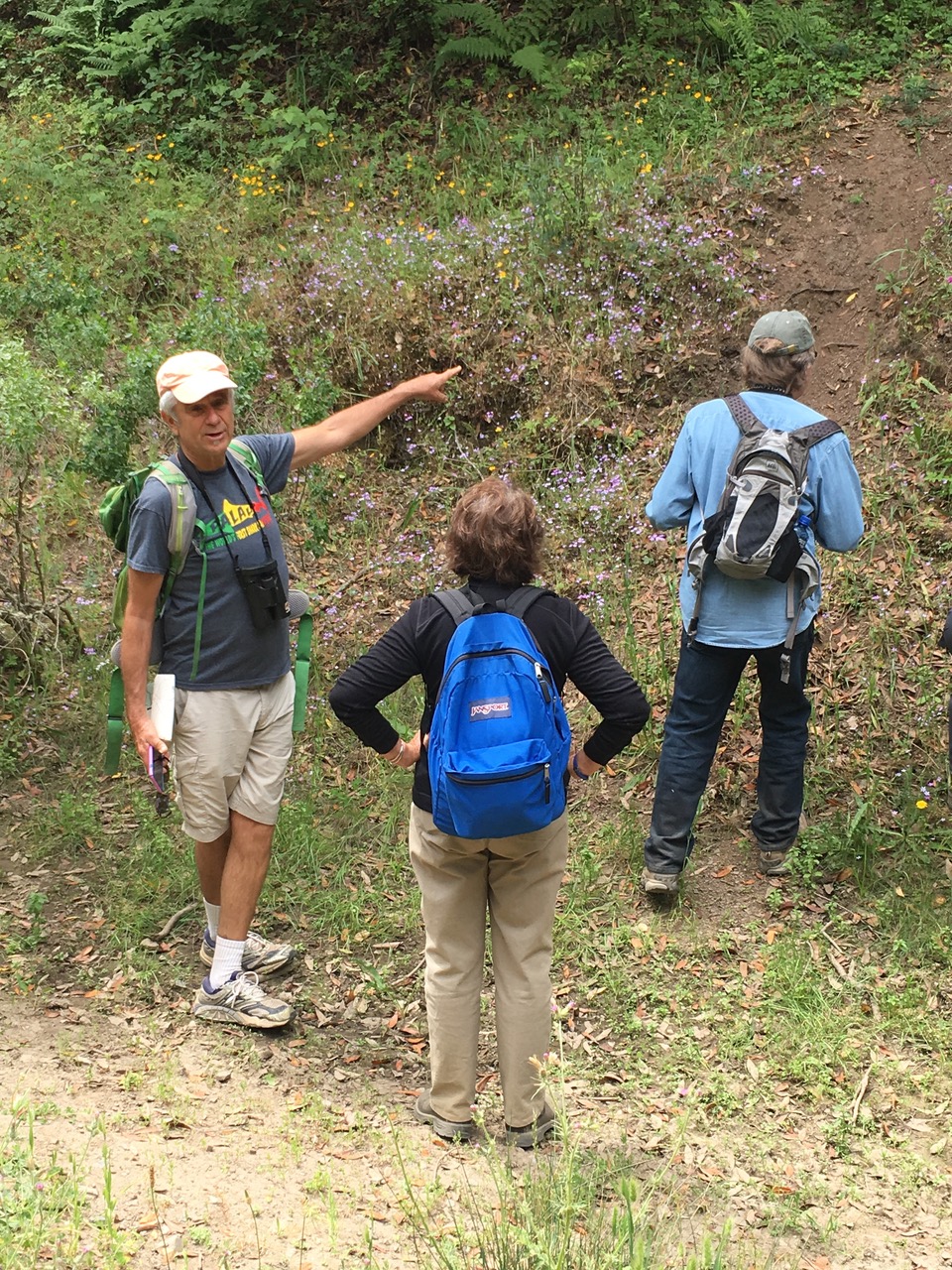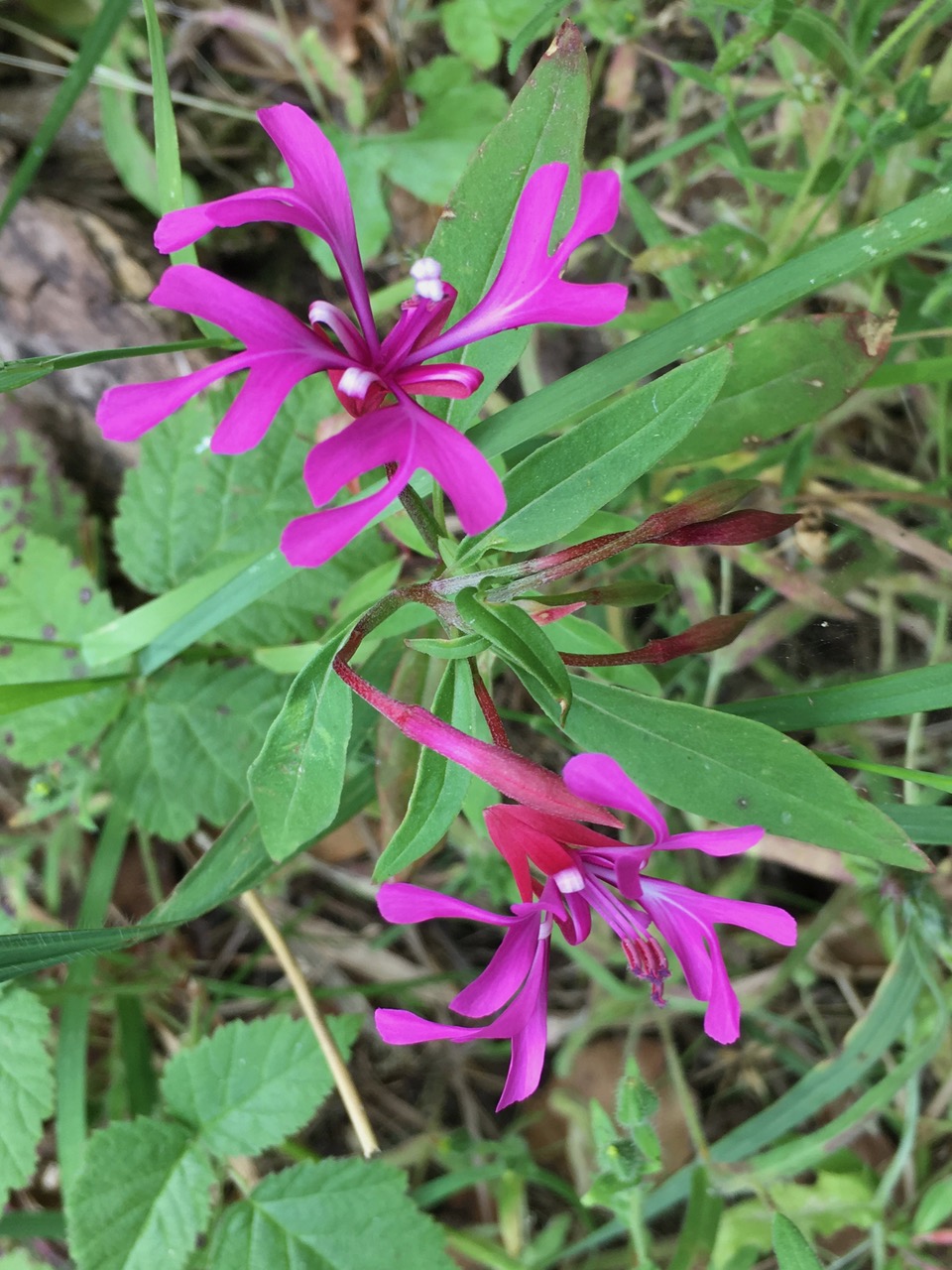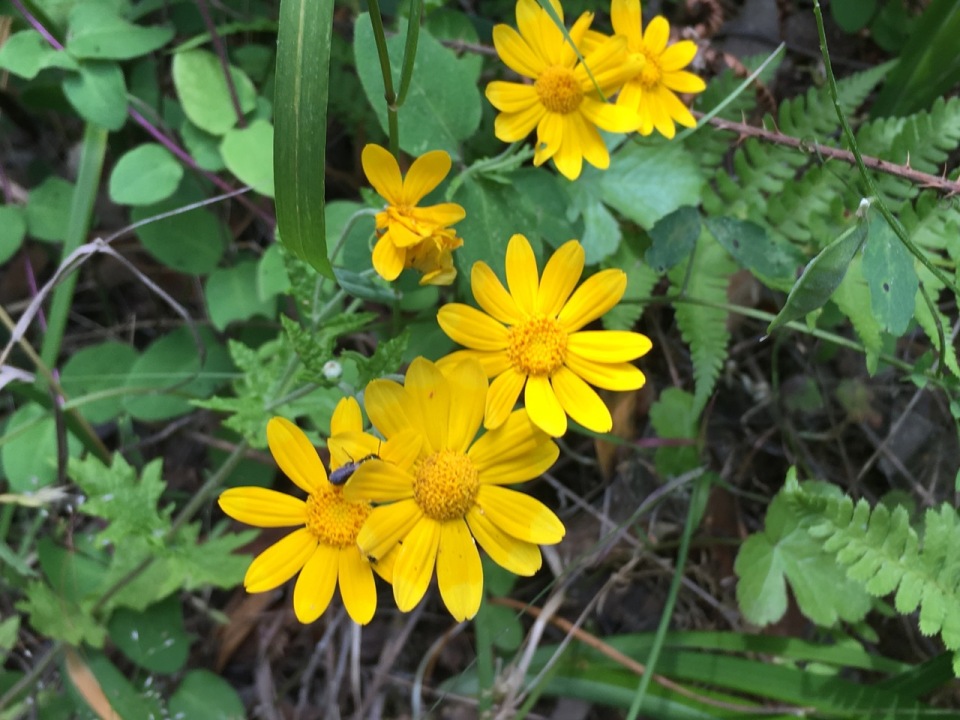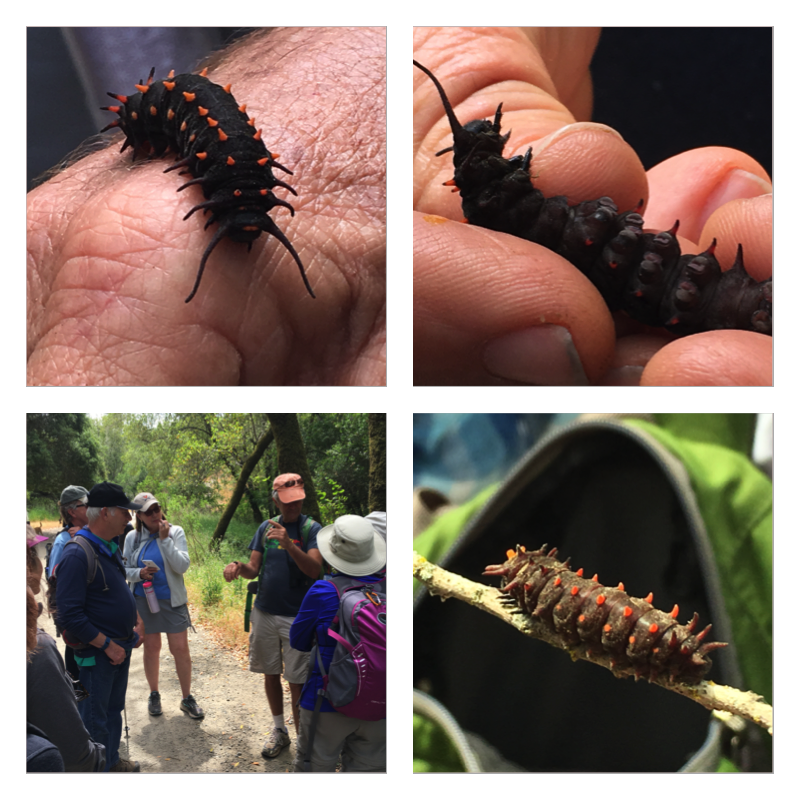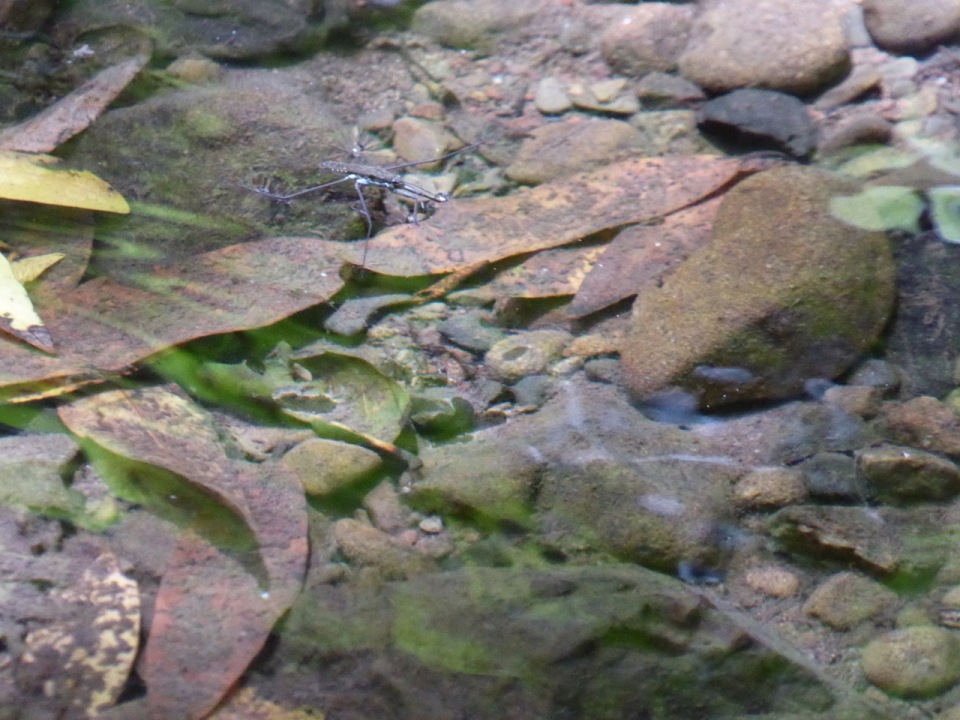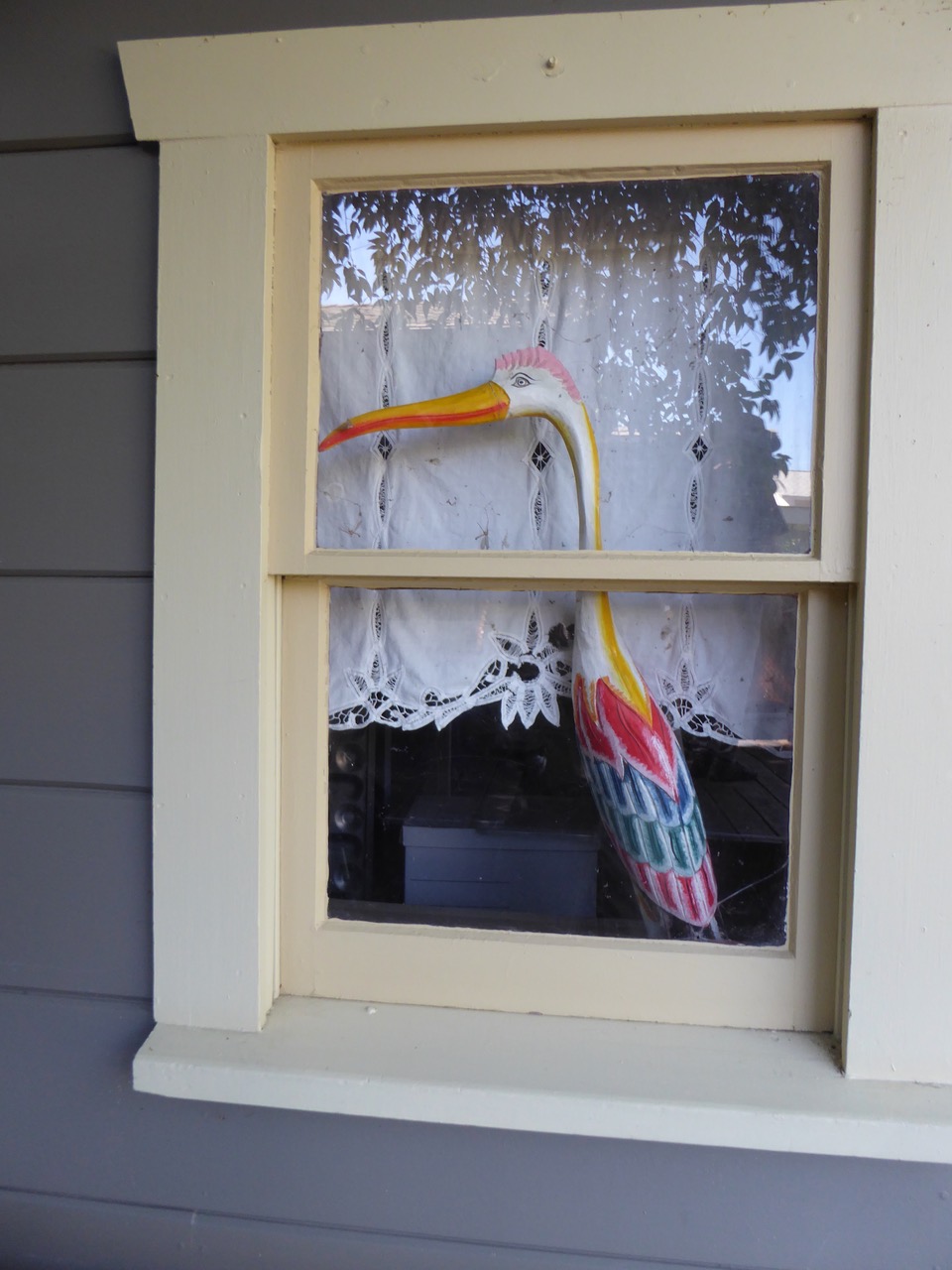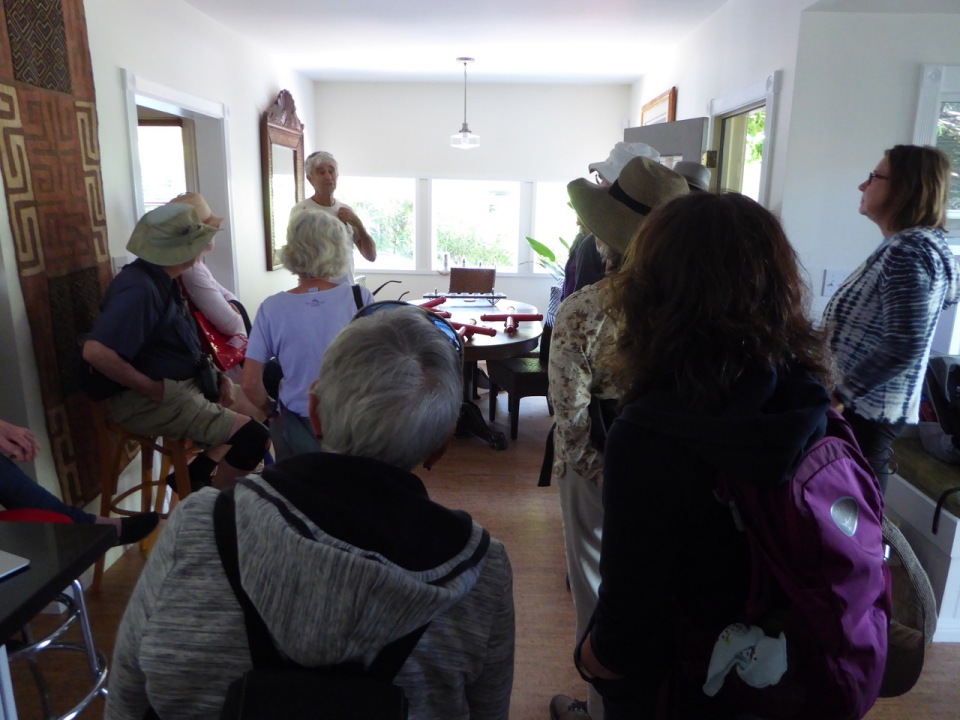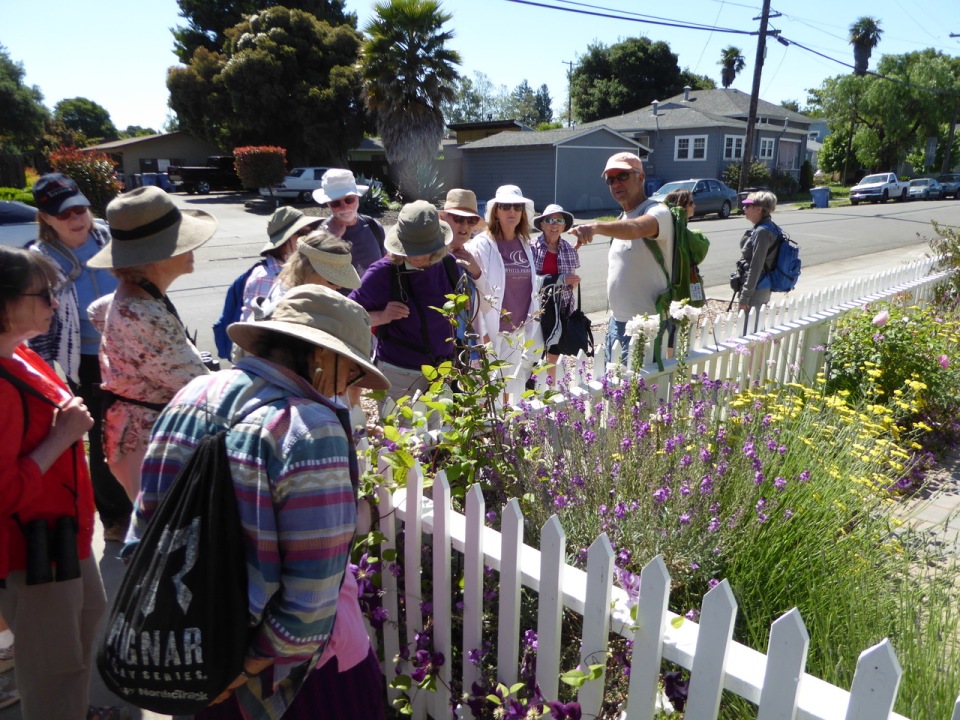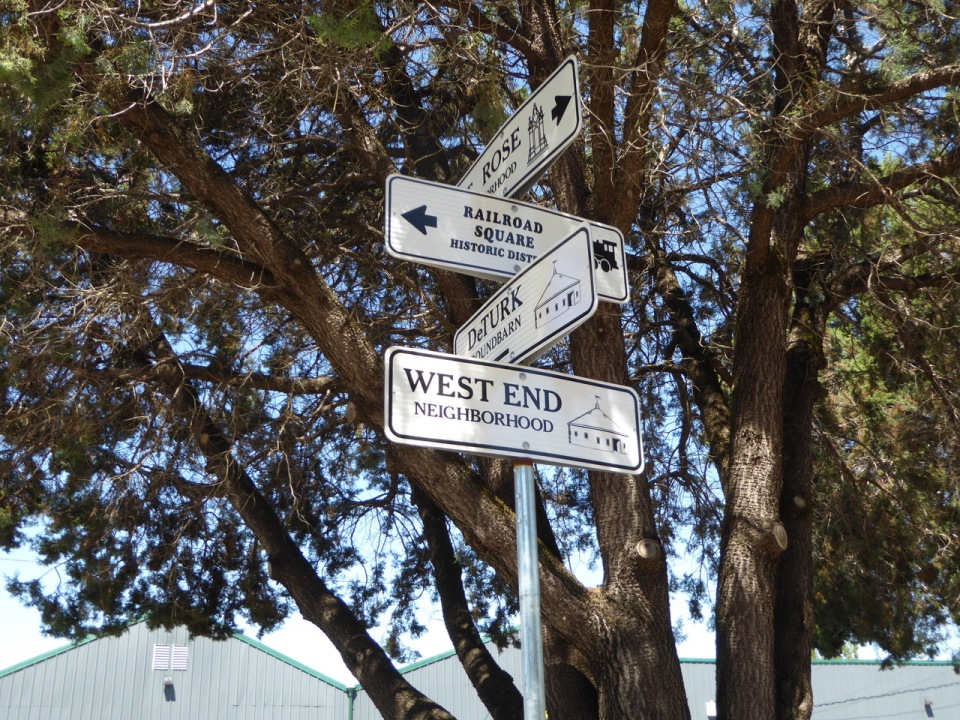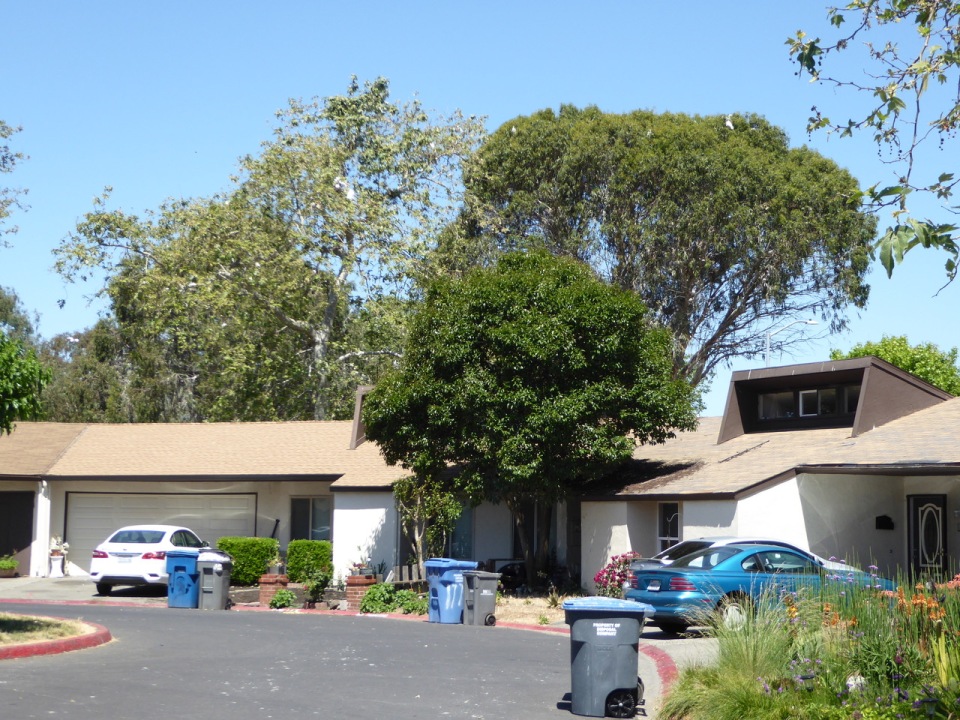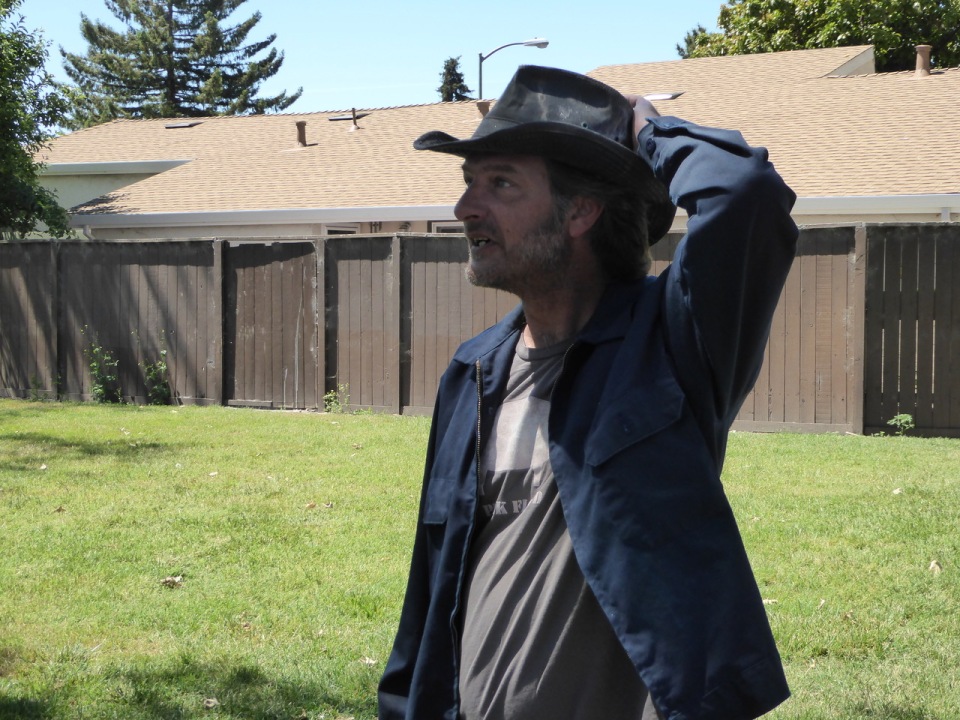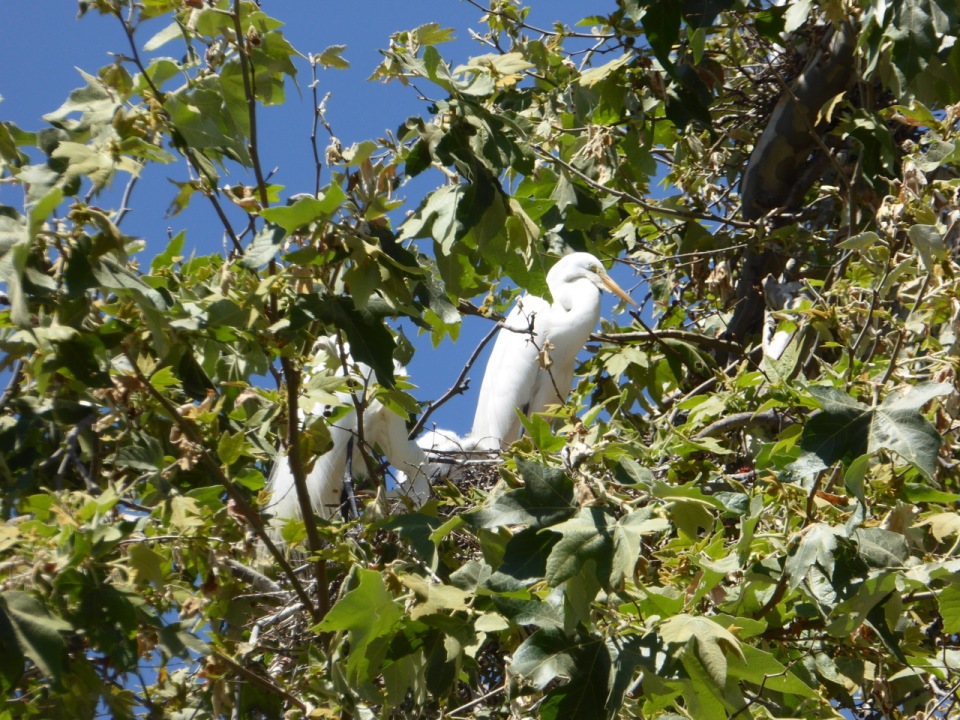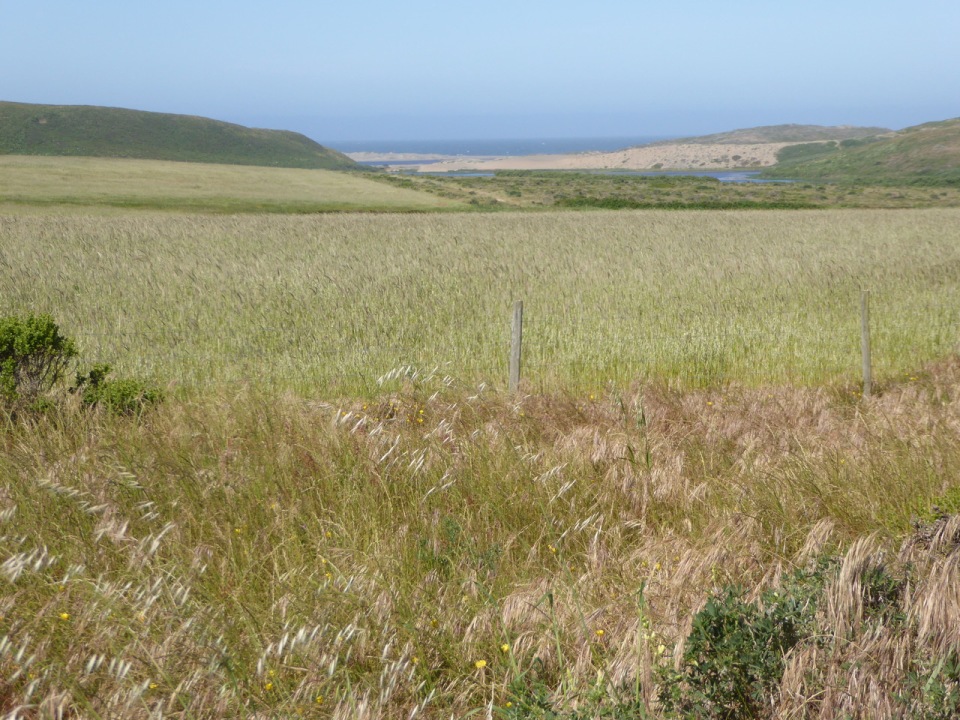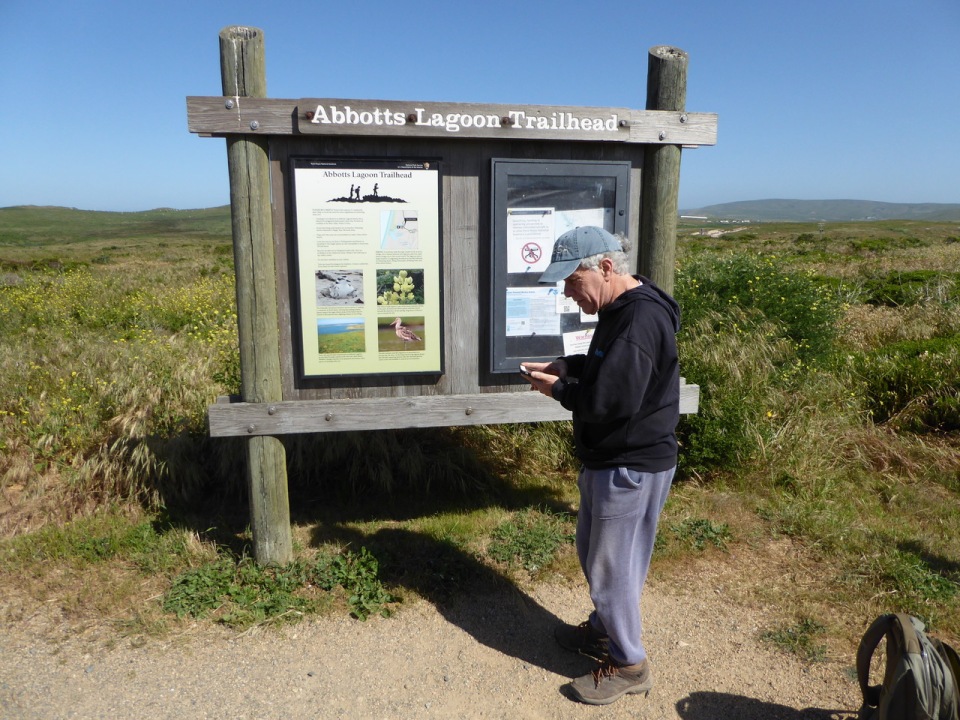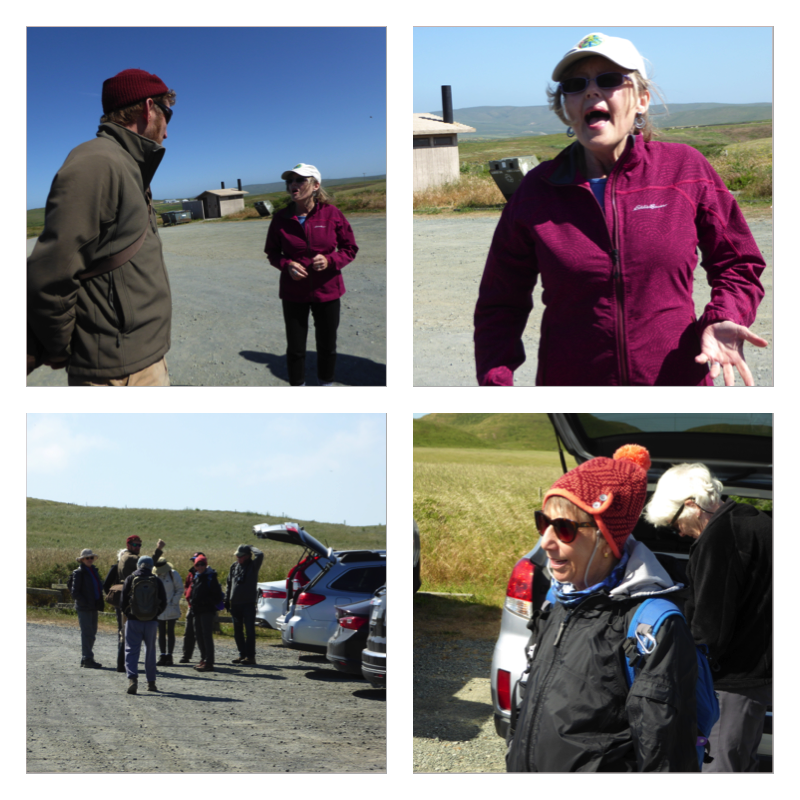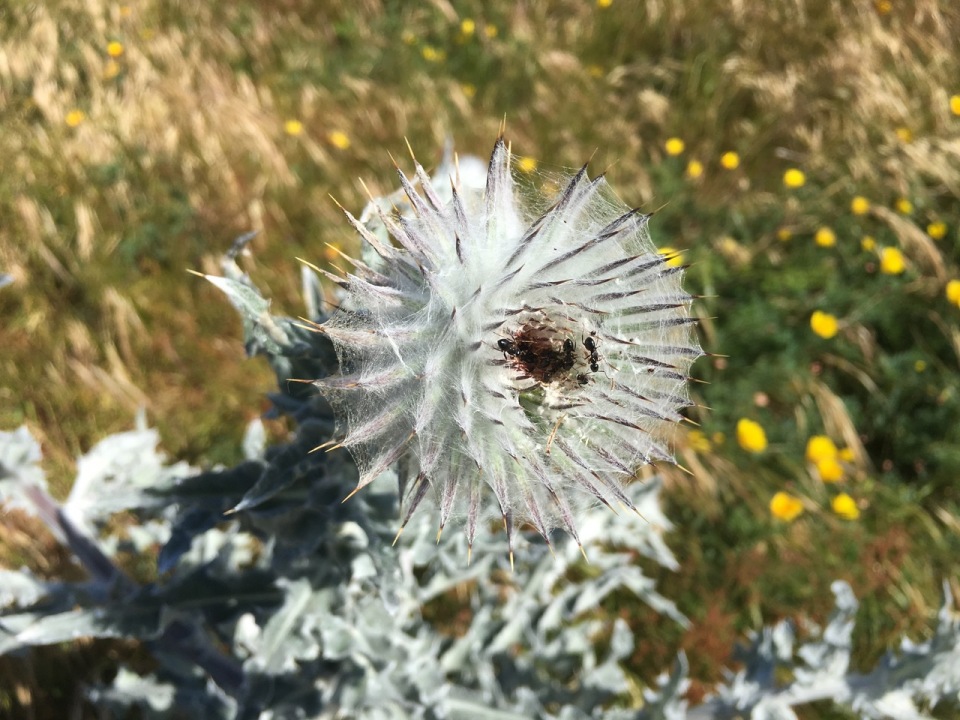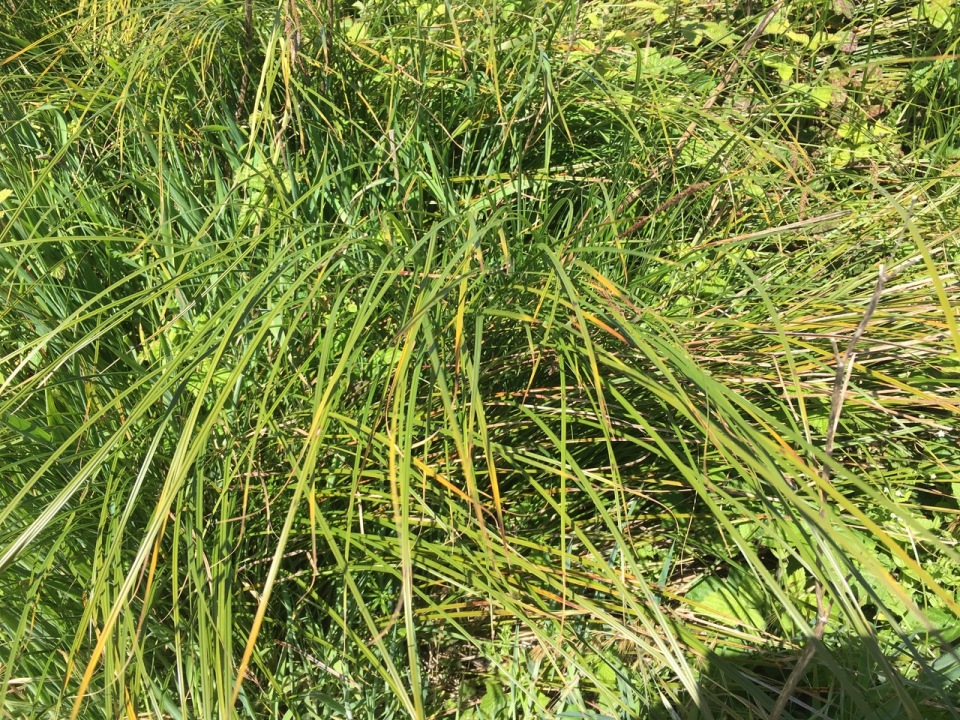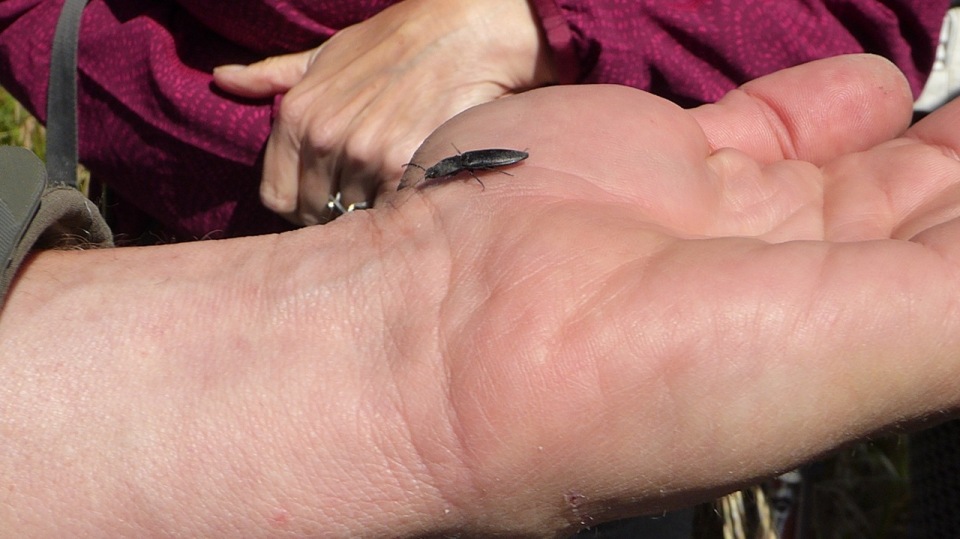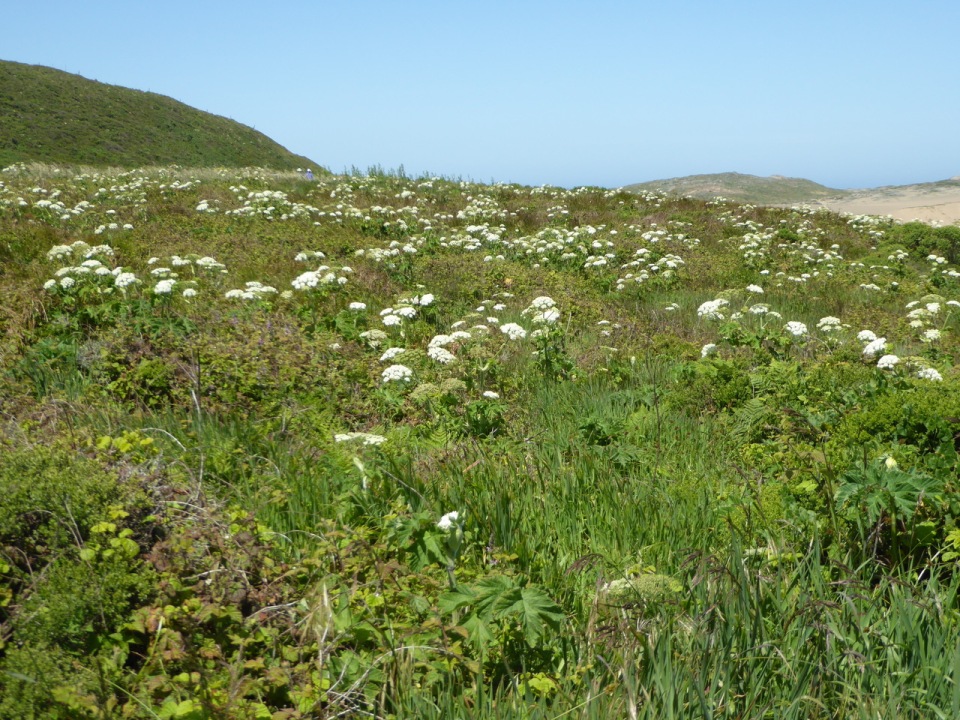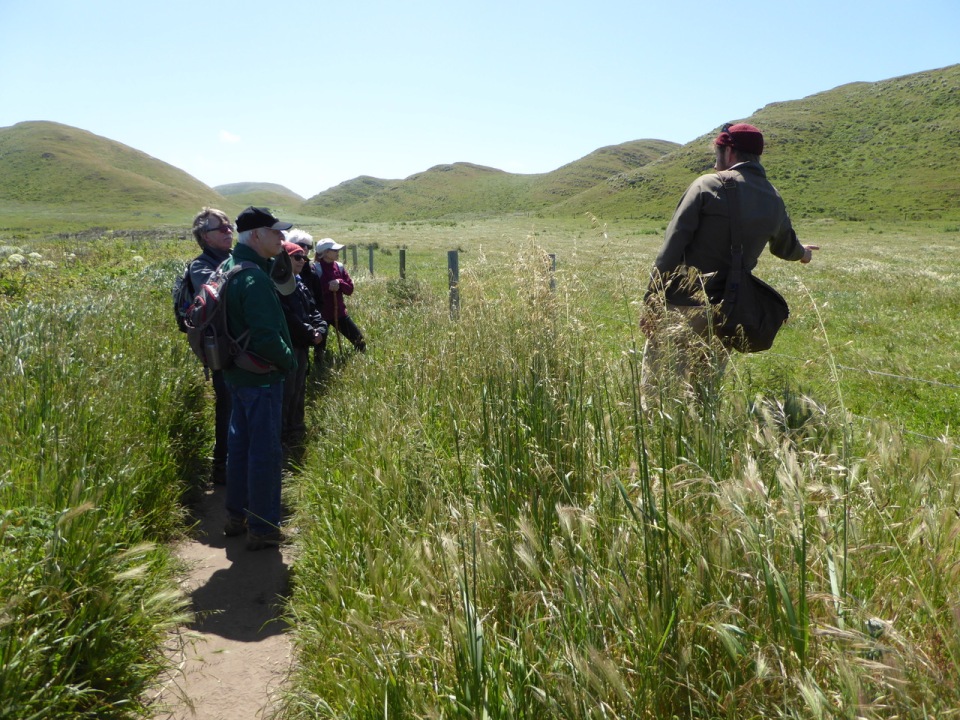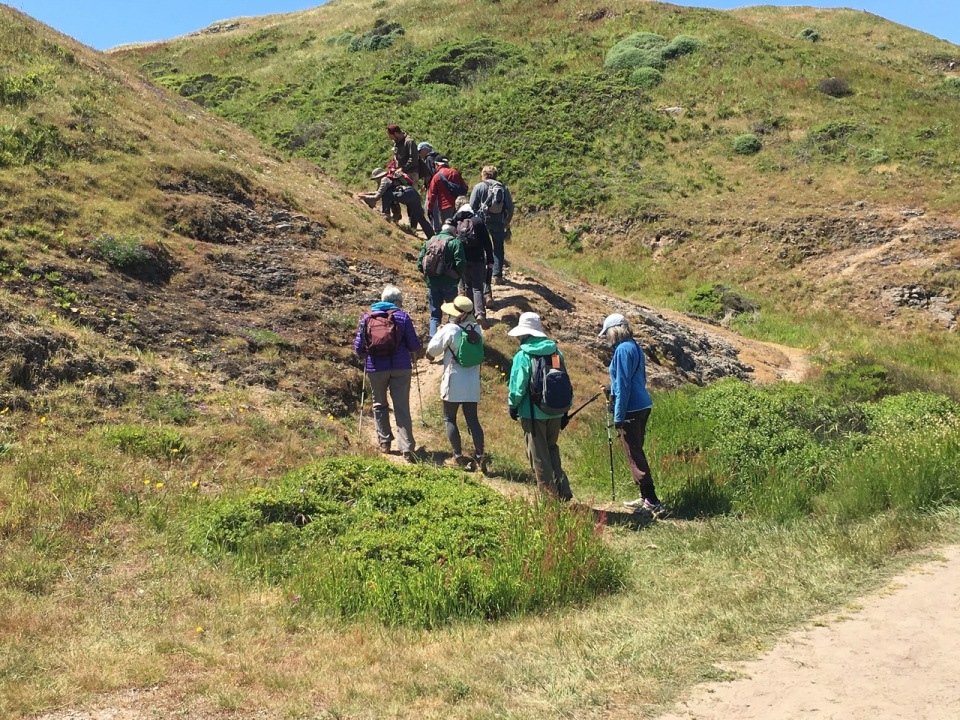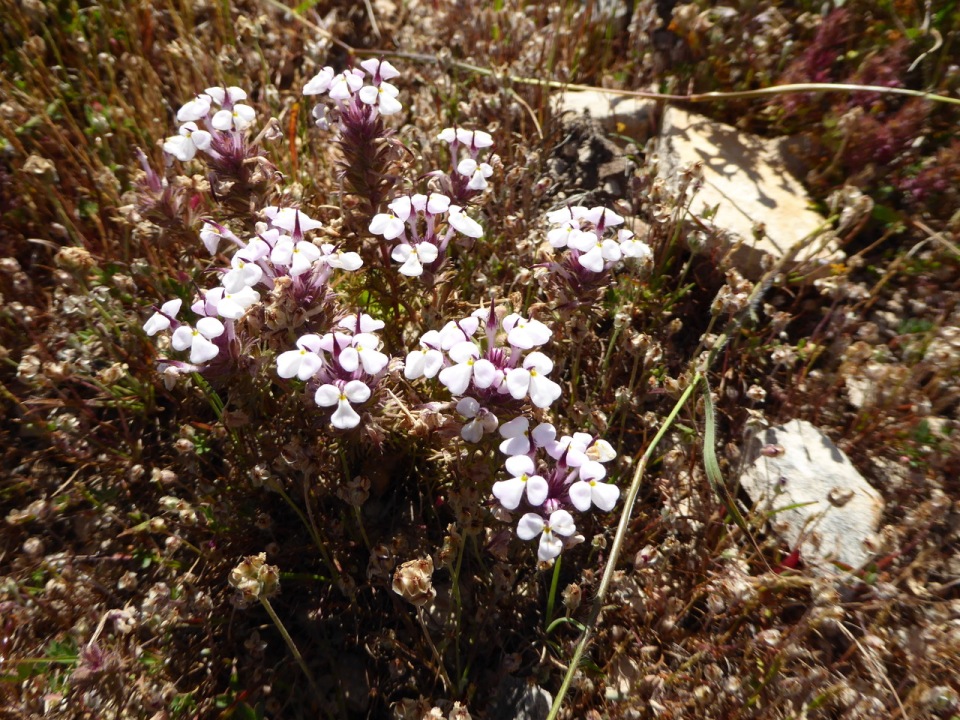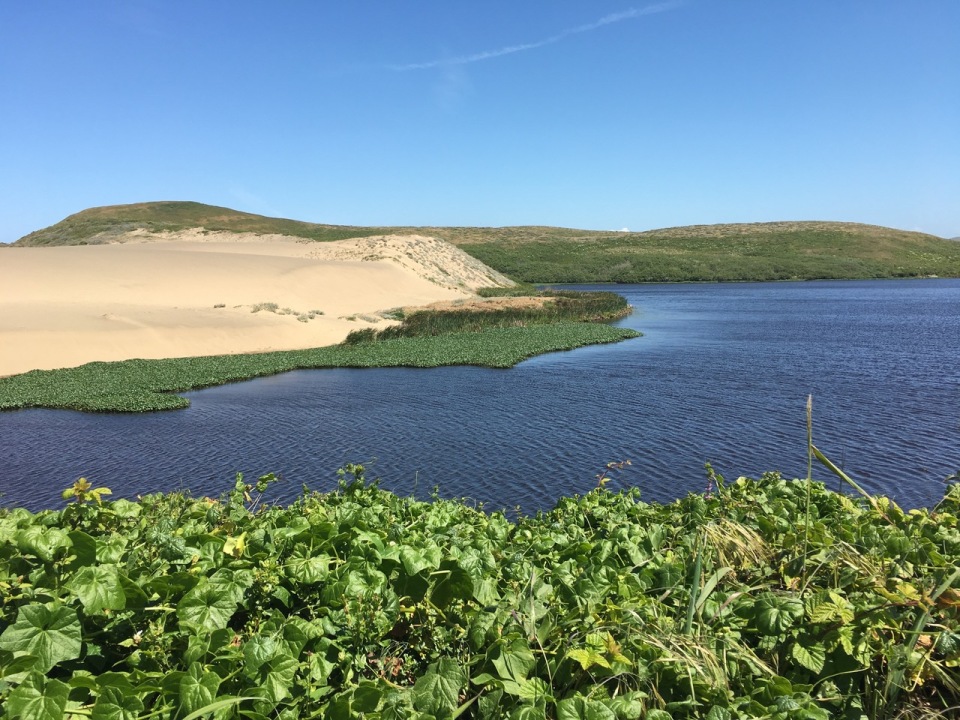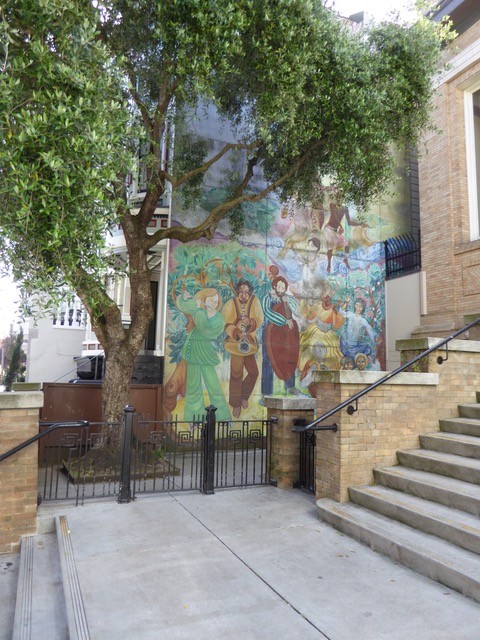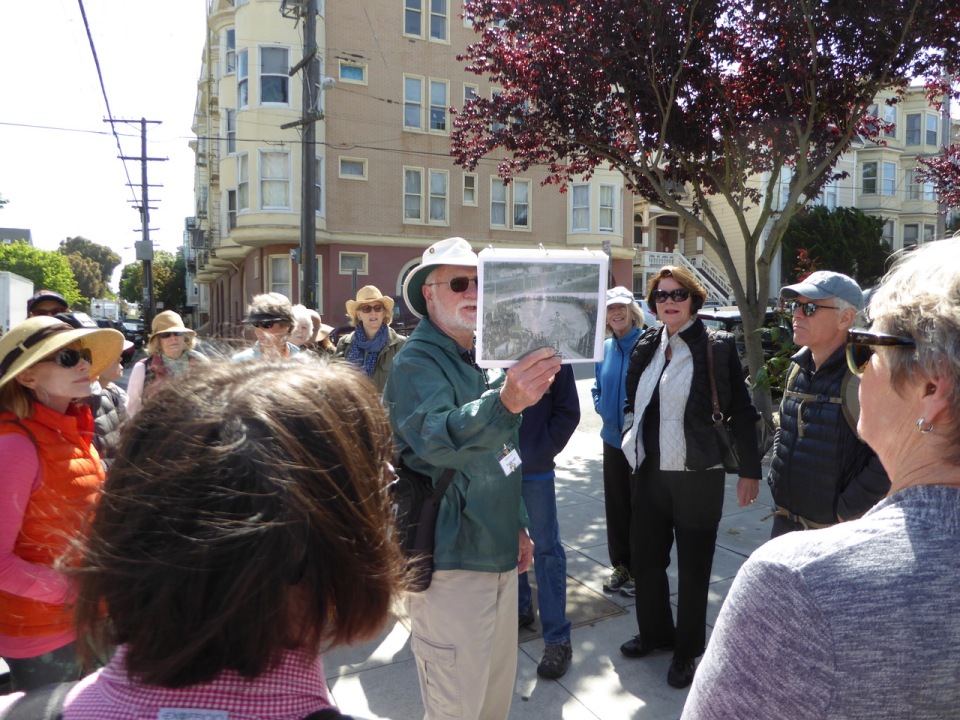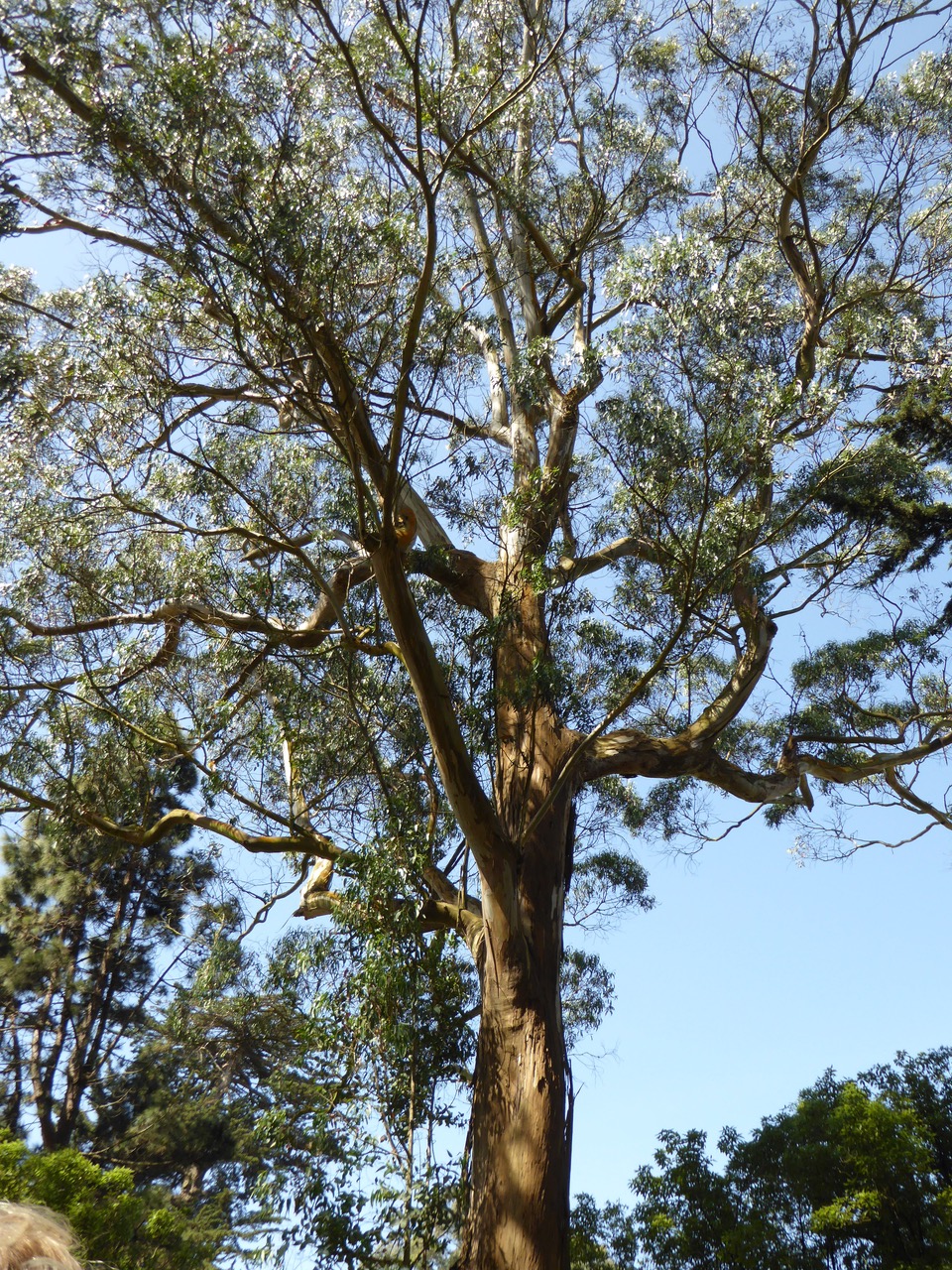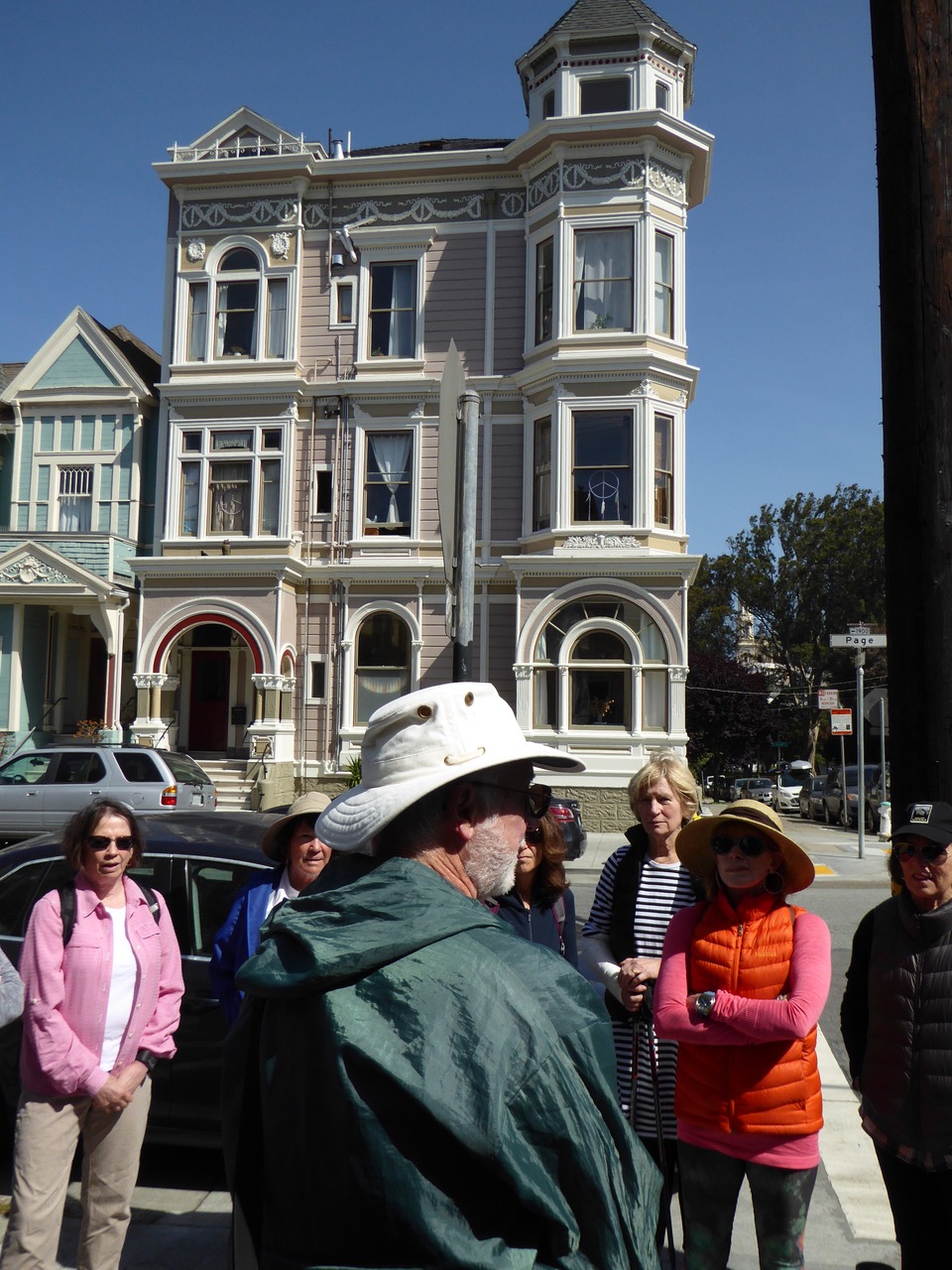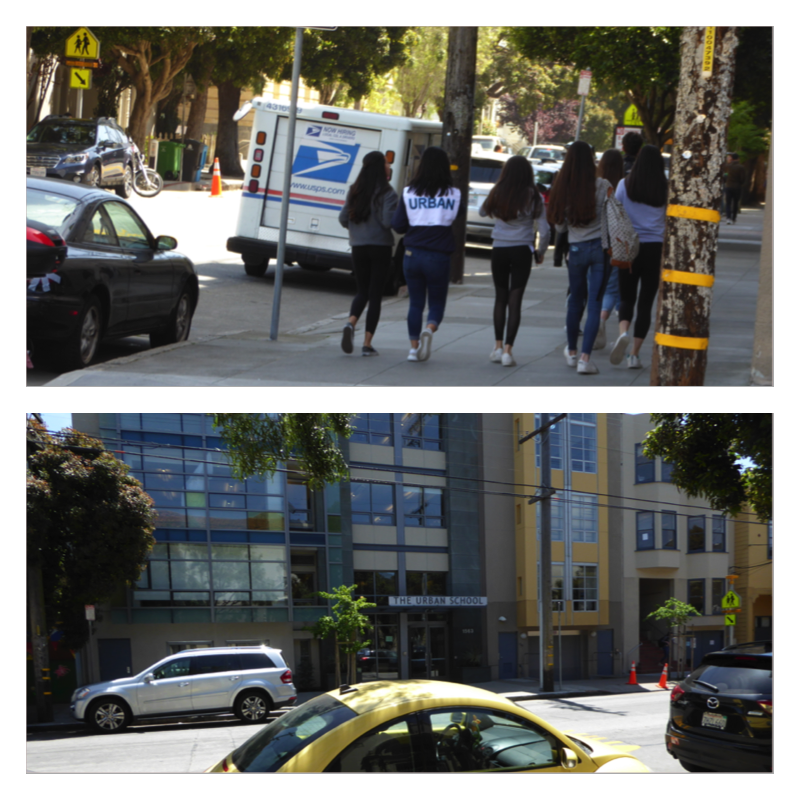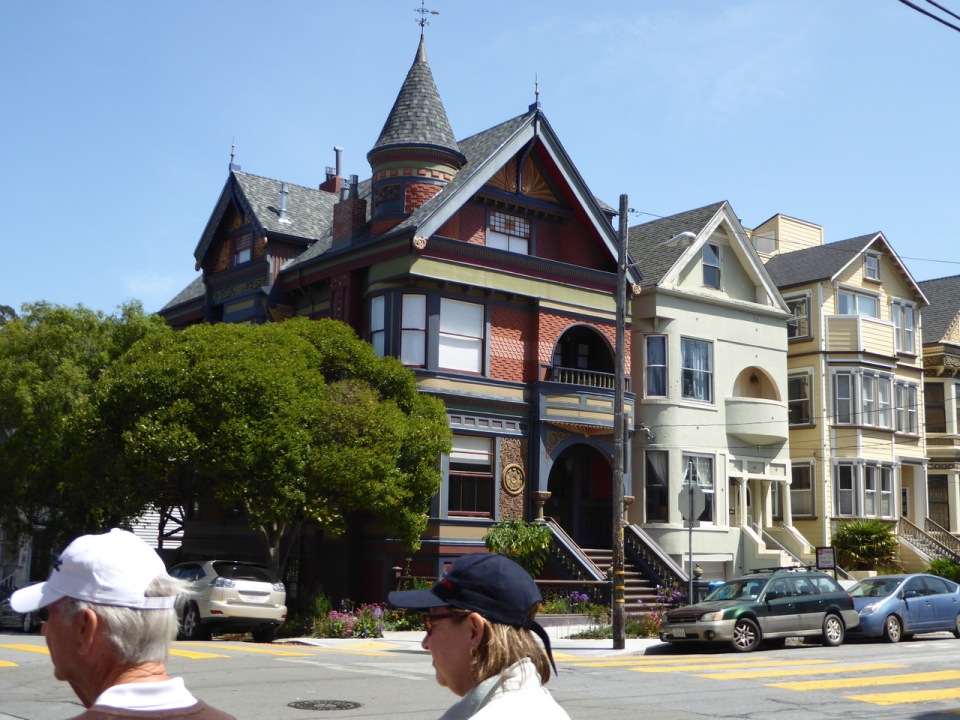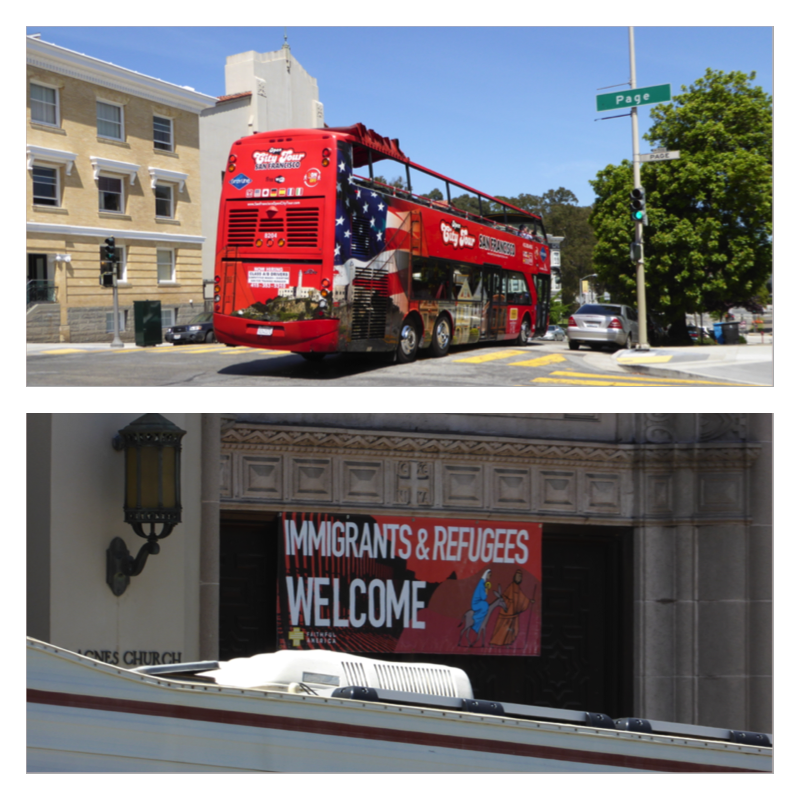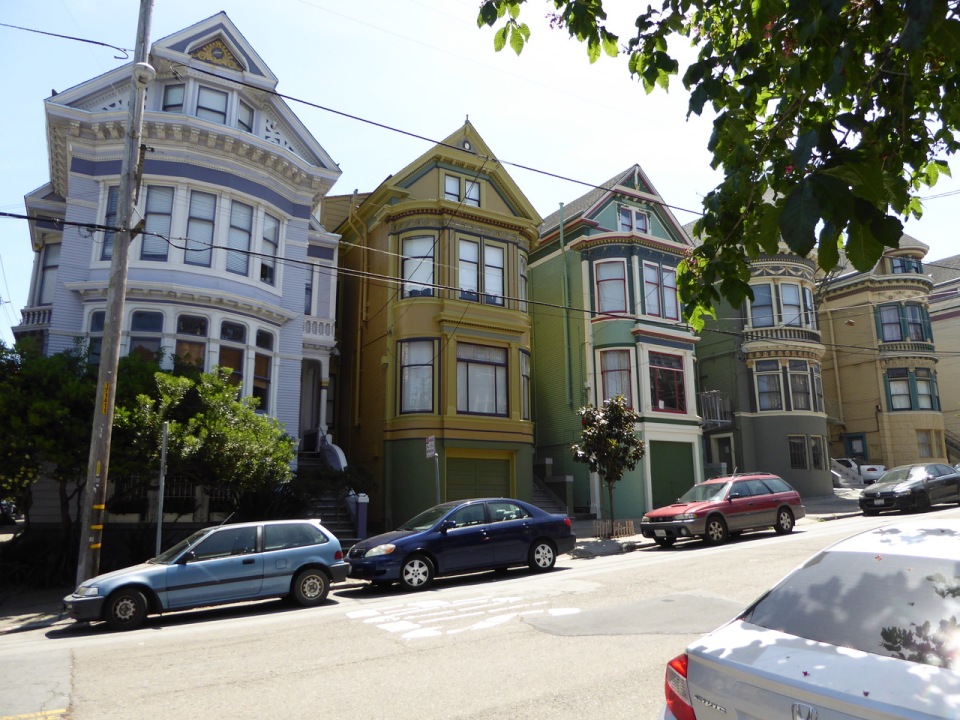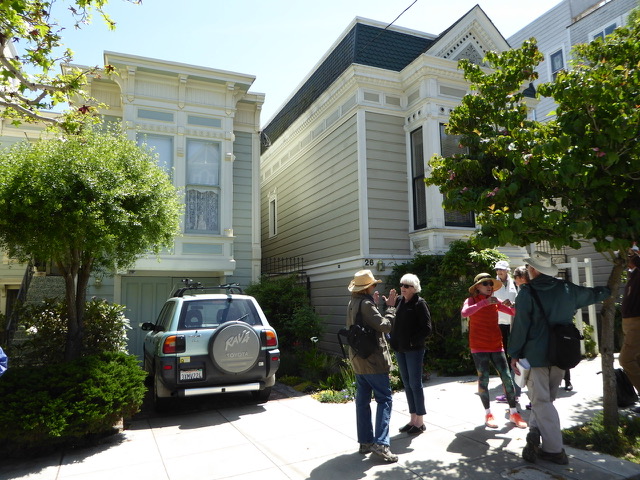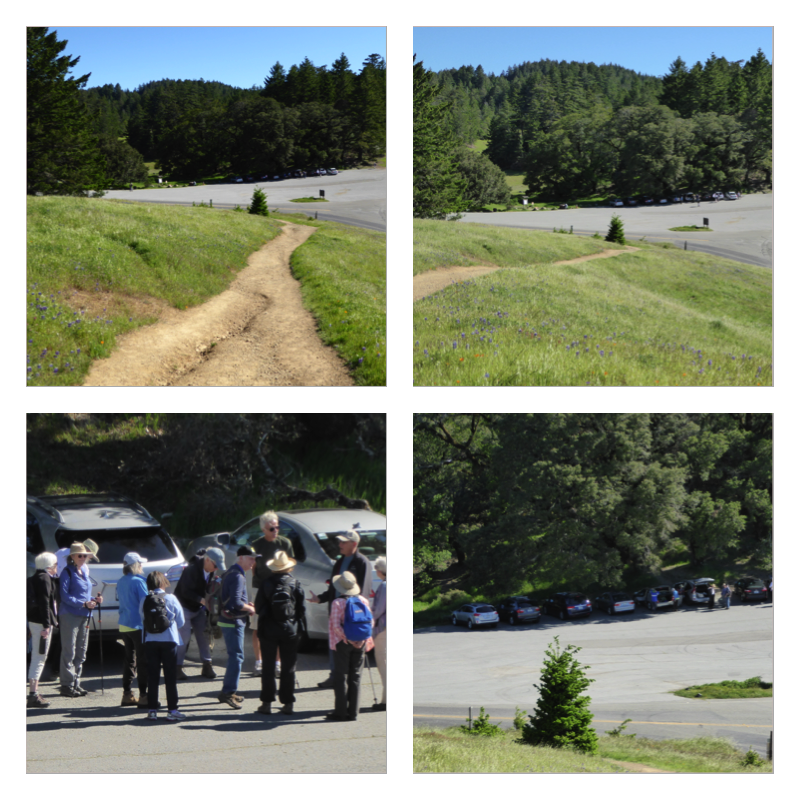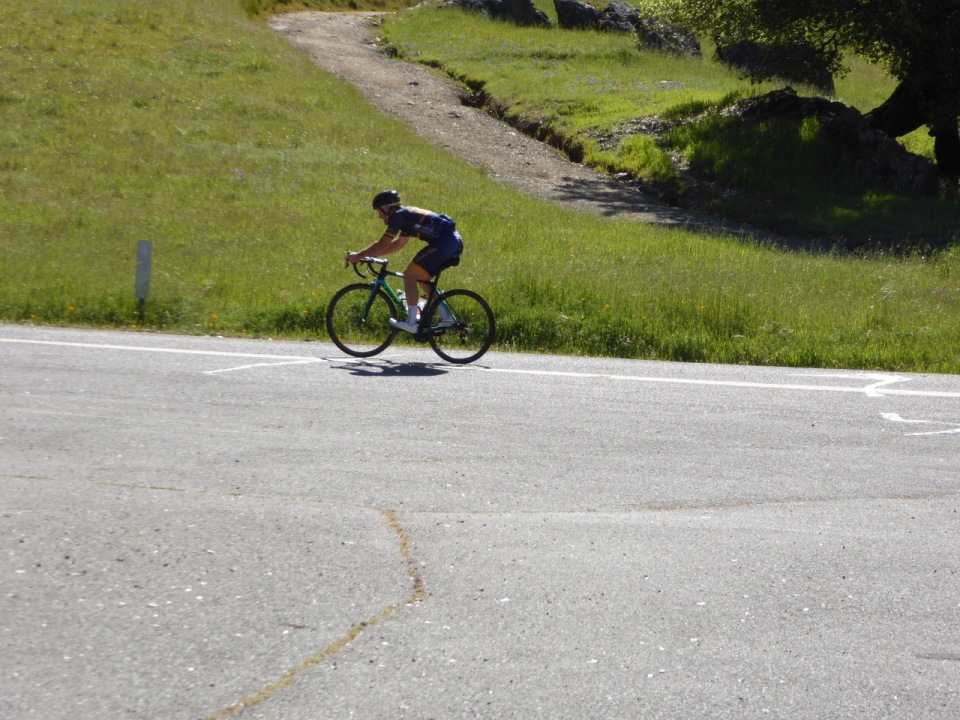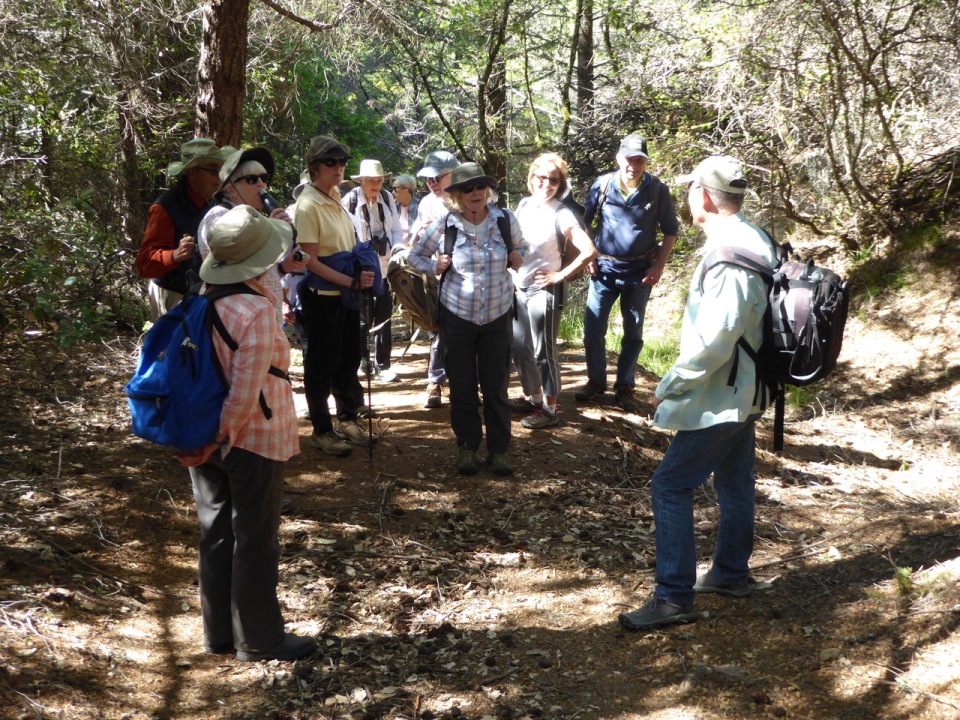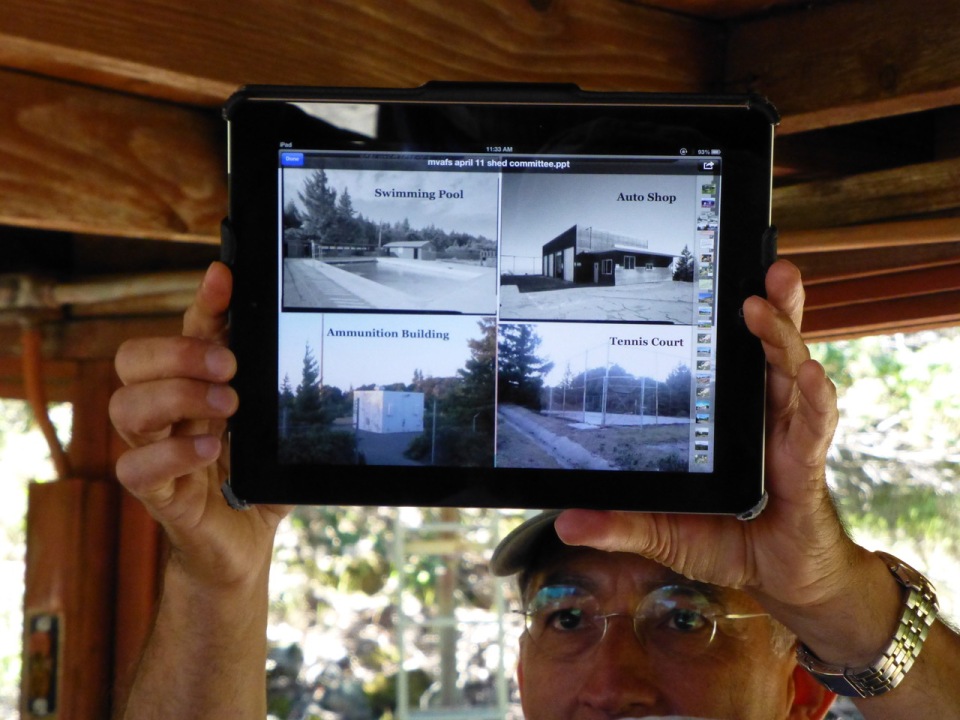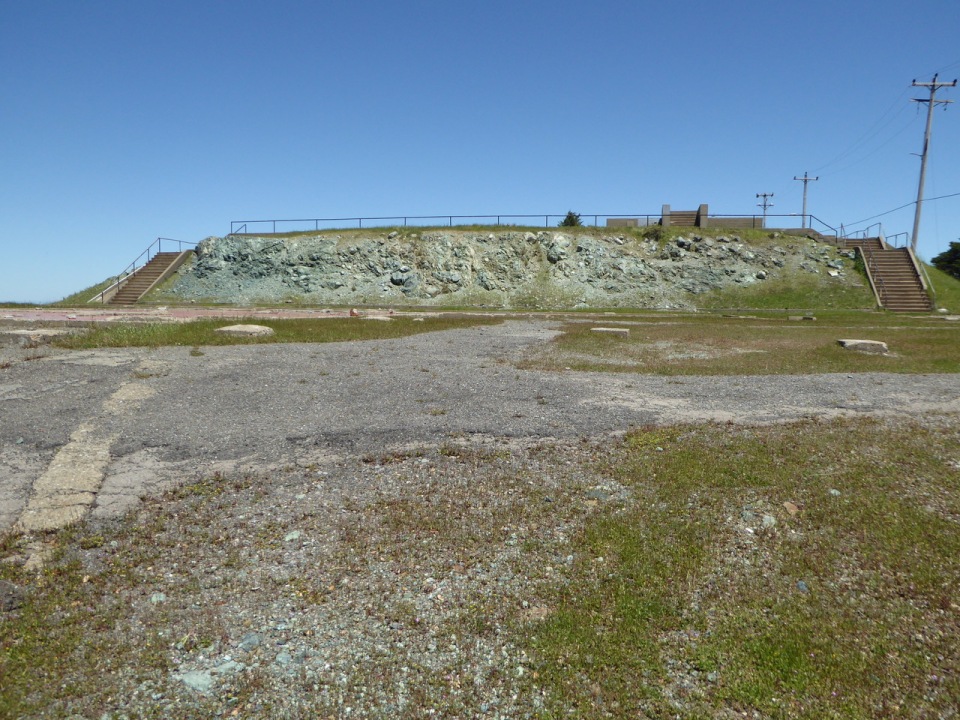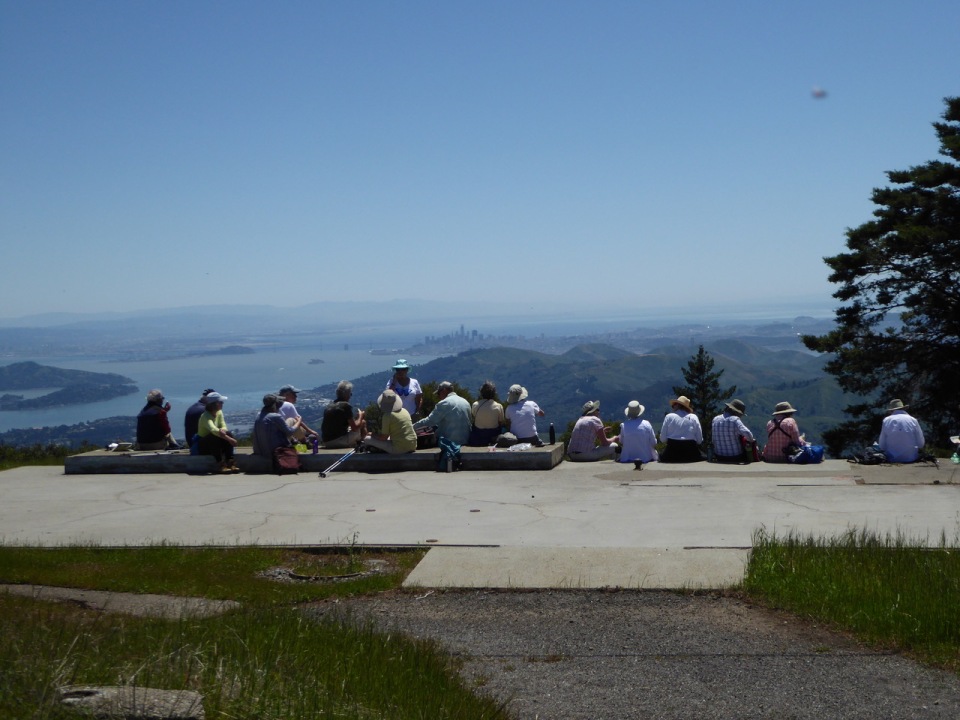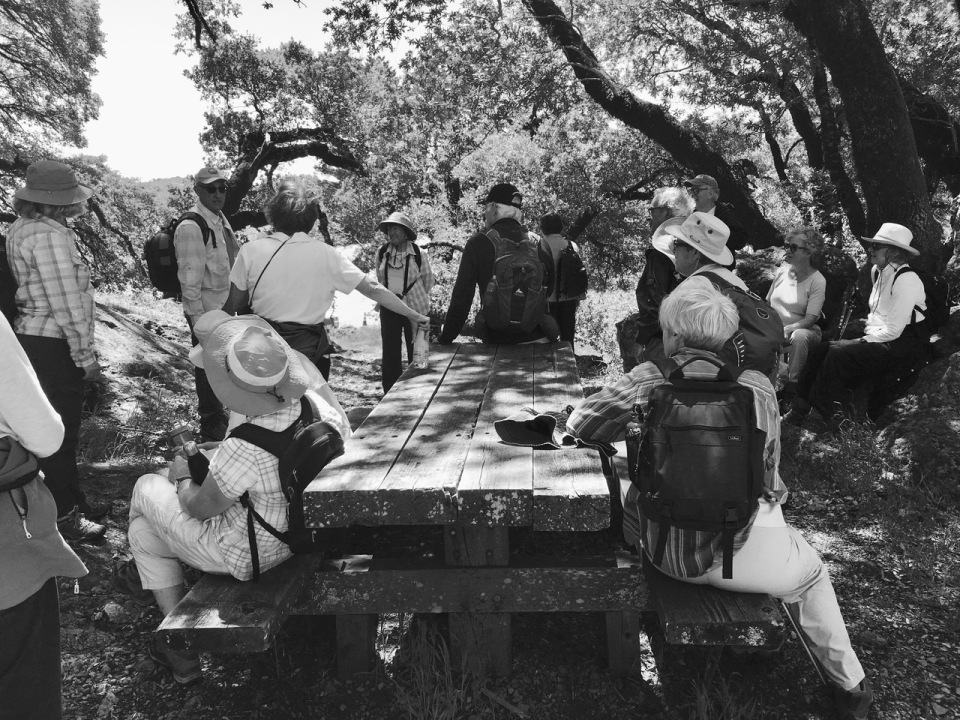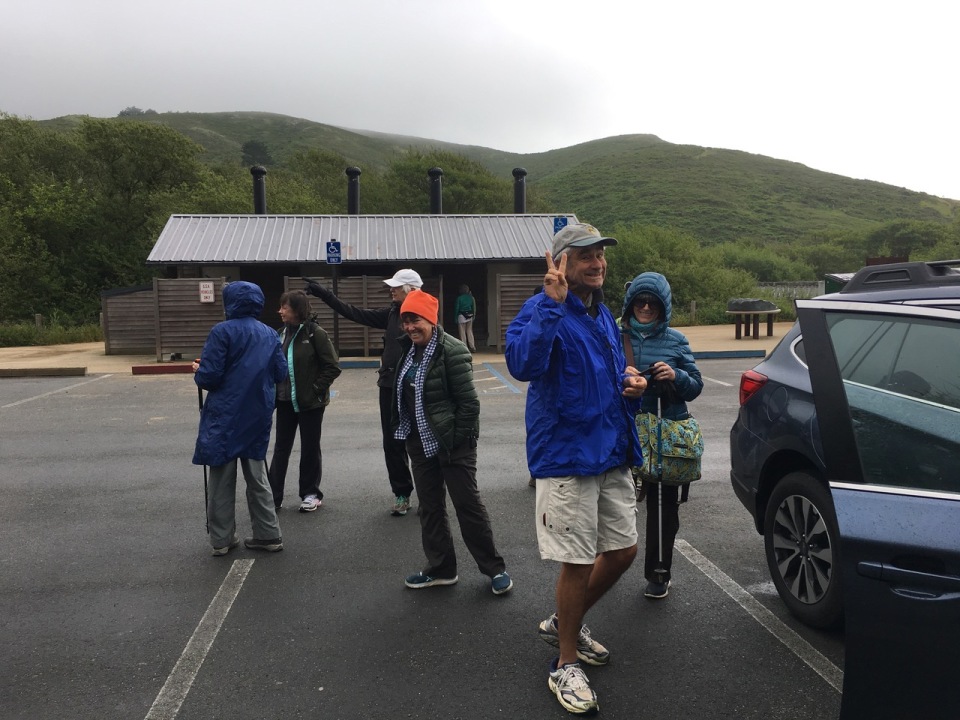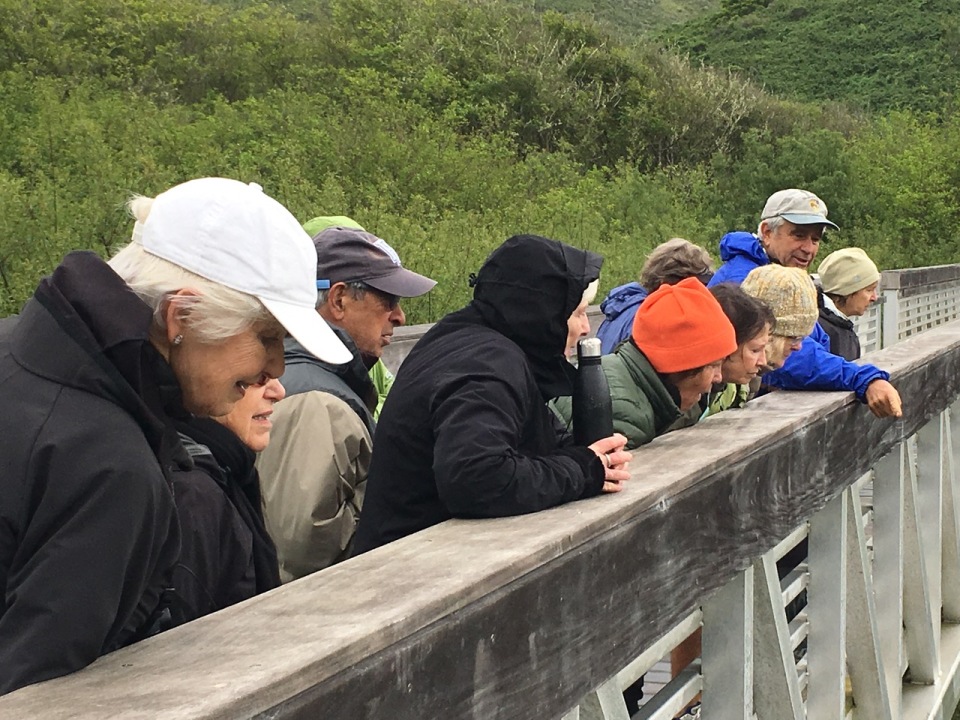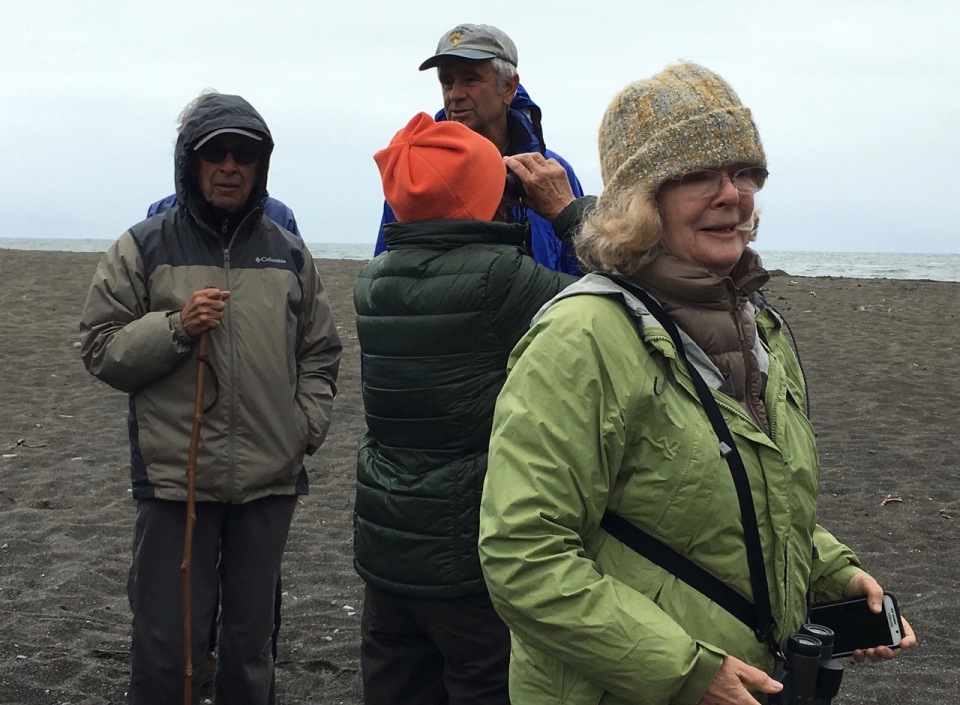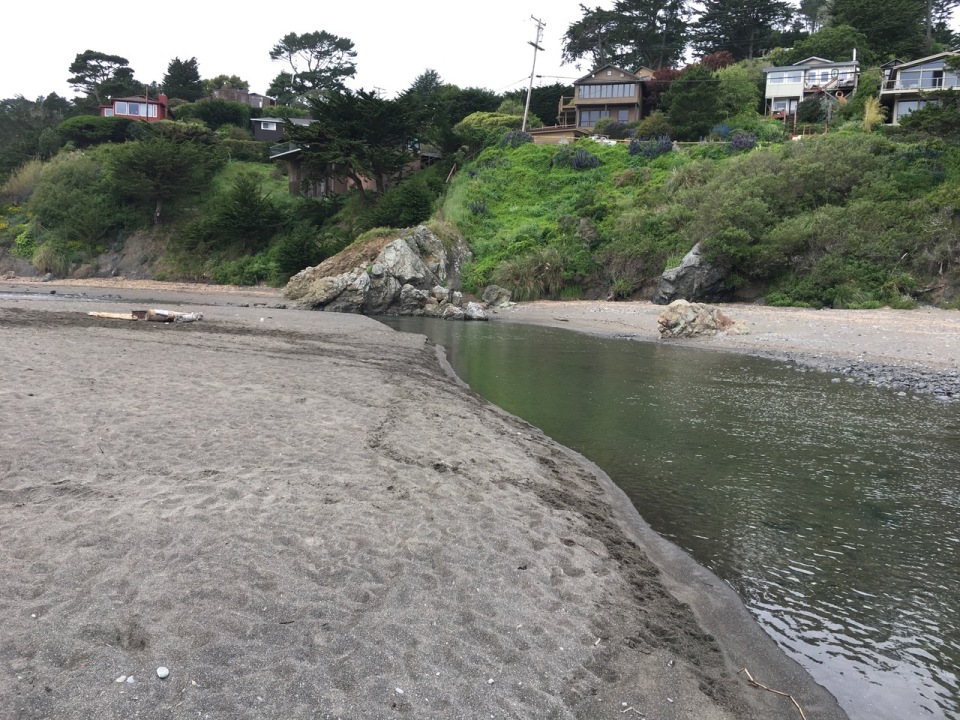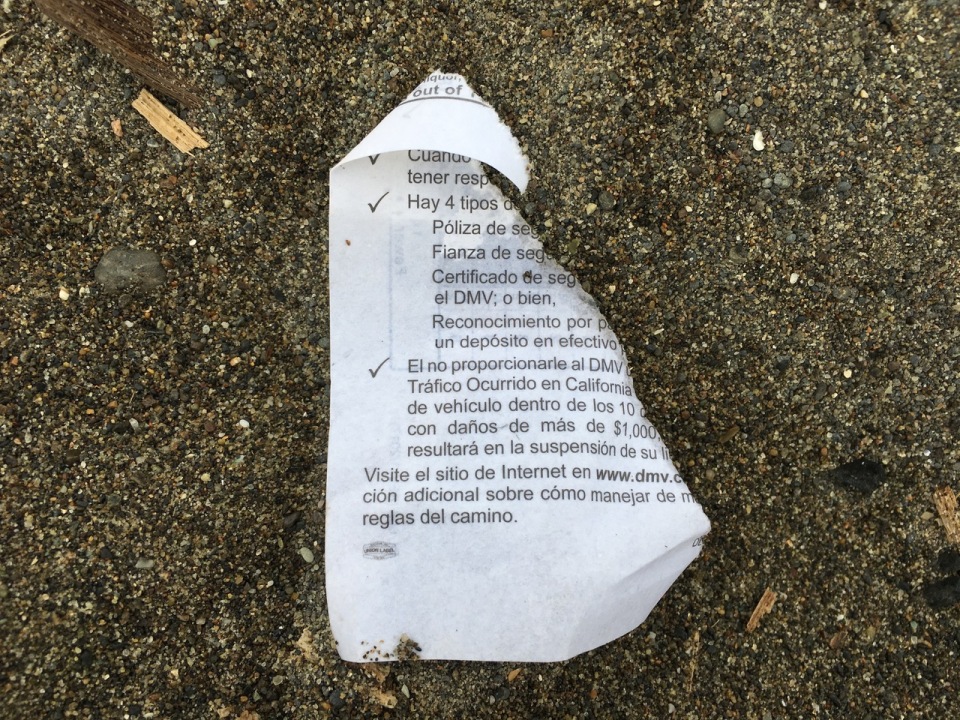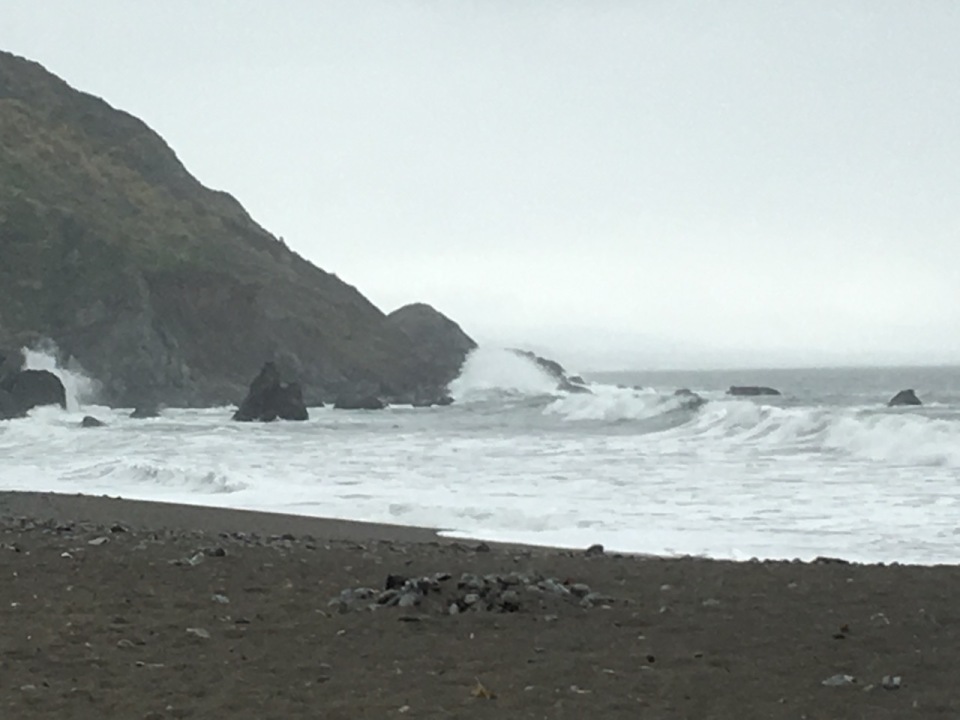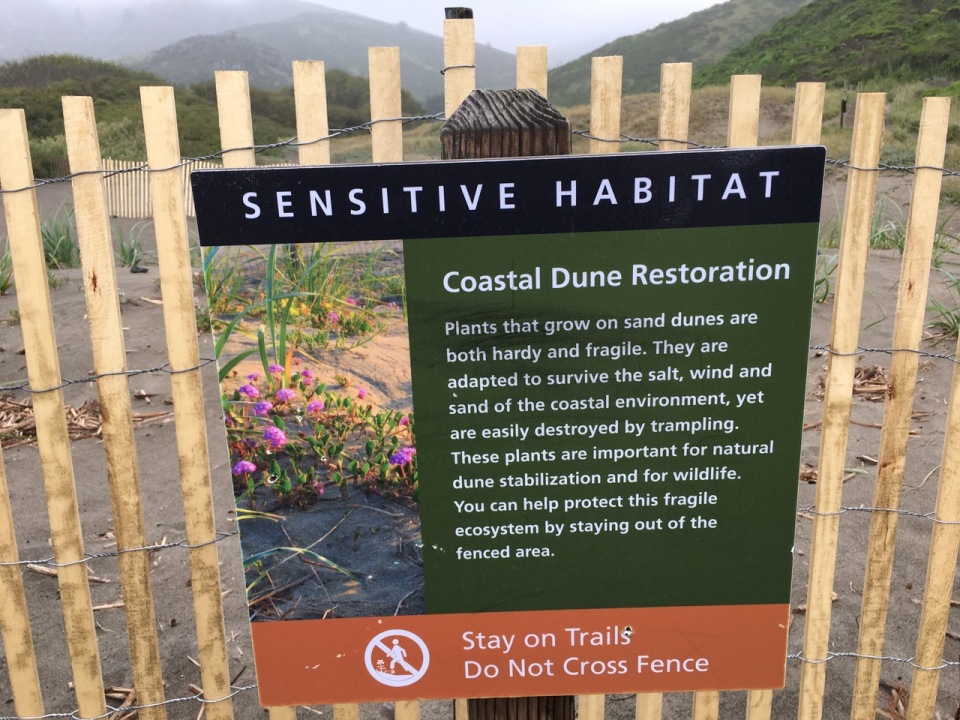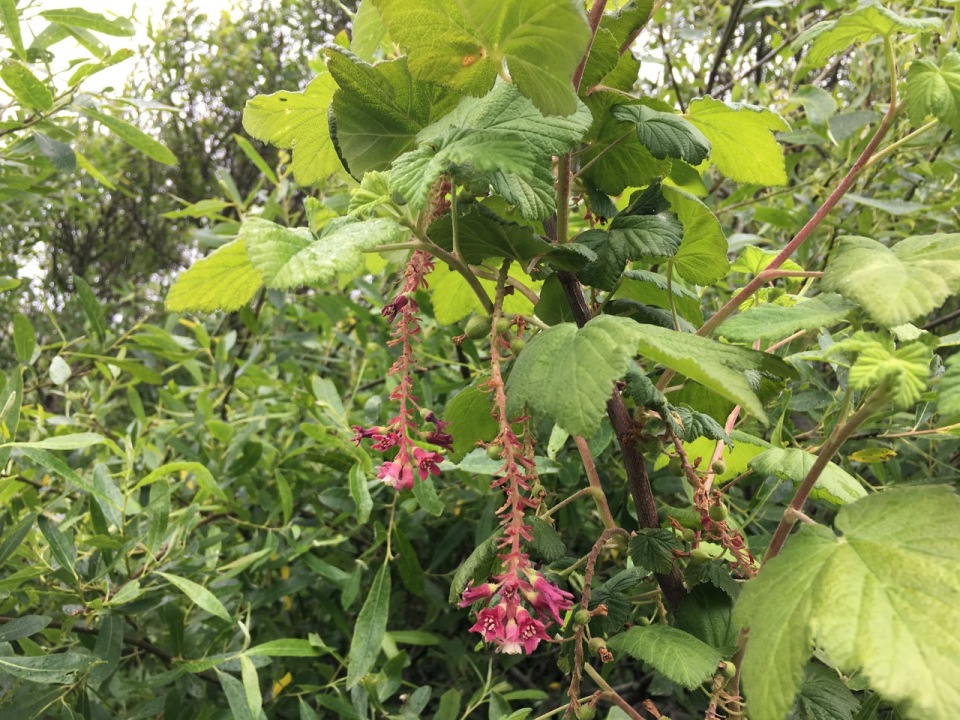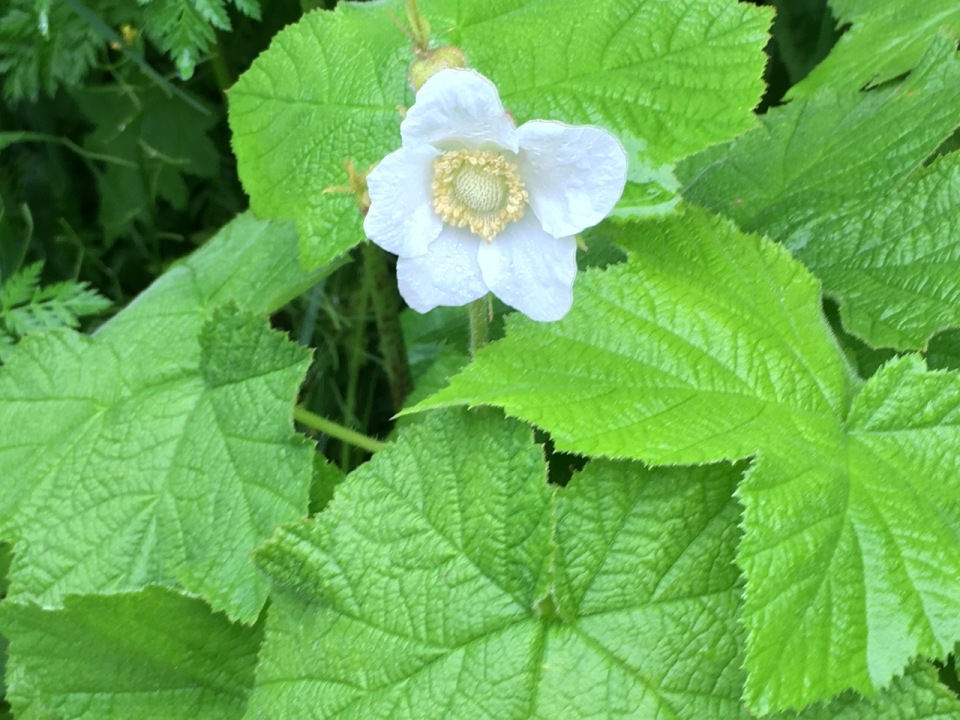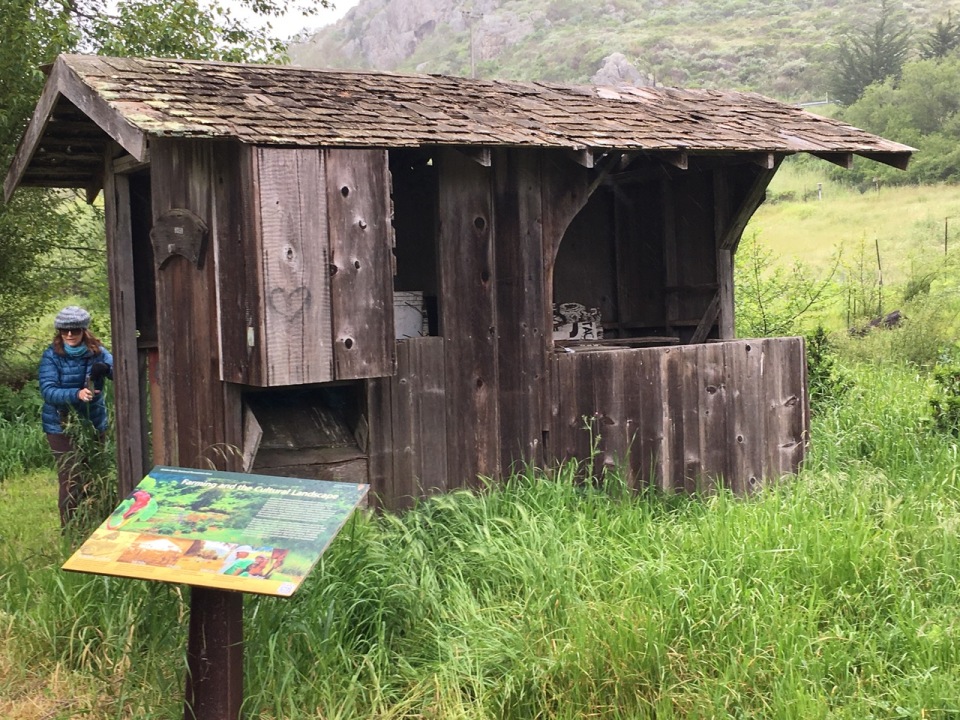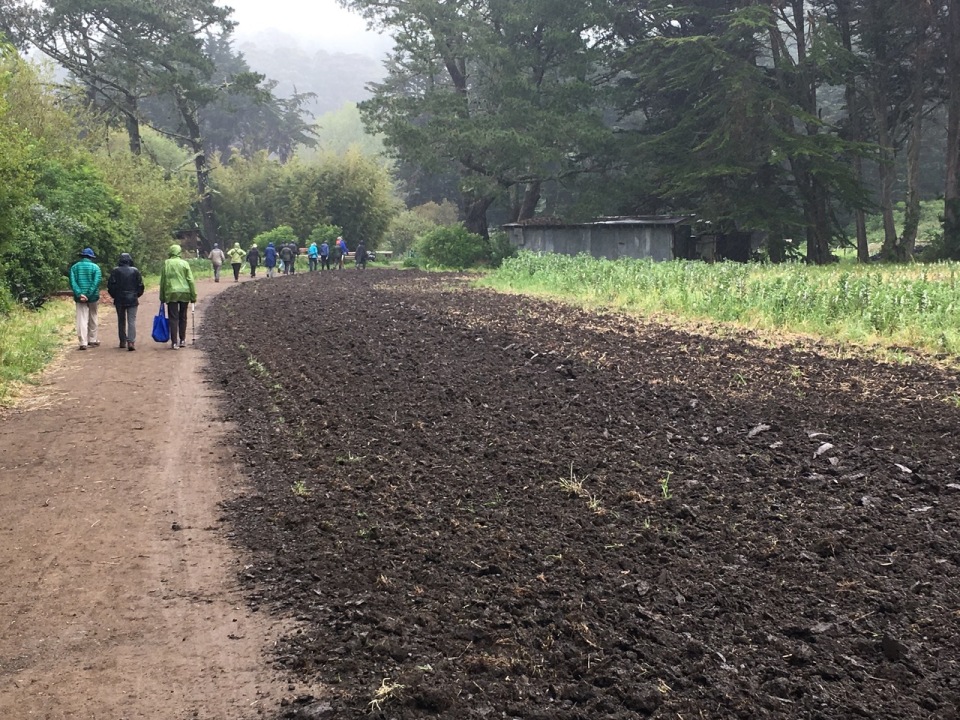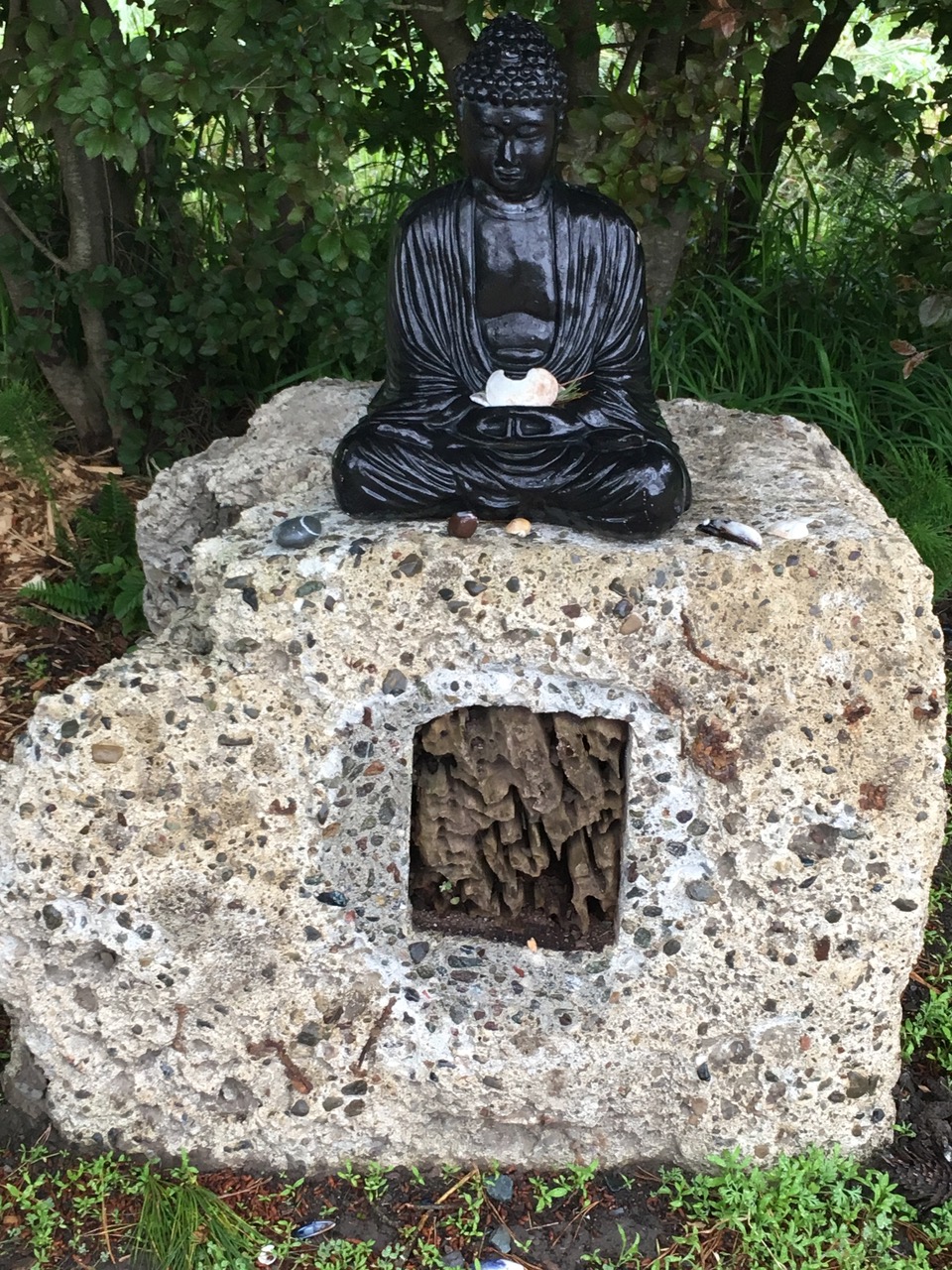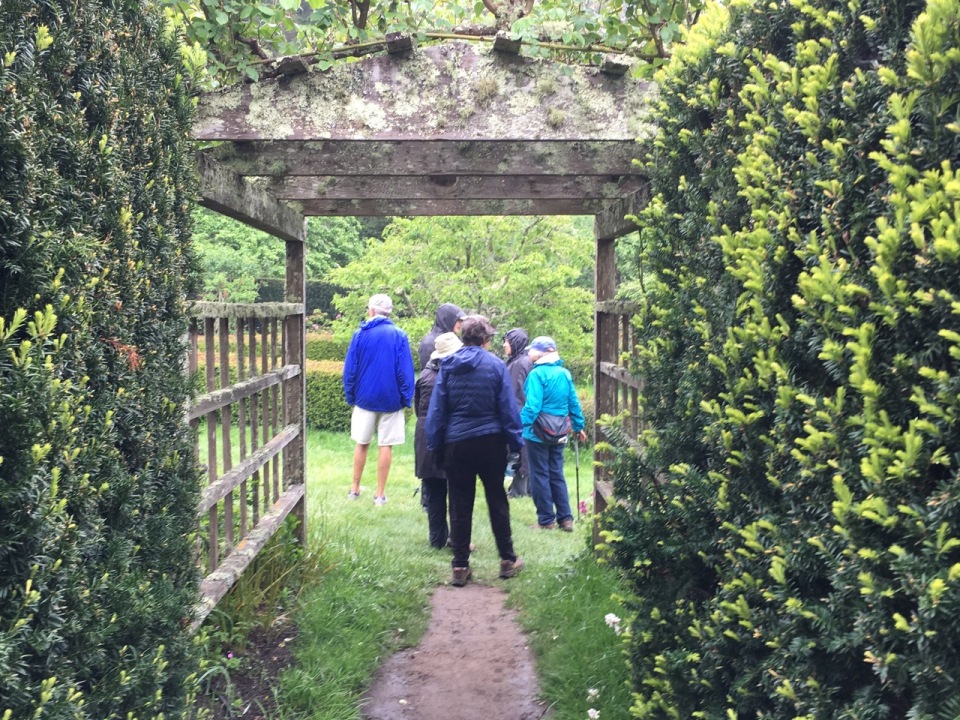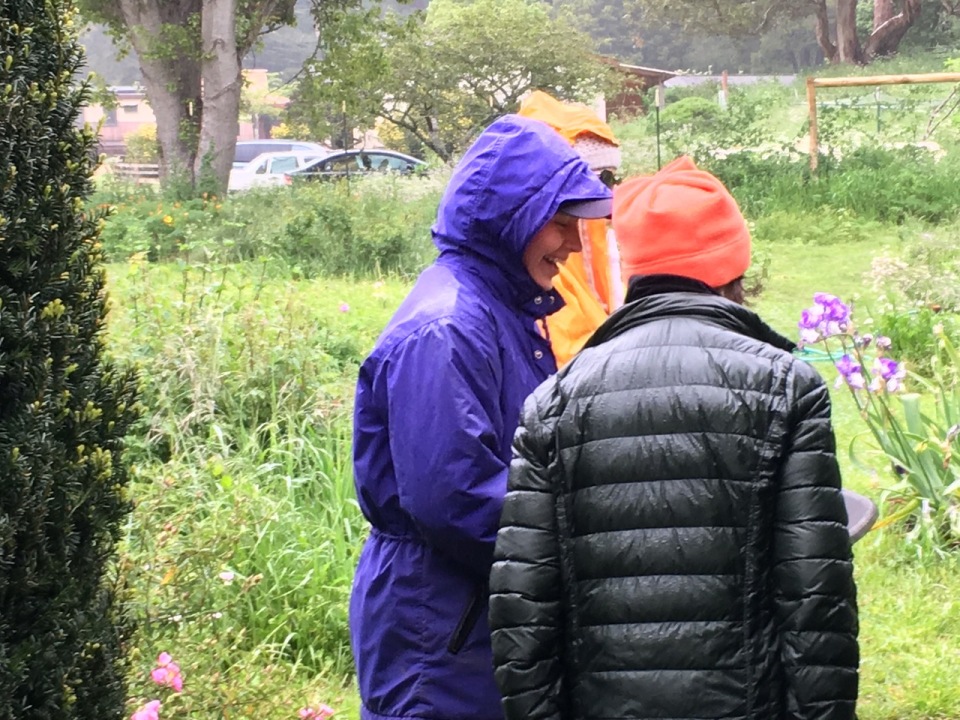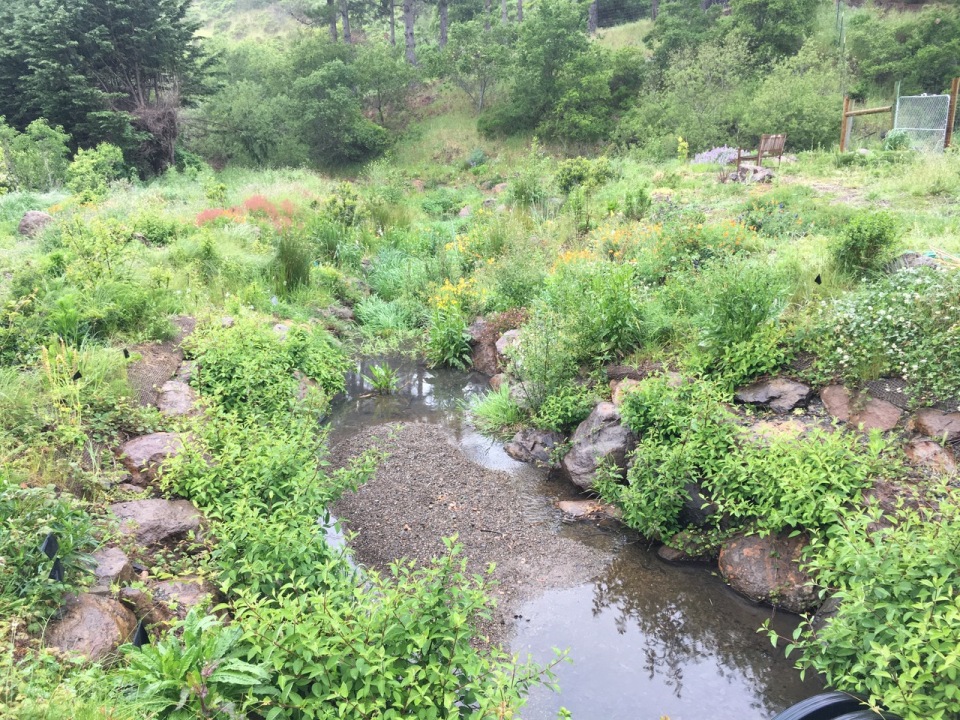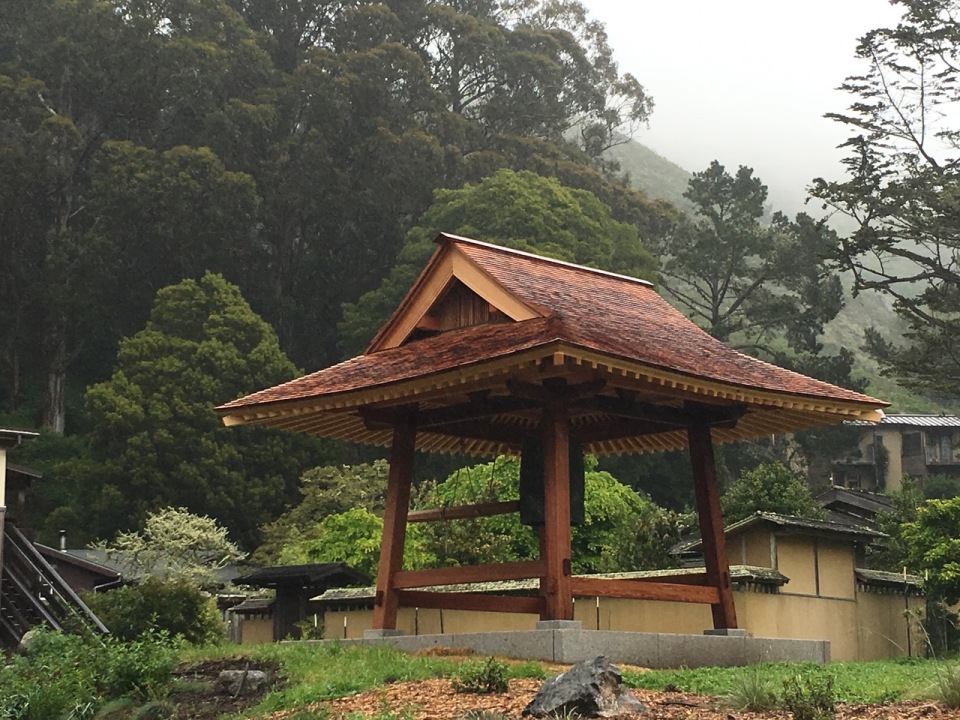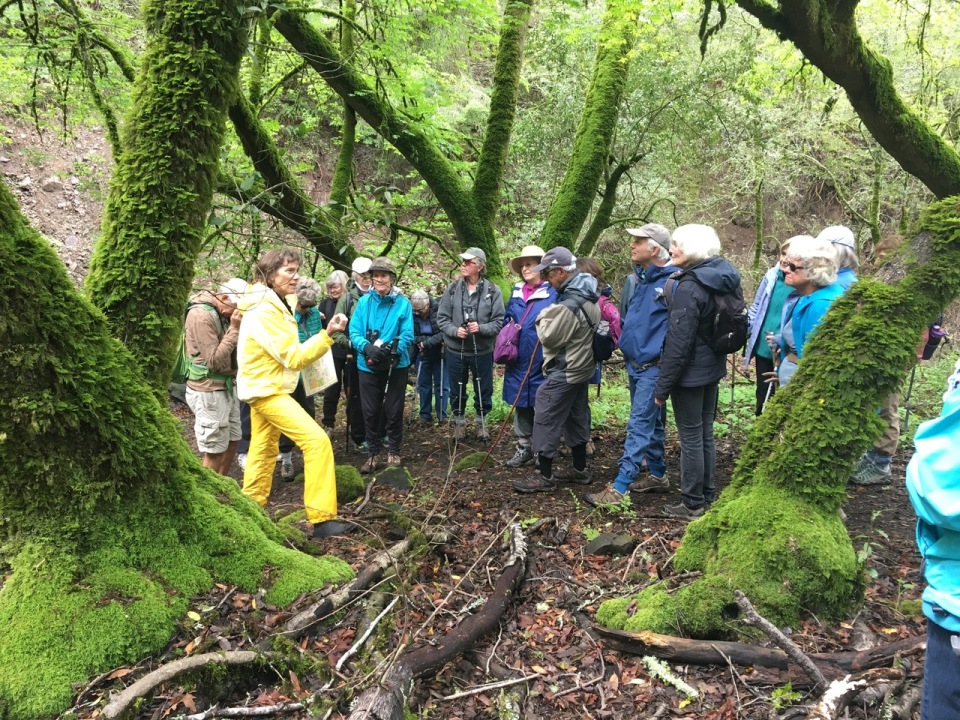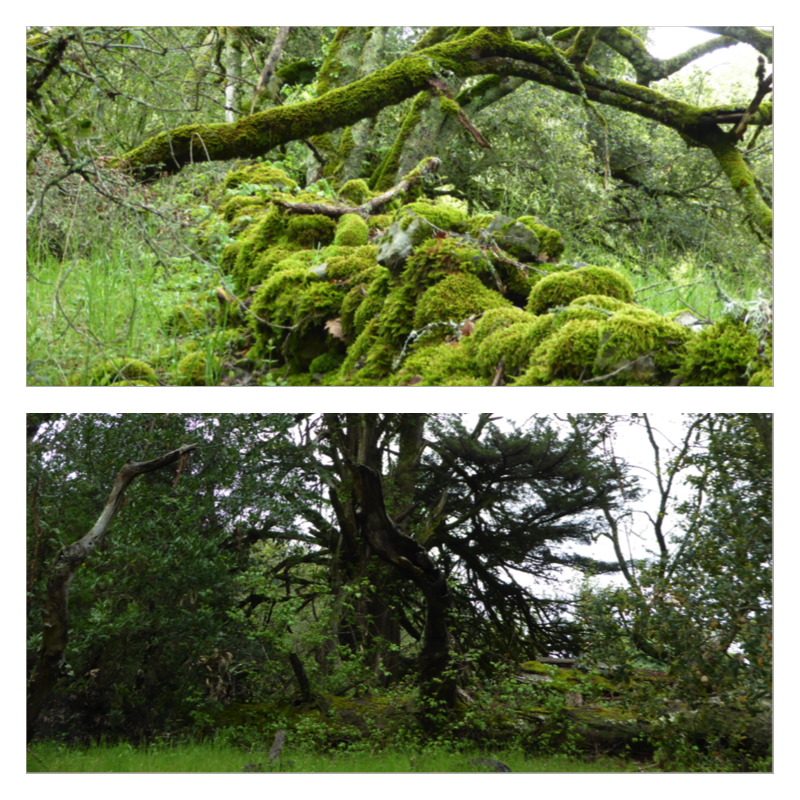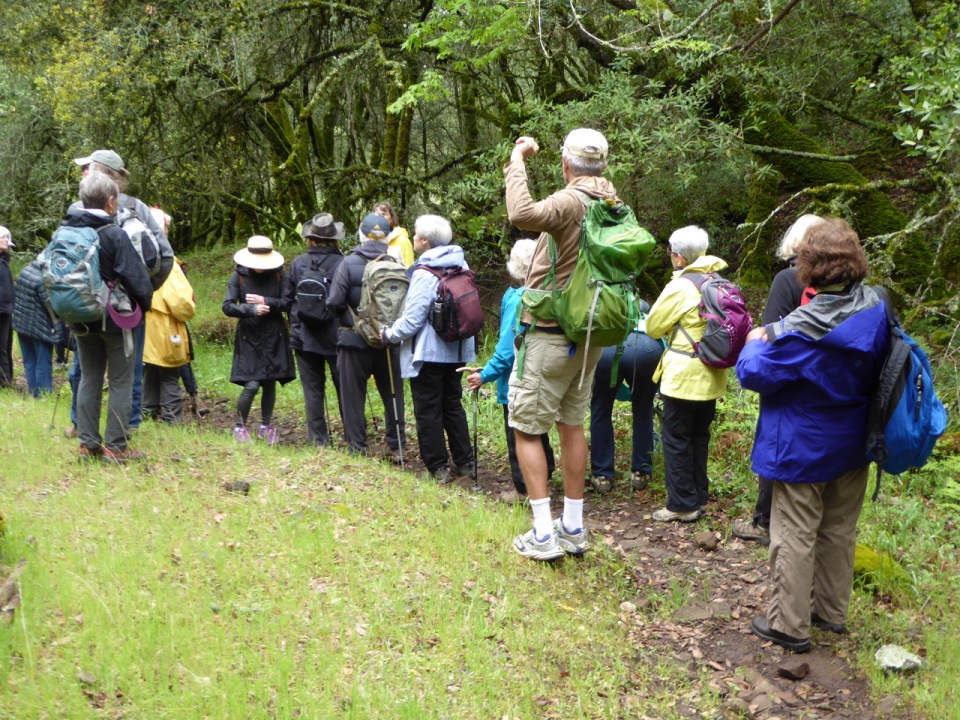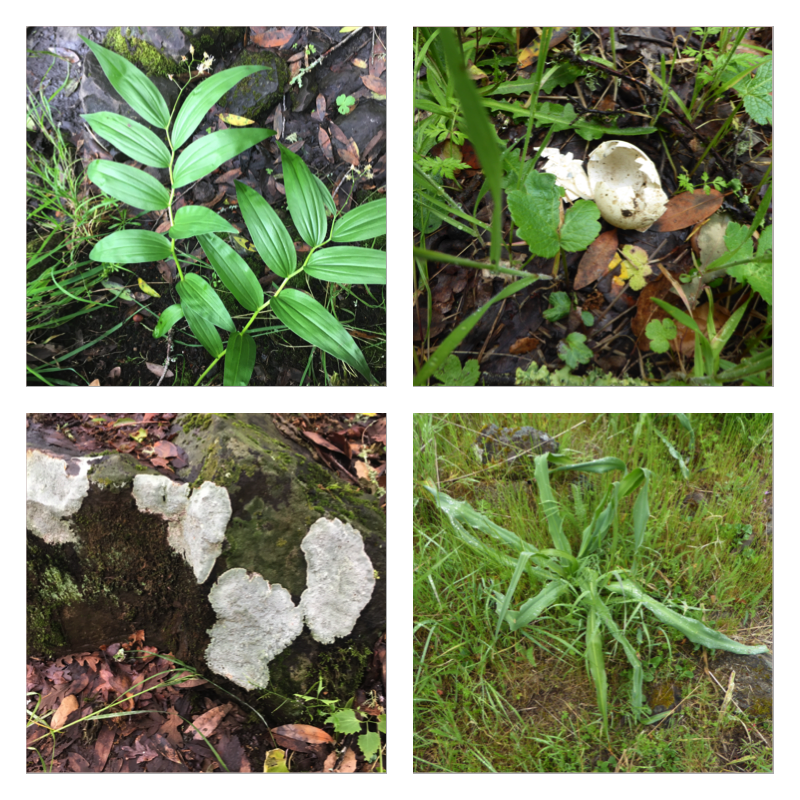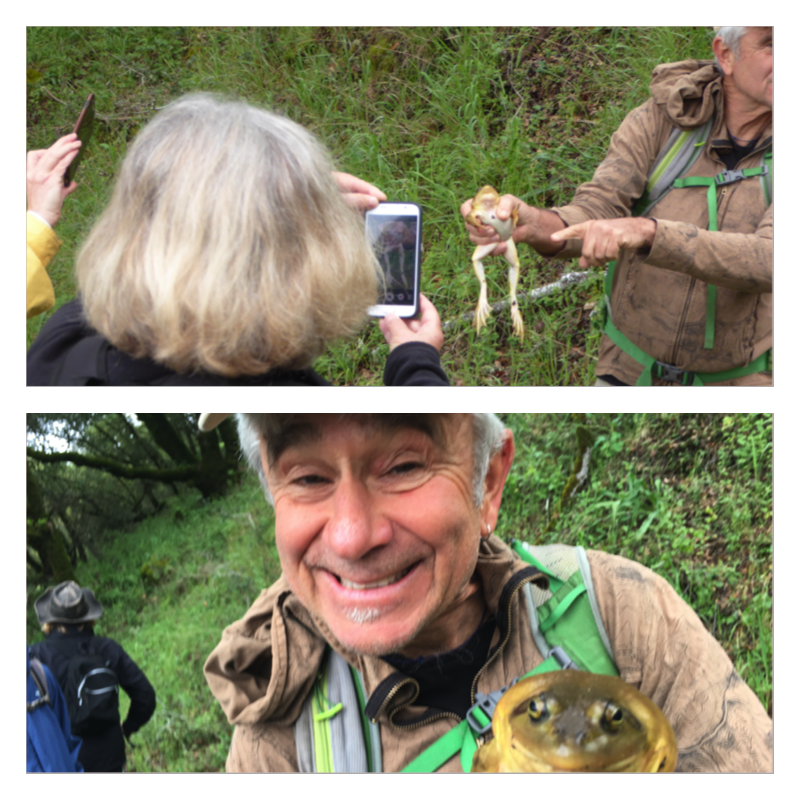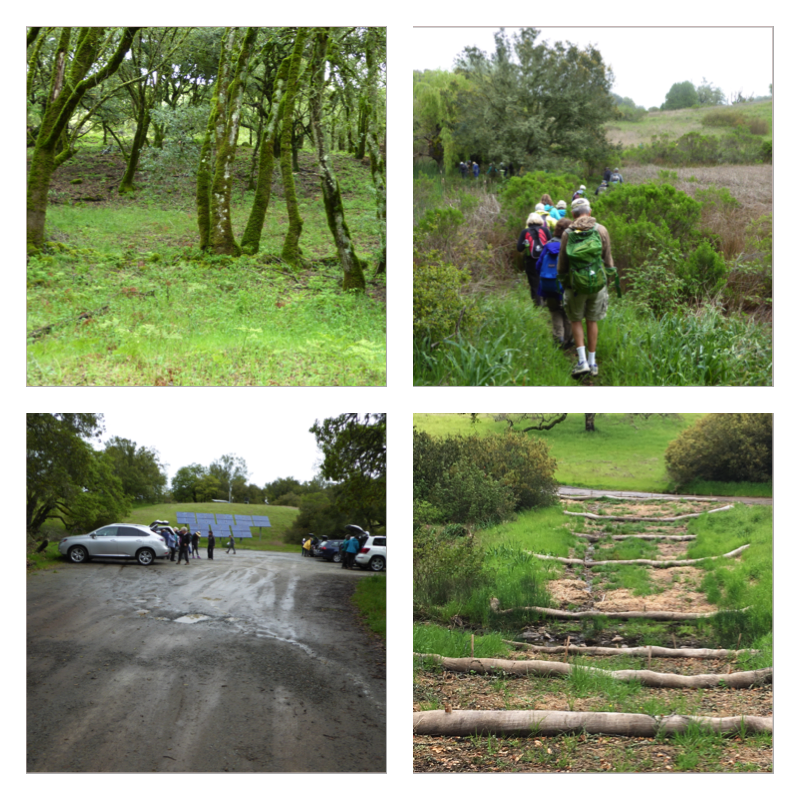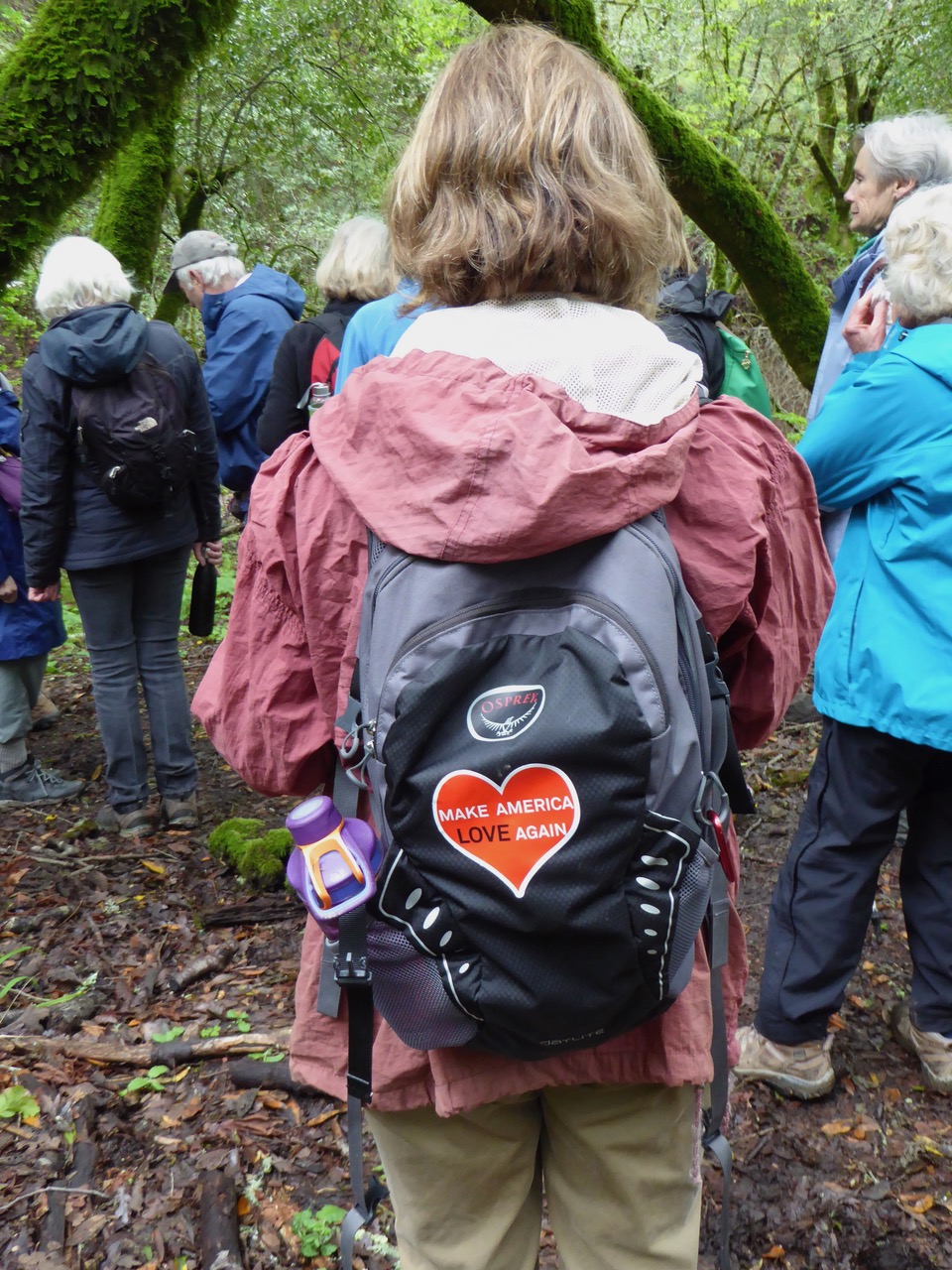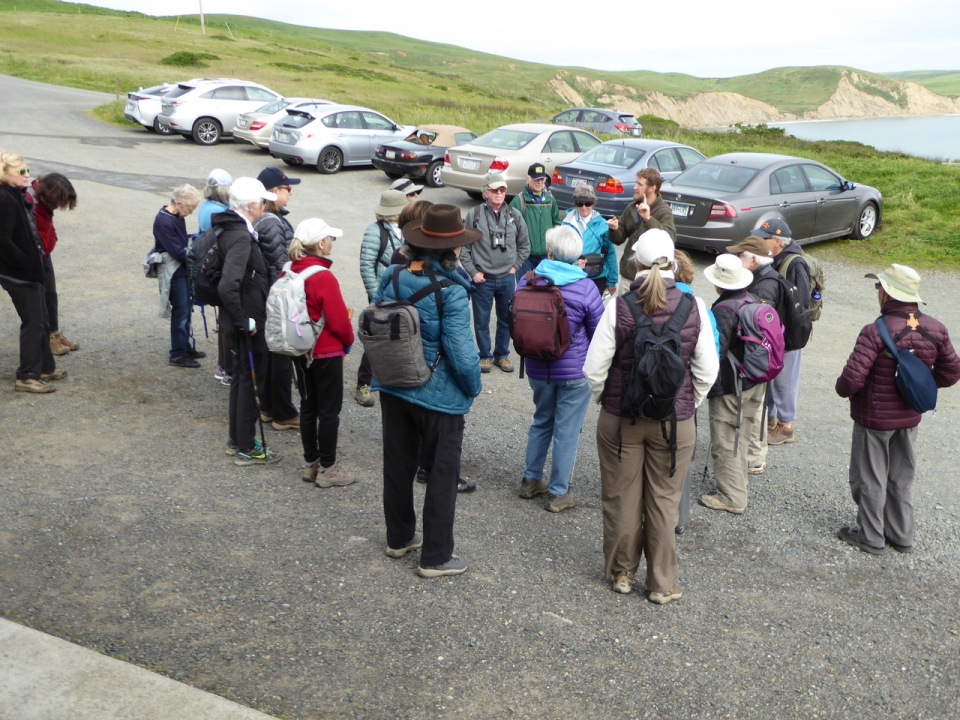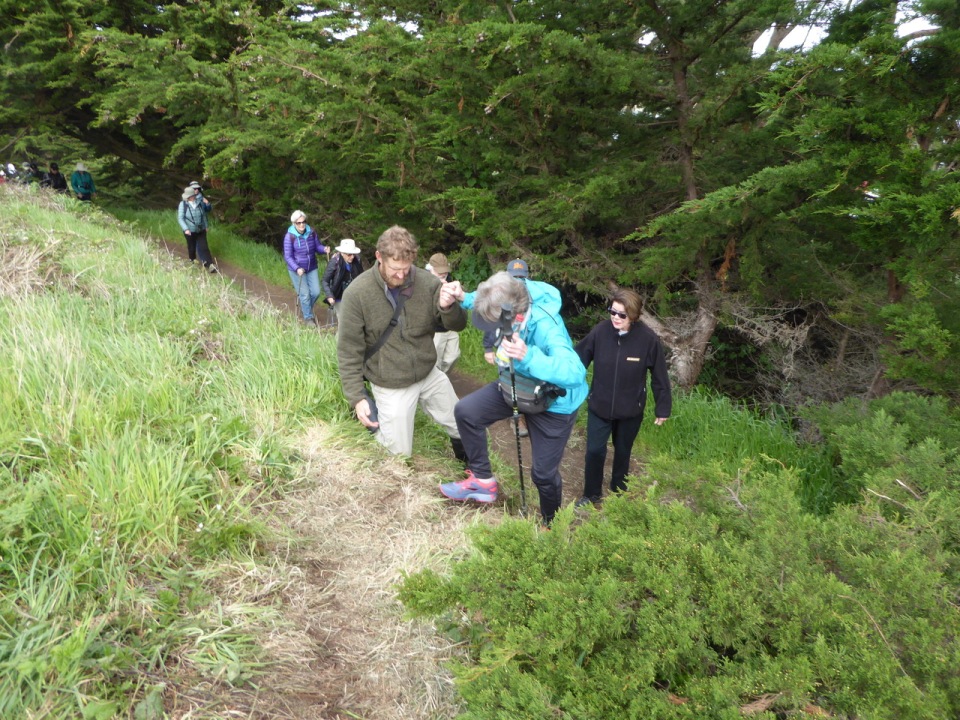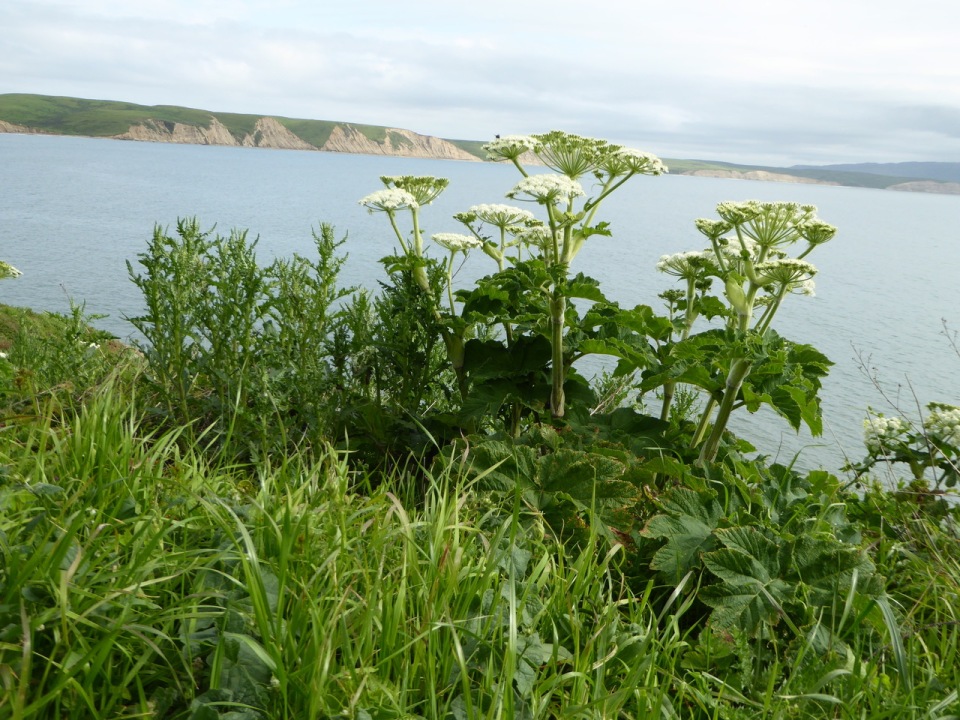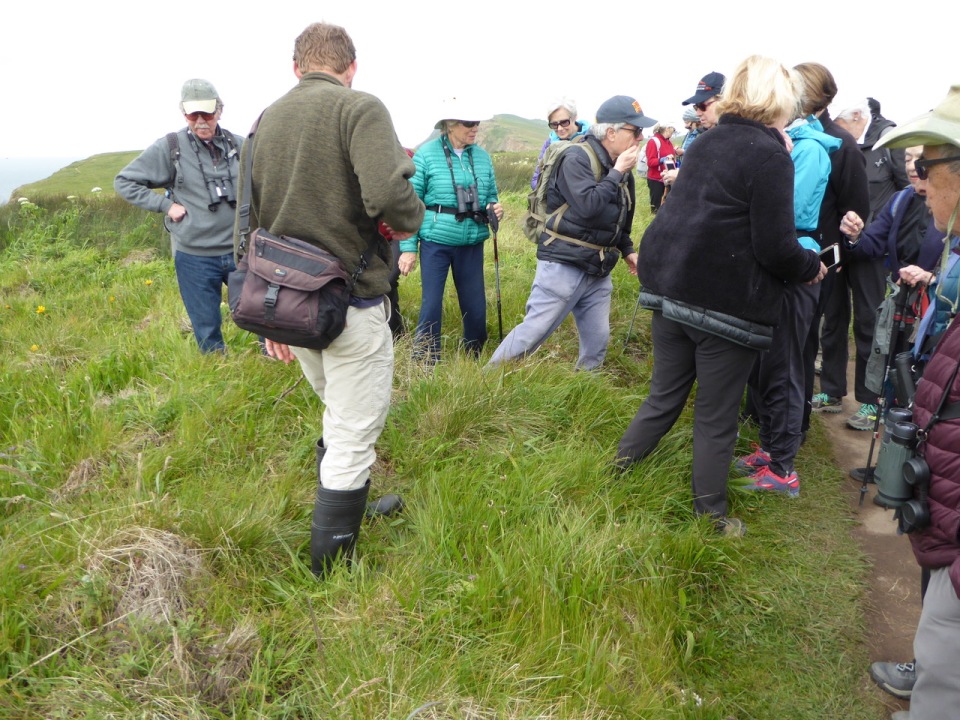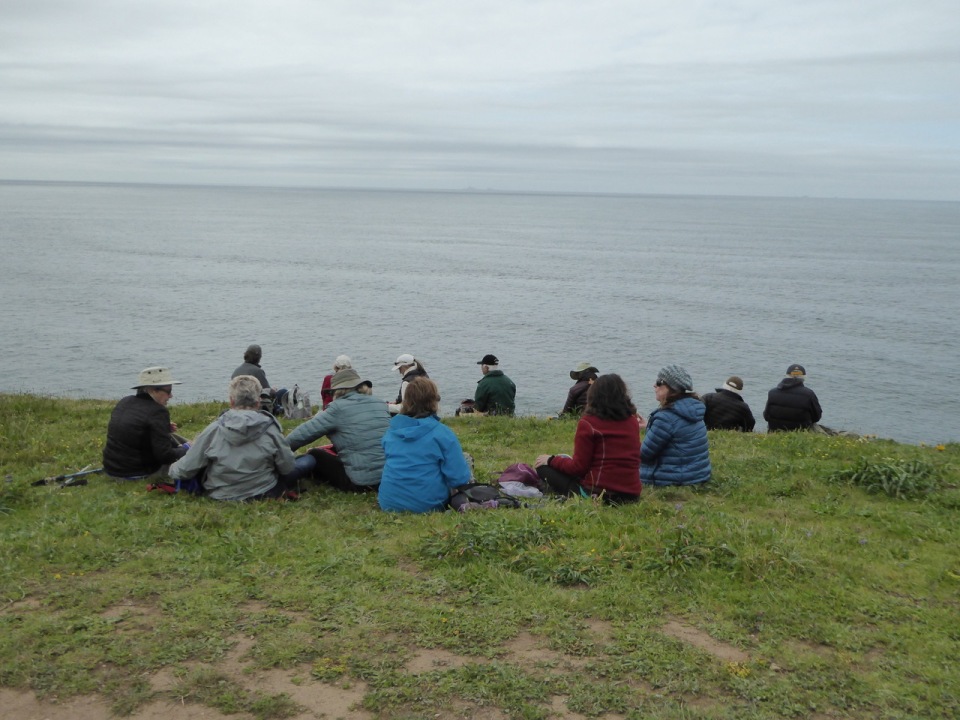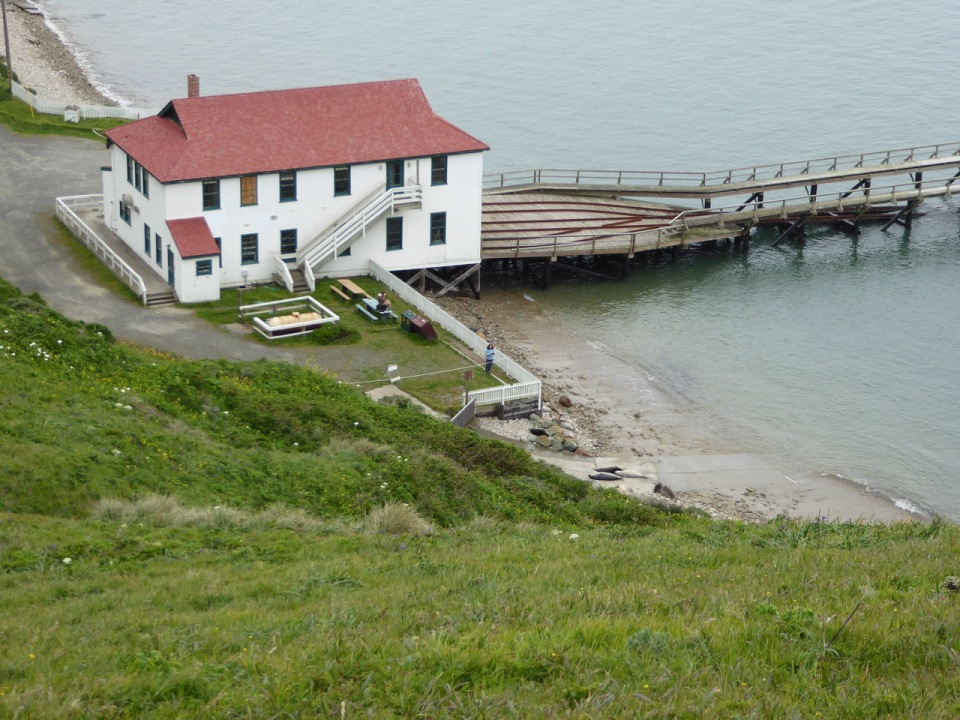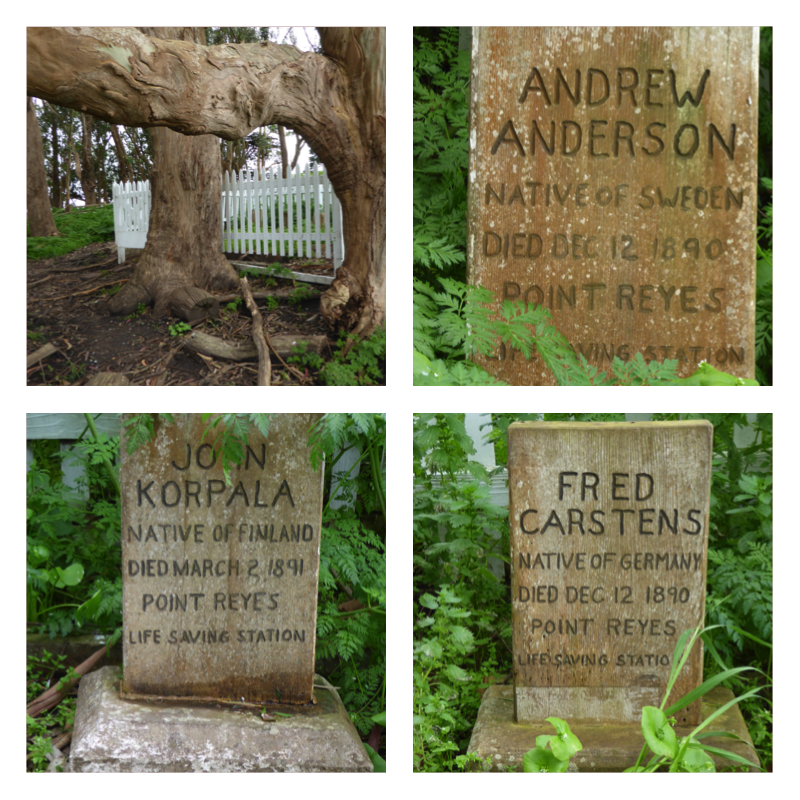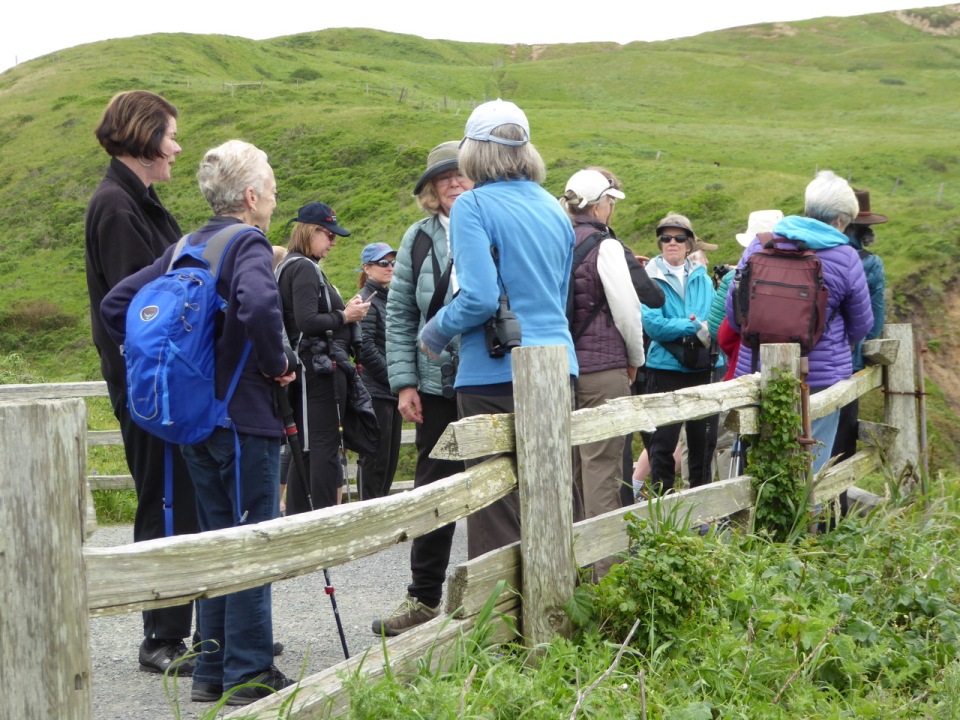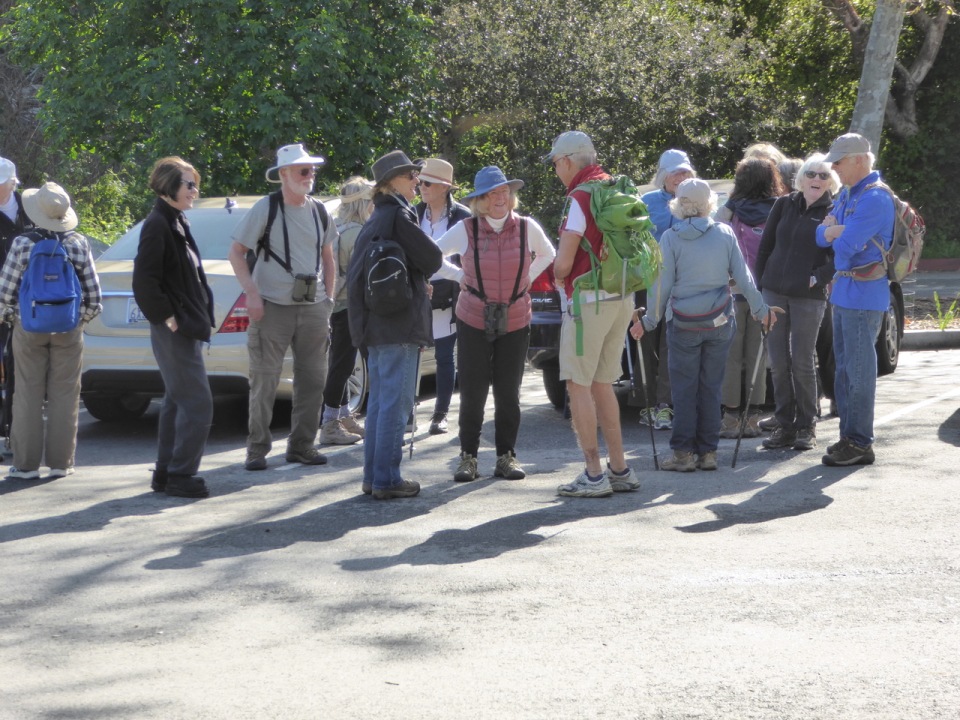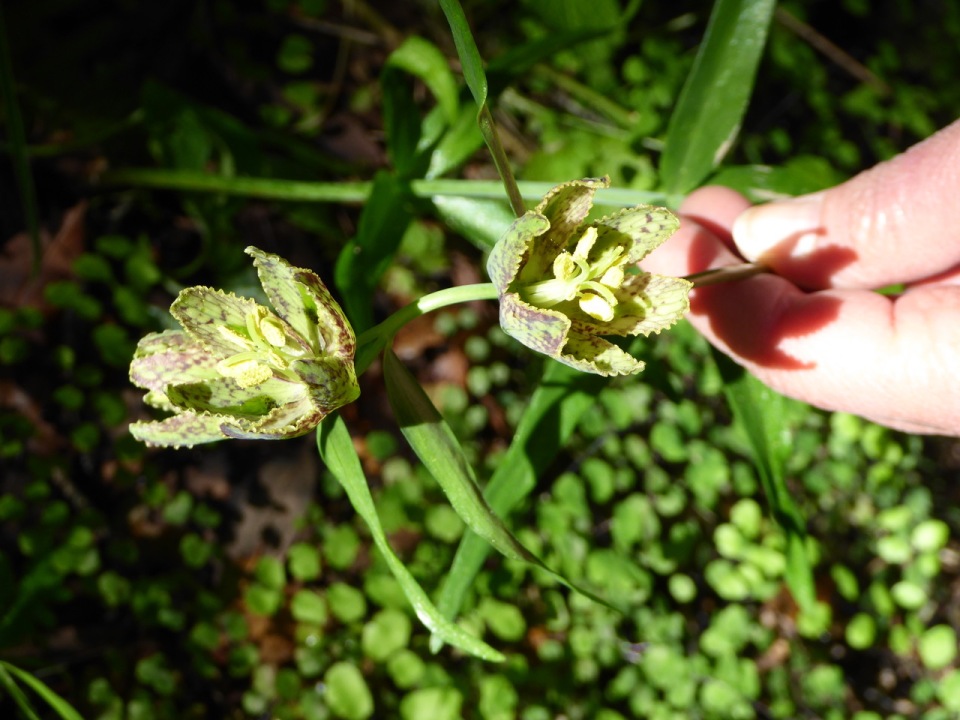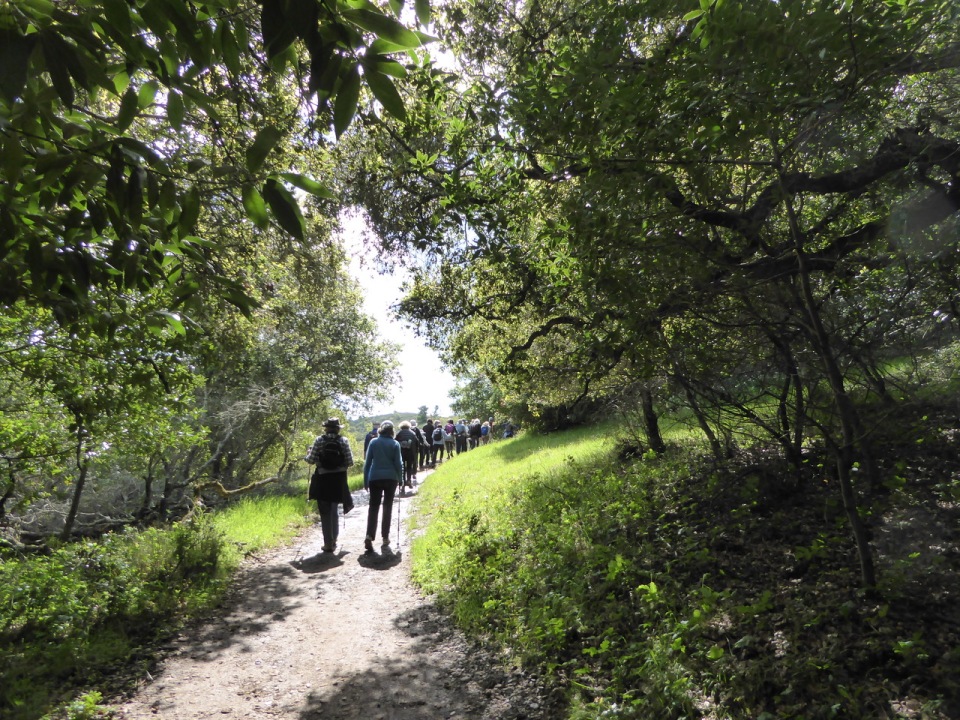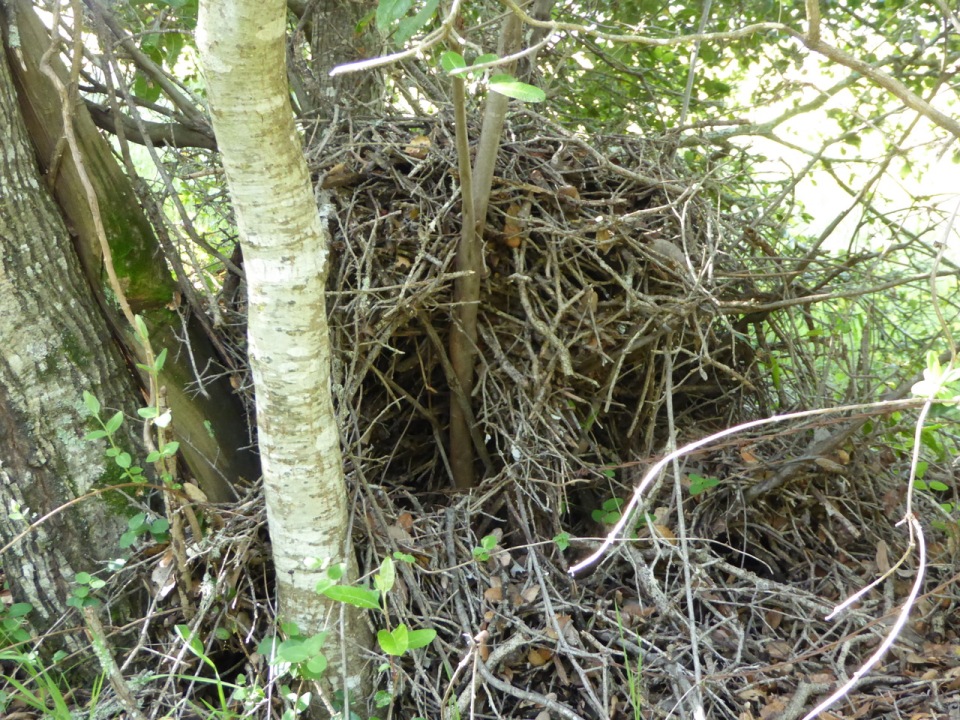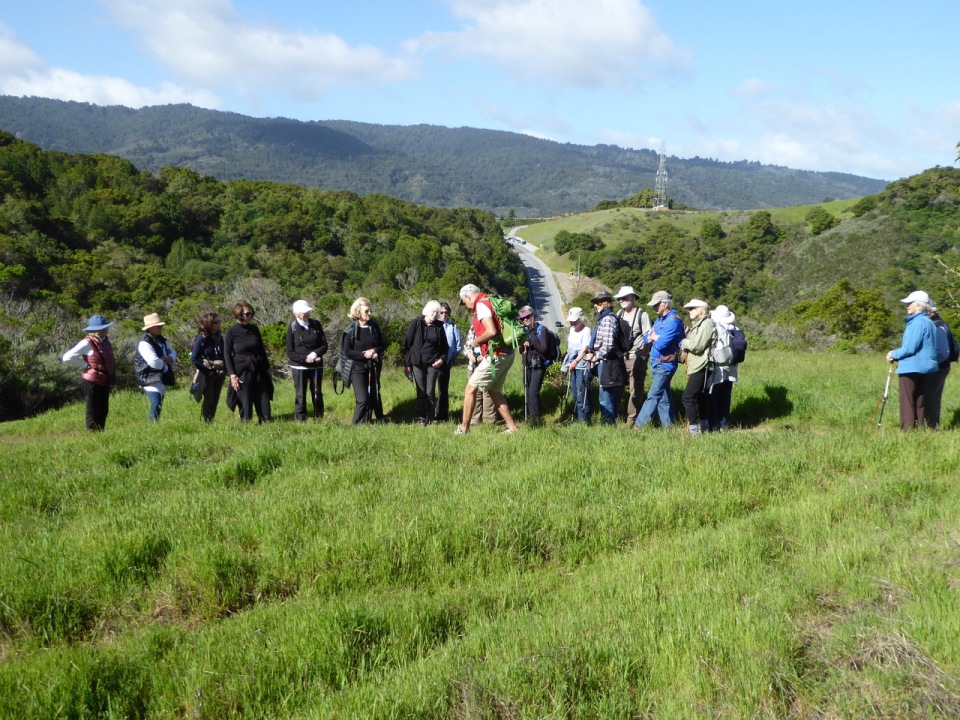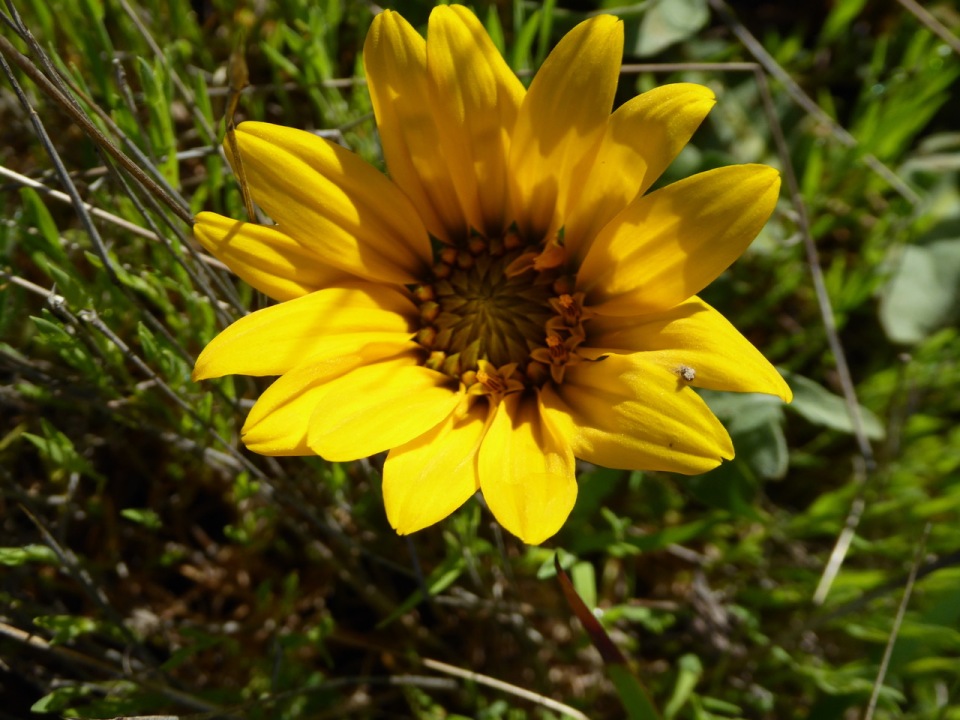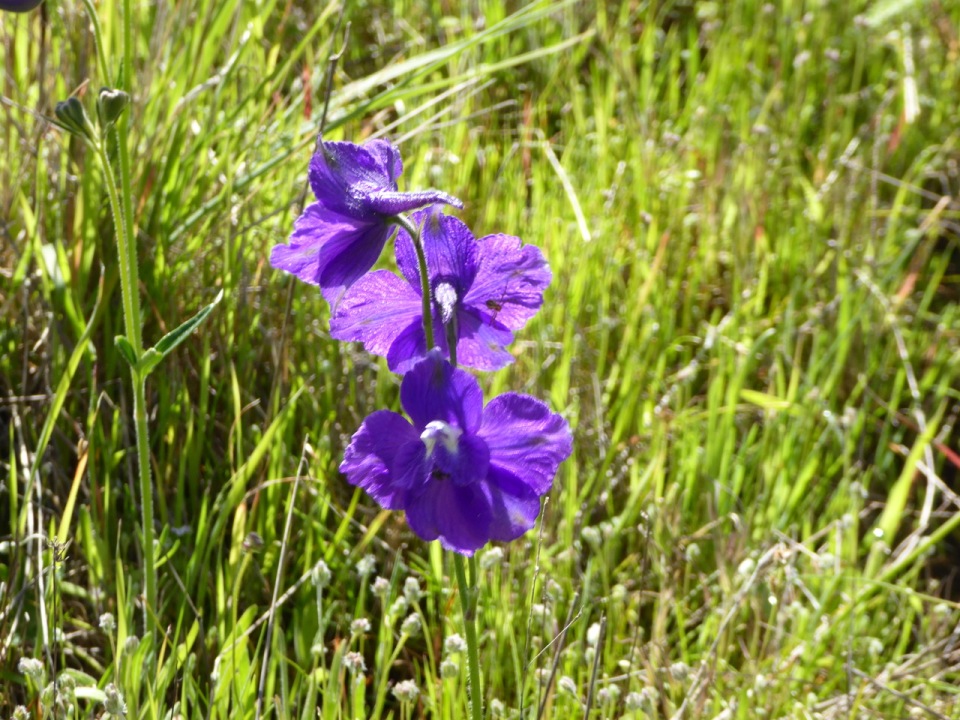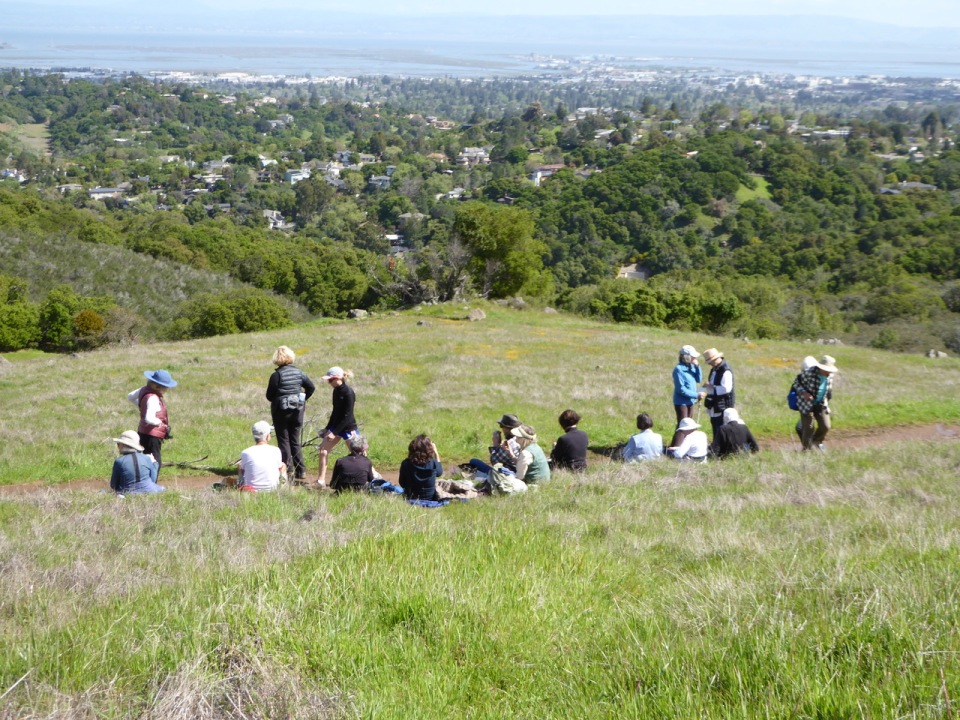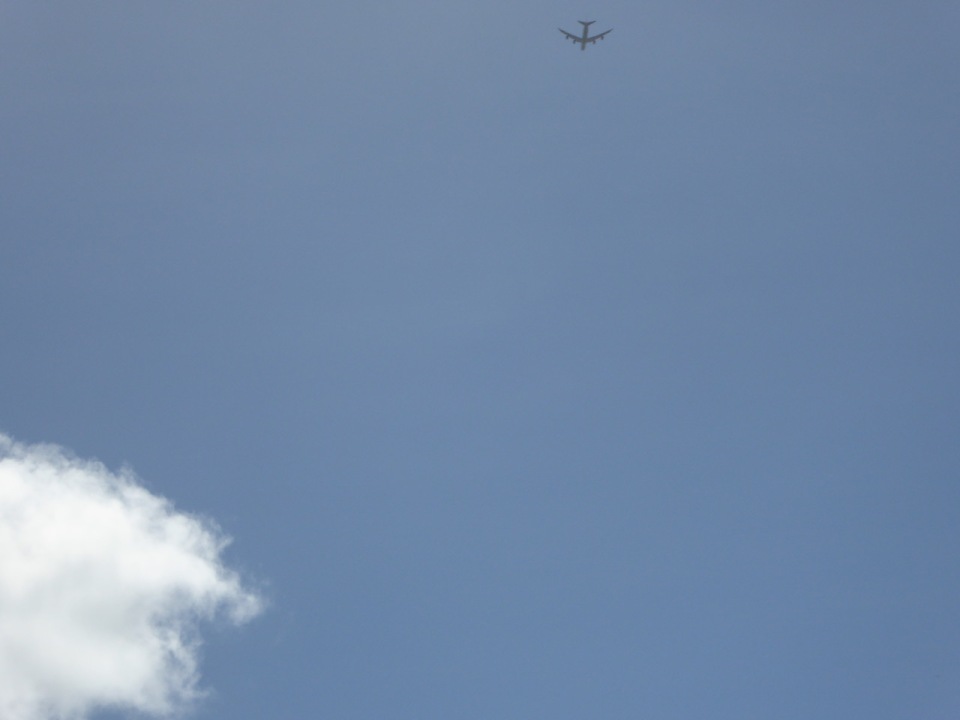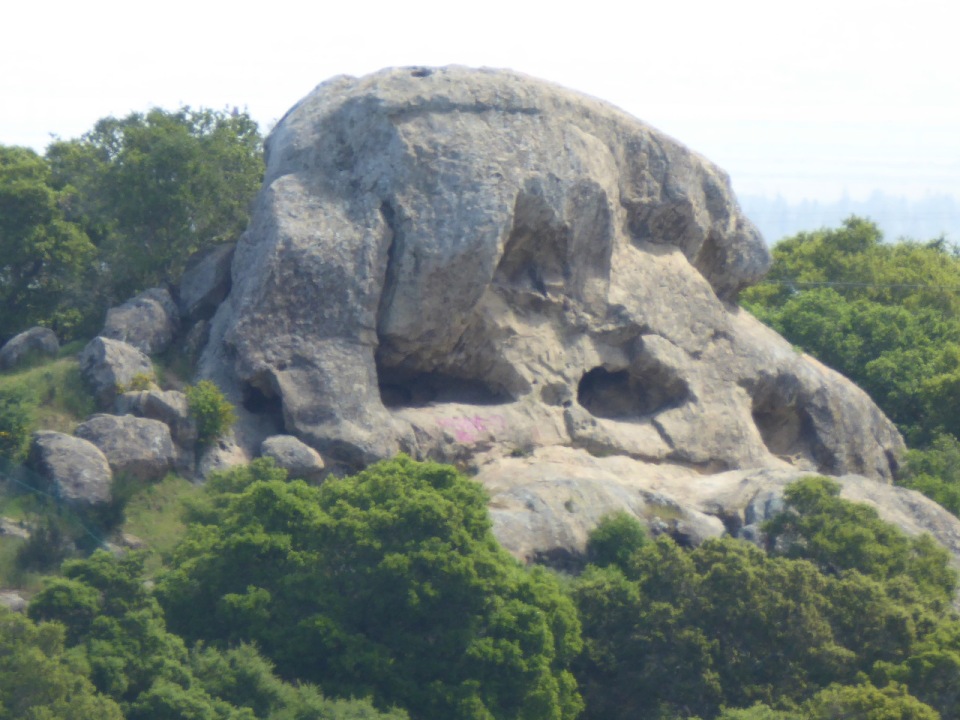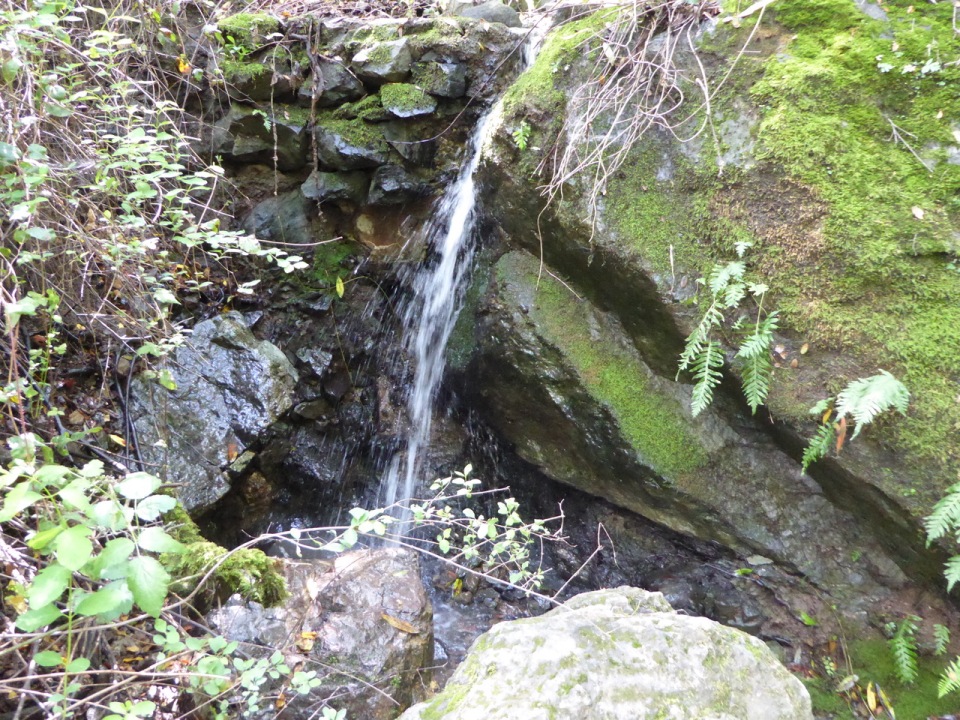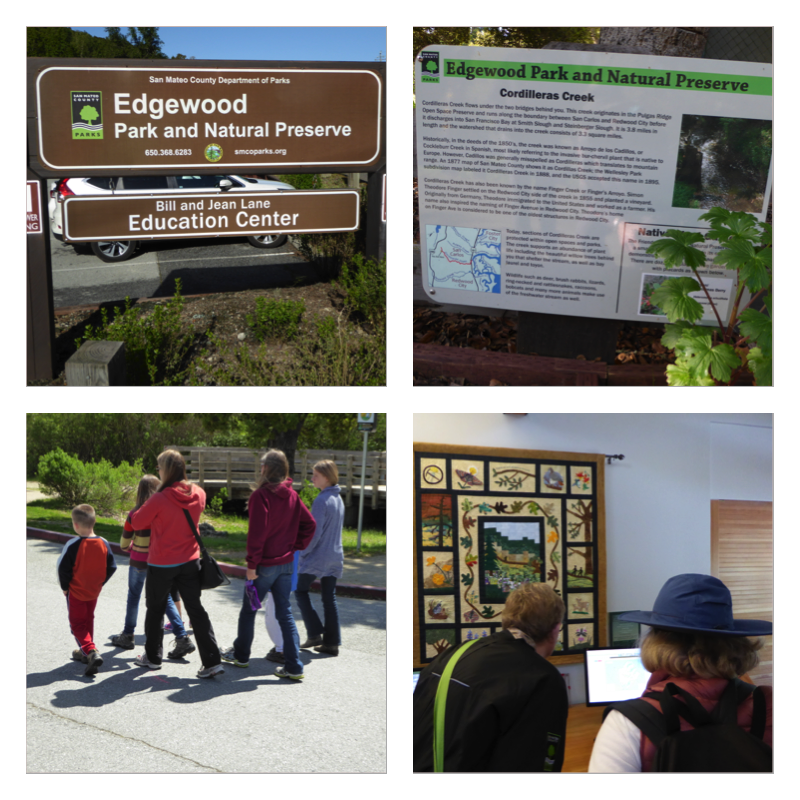Traffic was light on 101lending a welcoming feeling to our penultimate hike for the 2017 spring season. We were here previously in March of 2013 when we explored Pickleweed Park as well as hiking on the Jean and John Starkweather Trail. Our hike today is along San Rafael Bay. San Rafael Bay is described in the Wikipedia entry with the lovely word “embayment” of San Pablo Bay. San Pablo Bay is in turn the northern part of the greater San Francisco Bay – all of it a bit like a Russian nesting (matryoshka) doll.
The Starkweathers moved from San Francisco to Marin in 1956 to raise their family and fell in love with this area. John was a professor of Medical Psychology at the University of California in San Francisco and a community leader. Jean supported John through graduate school at Northwestern in Illinois and then raised their three boys with him in the city followed by their move to a new home in Marin’s Terra Linda. It was those three boys that got her into community and conservation activism when a nearby hillside and haunt of the boys was about to be developed for housing. “One of her sons asked her what would happen to the burrowing owls living there. Jean decided to find out”
https://web.archive.org/web/20120422110012/http://www.marinwomenshalloffame.org/honorees/jean-starkweather-bio.html
https://www.youtube.com/watch?v=LuPuKsRHe1M – video interview with Jean Starkweather http://www.marinaudubon.org/pdf/TheRail_Jan2016_Web.pdf
http://www.marinij.com/article/NO/20151130/NEWS/151139977
Jean Starkweather is part of a memorable tradition of women’s conservation activism in Marin and the San Francisco Bay Area – she’s in great company. Here are just a few examples.
On our hike at Ring Mountain we read of Phyllis Ellman known as the ‘Mother of Botany” who led local conservationist groups to save the area from massive development. This location, the only place on earth where the Tiburon Mariposa Lily is found, was purchased by the Nature Conservancy and deeded over to the Marin County Open Space district in 1995. She was described was as “very knowledgeable and very dogged”. Her work continued in Sonoma County when they moved to Glen Ellen where she became a “founding mother” of the Bouverie Preserve Environmental Education Program . Two of our hikers, Inge and Kit working with 4th graders, are volunteers in this program.
Elizabeth Terwilliger “pioneered environmental education in Marin County. A legend in her time, she led school trips for children until she was 87.” She would come each year to Stinson Beach School where Pat was teaching Kindergarten to share her love of and enthusiasm for nature bringing along many examples of Marin fauna. Two others in our group, Rowena and Jeannie, volunteered in her program and hiked with her. While she accomplished so much more, she is often remembered for getting then President Regan to raise his arms in her “patented” V is for Vulture stance. http://www.terwilligerfilms.org/id2.html
In 1961, three University of California wives from the East Bay, Mrs.Kay Kerr, Mrs. Sylvia McLaughlin and Mrs. Esther Gulick “saw an Oakland Tribune illustration depicting San Francisco Bay mostly filled in and turned into a narrow shipping channel by 2020. Making phone calls, writing letters, holding meetings and collecting $1 from each of thousands of Bay Area residents they created the ‘Save San Francisco Bay Association’ beginning a successful movement to save the Bay from destruction.” They achieved a legislative moratorium against filling the Bay, closure of more than 30 city garbage dumps along the shoreline. (The area of our hike included many dumping areas for San Rafael. ) A halt to the practice of dumping raw sewage into the Bay and establishing a permanent state agency to regulate shoreline development and public access both became a reality. This Bay Conservation and Development Commission (BCDC) was the first-ever coastal zone management agency and a model for many others around the world.” https://www.savesfbay.org/history https://blog.savesfbay.org/2017/02/wetland-restoration-is-working-heres-how/ videos – We’ve hiked in both of these areas. http://www.foundsf.org/index.php?title=SAVING_SAN_FRANCISCO_BAY
In the 1930s, Sepha Evers, Caroline Livermore, Portia Forbes and Helen Van Pelt saved many of Marin’s open space treasures and founded Marin Conservation League which continues their activist tradition today. They worked with others to expand Mt. Tamalpais State Park from its 200 acre nucleus, created Tomales Bay State Park, and assisted in the creation of Golden Gate National Recreation Area and Point Reyes National Seashore. The MCL website highlights “one of the most dramatic chapters in MCL history was the battle to stop 8790 acres of Richardson Bay from being filled – by bull dozing the Tiburon hills and depositing the fill into the bay – turning it into a town for 10,000 people. Today it is the Richardson Bay Audubon Center and Sanctuary.
Another of their signal victories was stopping the commercialization of Angel Island when developers had plans that neither respected the nature of the island nor its important history. Caroline Livermore said of their 14 year campaign to preserve the island, “We really saved it from becoming a cheap Coney Island, which a Nevada firm hoped to develop.” Or can you imagine a resort hotel and yacht harbor in Bolinas Lagoon? It was another developer’s dream derailed.
http://marinconservationleague.org/about-us/history.html
http://www.goodreads.com/book/show/353145.National_Parks_and_the_Woman_s_Voice
===================================================
We circle up before the hike and share the moment. Yes, some dogs are aboard today and you can spot Matt’s poodle, Izzy, peaking out at us.
In the parking area where we gathered and spotted the FLAGship. The Marin County Library sponsors this bus which provides “Storytimes, kid’s songs and games, puppets, crafts another fun kindergarten-readiness activities . . . offers education and health workshops to adults and their children 0 to 5 years old.” All this is at various scheduled times across the county. http://www.marinlibrary.org/flagship/
Another aspect of the Flagship program is “Trips for Kids” – https://en.wikipedia.org/wiki/Trips_for_Kids
The final photo show us talking with the parking attendant who has her chalker in hand, always good to get to know your neighbors.
Getting out on the trail we begin to add the darker blue in the sign to that of the Bay to the not quite cerulean sky, ok not even close but I like the sound of cerulean.
What colors do you think? https://en.wikipedia.org/wiki/Category:Shades_of_blue
Michael identified this brilliant, glowing native plant array as Salt marsh dodder, Dodder Family (Cuscutaceae). Cuscuta salina Engelmann var. major
Peter R. Baye has written a remarkable guide to “Tidal Marsh Plant Species of the San Francisco Estuary” which describes the dodder among many others.
First, a brief introduction to him from our favorite magazine, BAY NATURE, giving you an idea of his remarkable grasp of the subject and his out-of-the-box thinking. https://baynature.org/biodiversity/sea-blite/
His guide is an amazing compilation, a large number of plants – all with fine photos, clear identifications and other markers. He notes whether the plants are Native, Rare or Invasive.
http://www.spartina.org/project_documents/field_guide_tide_plants_low-res_200703.pdf Our salt marsh dodder is found on page 33. Pickleweed is on 9,10 & 11. Spartina is commonly known as “cordgrass” frequently found in coastal marshes. The name comes from the Greek as spartine meaning rope or cord. It also refers to a restaurant in Los Angeles and in Spartina 449, an upscale women’s handbag and accessory company. I think that the first meaning was the intended.
We pass an unusual sign requesting consideration especially from 8 PM to 8 AM, quiet zone/zona de silencio.
Making one small change at Muir Woods brought an enormous difference. . . . https://www.nps.gov/subjects/sound/difference.htm
https://www.nps.gov/subjects/sound/enhance.htm Suggestions to enhance your soundscape – thoughtful and helpful.
http://www.naturesounds.org I recall on some walks we’ve had quiet zones (QZs) which has helped us a lot to get into the natural world we’re walking through.
https://wildstore.wildsanctuary.com/products/ocean-dreams There’s a 1:32 sample. Just came across this site, lots to listen to. I think it brings me back to my early days feasting on radio programs not all natural sounds, of course, but listening brought a special attention that I sometimes don’t hone when I’m watching something.
The dog contingent and their leash holders.
Looking out on San Rafael Bay we see the Marin Islands and spot a passing paddleboarder. https://en.wikipedia.org/wiki/Paddleboarding Long history, try 1781.
http://edition.cnn.com/2017/03/09/sport/chris-bertish-sup-atlantic-crossing/index.html Crossing the Atlantic on a paddleboard.
Back to these small islands which are conveniently named East Marin and West Marin. “The Marin name comes from a Coast Miwok man known as Chief Marin after whom Marin County was named. (and continuing in the wiki account) He is thought to have hidden out there in the 1820s after escaping from Mission San Rafael, before being recaptured and incarcerated at the Mexican San Francisco Presidio.”
In the 20th Century, Thomas Crowley, bought the islands at auction in 1926 for $25,461 in hopes that they would become the western terminus of the Richmond-San Rafael Bridge. Instead they became a family vacation spot for more than 60 years. The Crowley family of San Francisco attempted unsuccessfully to sell them in 1984 asking 4.25 million. They later donated them to the federal government.”
https://en.wikipedia.org/wiki/Marin_Islands https://en.wikipedia.org/wiki/Crowley_Maritime
http://www.nytimes.com/1984/05/08/us/island-deal-bay-views-4.25-million.html http://www.thomashenthorne.com/marin-islands/ – Well written recollection of a Marin realtor who grew up in the area and go out the islands frequently the 80s including a helicopter video fly over of the islands when they were for sale.
http://www.nytimes.com/1994/07/09/obituaries/thomas-b-crowley-79-shipping-executive.html Michael suggested there might be a mystery about this but I couldn’t find it as yet.
The West Marin Island became the largest egret and heron rookery in the San Francisco Bay administered by the U.S. Fish and Wildlife Service. Kit to got to go out
to the West Island area recently and the rookery has sadly disappeared. This is similar to the loss of the long-standing egret nest area in the Redwoods above Audubon Canyon Ranch in Bolinas that had been active since the 1940s. The arrival of bald eagles in the area is one explanation but John Kelly, director of conservation science at Audubon Canyon Ranch said, “That is one theory, but we do not have an exact answer yet.” This also could be an explanation for the loss
of the West Marin Island rookery. http://www.marinij.com/general-news/20140219/opening-delayed-at-famous-bolinas-egret-colony-that-collapsed-last-year
Statuesque Great Egret in the the lagoon next to our trail. It’s the symbol of the Audubon society. http://www.audubon.org/field-guide/bird/great-egret
http://video.nationalgeographic.com/video/egret_great?source=relatedvideo
Clearly waiting for some kind of a gotcha, or perhaps just a bit of skepticism – ah, you’re a hard audience.
Last school days at Redwood High School for this school year, a bravo way to handle a restless class.
Michael asks us, “What is the northern most part of San Francisco?” Izzy has other interests.
The boundaries of three counties converge on Red Rock Island – San Francisco, Marin and Contra Costa. The San Francisco County portion is an incorporated part of the City-county of San Francisco. Leaving your heart in this part of San Francisco would be kind of lonely and probably not what Tony Bennett was envisioning. https://en.wikipedia.org/wiki/Red_Rock_Island https://www.youtube.com/watch?v=r6DUwMnDxEs
We walked along reinforced levees constructed of riprap on both sides of the trail. https://en.wikipedia.org/wiki/Levee https://en.wikipedia.org/wiki/Riprap
Maybe the sound of the waves hitting the levee is yet another kind of Rap music. This looks like it was some solid, Ozymandian installation now doing second duty as riprap. Recycling where once was a dump.
The path has some helpful signs with descriptions and explanations
I waited quite awhile for a good angle to photograph some snowy egrets when this beauty swooped in and perched in the Toyon “hedge” directly in front of me. Pays to be patient and let nature come to you as Armando told us one time.
Here’s a Snowy having a fine feather fluff. From a BAY NAURE article by Rob Lee: (Egrets are also herons; their name derives from “aigrette,” the gorgeous nuptial plumes for which they were hunted almost to extinction in the early 20th century.) https://baynature.org/article/the-courtship-of-herons/ Actually, I think this may be more a cleaning moment rather than part of a courtship pattern but that will have to be determined. http://www.wildernesscollege.com/bird-behavior.html
Here’s a VIMEO VIDEO that I made of some snowy egrets in the lagoon set to a bit of J.S. Bach, Partita No. 6 in E Minor, played by Igor Levit.
https://vimeo.com/221129830
Toyon “berries” or are these buds about bloom? They’ll become red in the autumn – the signature plant of Hollywood. http://calscape.org/Heteromeles-arbutifolia-(Toyon A large number of Toyons had been planted on the lagoon side of our path. Returning in the fall to see them blazing with red berries will be memorable. http://www.theodorepayne.org/poppyprint/13-1.pdf https://nhm.org/nature/blog/california-holly-how-hollywood-didnt-get-its-name
Returning to Pickleweed Park, we picnicked on two joined picnic tables that just fit the group. It felt like medieval moment feasting at a long refectory table at some castle or monastery with good friends pledged to the trail. Plenty of good spirits as well, all that was missing was the mead.
https://en.wikipedia.org/wiki/Mead
From the other end of the table we added yet another view of Mt. Tamalpais, the distinctive profile of Marin on the horizon.
P.S. Should want to remember our previous Pickleweed Park hike, here it is for your perusal. Best thoughts and hugs from here, Lew (alias Z)
https://zulupeacekeeper.wordpress.com/category/spring-2013/page/2/


